Announcing the Spring 2025 PEAK Experiences Awardees
Undergraduate Research and Fellowships is excited to announce the recipients of the Spring 2025 PEAK Experiences Awards. This spring, PEAK Awards will support over one hundred and fifty students from across the university as they tackle a diverse array of projects ranging from an analysis of the use of AI in second-language writing to the development of protocols for pain management and addiction treatment and a study of the effects of long-term spaceflight. Congratulations to the award recipients!
ASCENT AWARDS
 The Influence of Weather Patterns and Urban Development on Consumer Spending Behaviors
The Influence of Weather Patterns and Urban Development on Consumer Spending Behaviors
Awardee: Harshul Agarwal Khoury’27
Mentor: Yakov Bart, DMSB, Marketing
This research explores how weather patterns and city infrastructure development influence consumer spending. I will particularly be analyzing transit changes in urban areas—such as new train extensions, bus lines, and public bike stations—alongside meteorological data to uncover connections between commuting, accessibility, and economic activity. Using statistical models and geographic data, we will identify the impact of transit interventions and weather variability on spending behaviors. The findings will contribute towards helping urban planners and policymakers optimize infrastructure for economic resilience. To best distribute results, they will be shared through mainly academic publications, and digital platforms to engage communities and stakeholders.
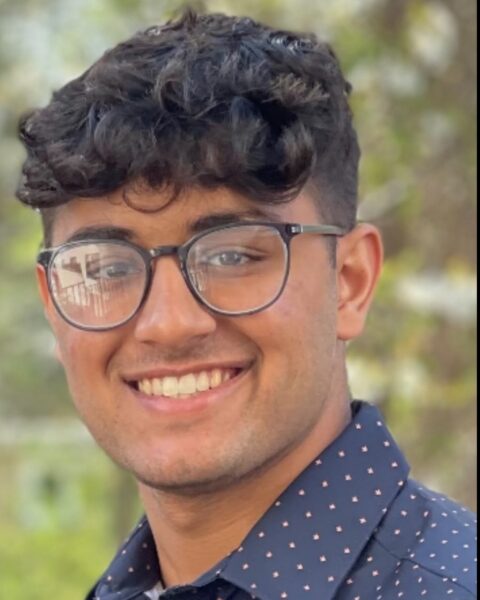
 Analyzing Articulatory Kinematics in Children with Dysarthria and Cerebral Palsy
Analyzing Articulatory Kinematics in Children with Dysarthria and Cerebral Palsy
Awardees: Aditya Ahuja Bouvé’27, Danielle Birchett COS’27
Mentor: Kristen Allison, Bouvé, Health Sciences
This project investigates how speech modification strategies, such as loud and slow speech, affect articulatory movements and speech intelligibility in children with cerebral palsy (CP) experiencing dysarthria. By analyzing data from 13 participants, the study will explore how changes in lip and jaw movements measured using advanced motion capture and acoustic analysis relate to vowel clarity and intelligibility. Findings aim to advance personalized speech therapy approaches for children with CP, addressing a critical gap in therapeutic research. Results will be published as a primary research paper and presented at the Boston Speech Motor Control Symposium with fellow clinicians and communication science researchers.
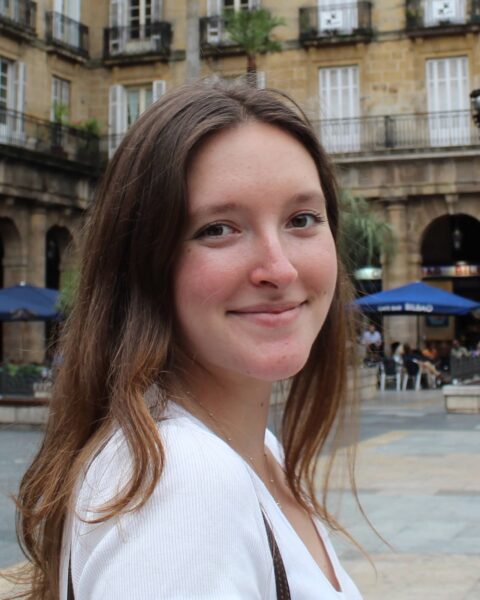 Fleeing School Choice
Fleeing School Choice
Awardee: Rory Armstrong CSSH’26
Mentor: Silvia Prina, CSSH, Economics
This project examines how lottery-based school choice policies influence family migration patterns. It investigates whether families in districts without guaranteed local school placements are more likely to relocate in search of more reliable access to quality education. Using school district data and data from the American Community Survey (2005-2020), the study will analyze migration trends in the 100 largest U.S. cities. The anticipated result is that adverse lottery outcomes drive families to “flee” those districts. These findings suggest economic implications, offering the opportunity to inform policy on education and family mobility, with results shared through research reports and presentations.

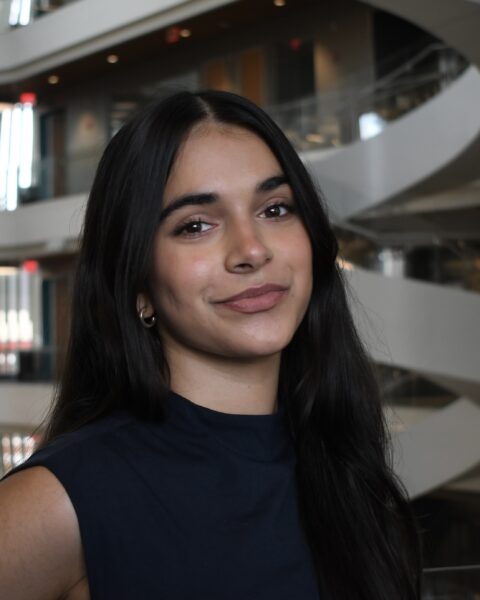
 Analysis of Pseudo-Random Number Generators through Predictive Modeling
Analysis of Pseudo-Random Number Generators through Predictive Modeling
Awardees: Nidhi Bendre Khoury’26, Priyanka Adhikari Khoury’26, Ruchira Banerjee Khoury’26
Mentor: Ariel Hamlin, Khoury, Computer Science
Our project focuses on uncovering vulnerabilities in pseudo-random number generators (PRNGs), essential for secure encryption and simulations. Currently, no standardized method exists to assess their randomness and performance. We will use machine learning models and statistical analyses to assess their predictability, identify patterns, and uncover vulnerabilities. By identifying the biased randomness of PRNG algorithms, we aim to contribute to the field of random number generation and provide practical insights for real-world applications. We aim to present our findings to inform both research and practical use in cryptography and related fields.
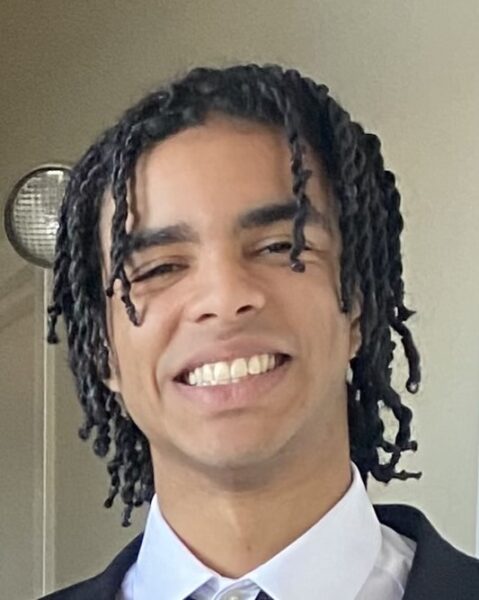 Random Forest Importance Scores for Galaxy Quenching
Random Forest Importance Scores for Galaxy Quenching
Awardee: Ansa Brew-Smith COS’27
Mentor: Jacqueline McCleary, COS, Physics
My project investigates galaxy quenching, where star formation in galaxies drops below a threshold. Using data from the TNG100 simulation and a random forest classification algorithm, I will identify key astrophysical parameters influencing quenching, analyzing variations by galaxy mass and type (central or satellite). Results will be compared with observational data to evaluate alignment with current astrophysical theories. Findings will be shared through a peer-reviewed research paper and a presentation at RISE 2025, advancing our understanding of galaxy evolution while providing valuable insights into machine learning applications in astrophysics.
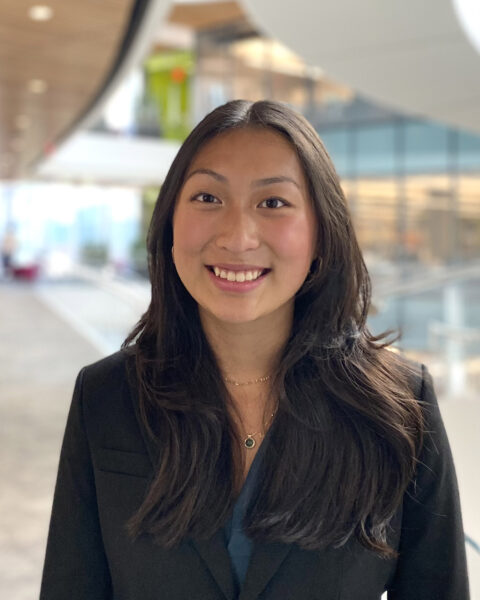 Amending the 3D Immunocytochemistry Protocol for Neurons Derived from Neonatal Rat Brainstems
Amending the 3D Immunocytochemistry Protocol for Neurons Derived from Neonatal Rat Brainstems
Awardee: Iris Chang COS’26
Mentor: Abigail Koppes, COE, Chemical Engineering
Immunocytochemistry is a technique that uses fluorescent antibodies to identify different types of proteins and cells. The current protocol for immunocytochemistry in 3D cell culture includes three lengthy incubation steps, which requires leaving diluted protein labelling antibody solutions in the cells overnight. My lab’s research with Parkinson’s involves adding the disease’s pathological proteins to the cells. The duration of the incubation steps may negatively impact the integrity of these proteins. This project aims to decrease the length of the incubation steps without compromising the signal of the antibodies.
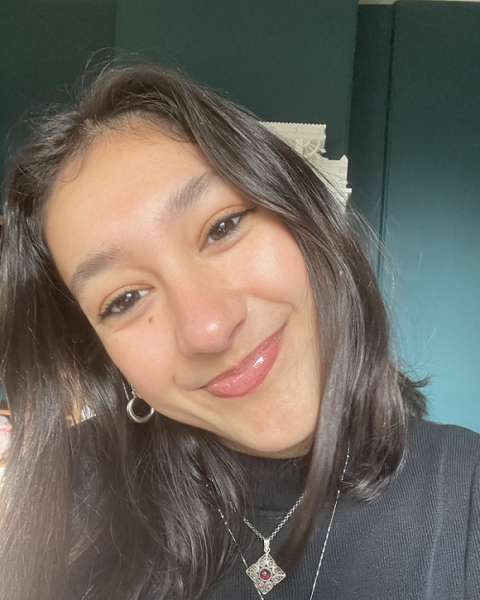 Evaluation of Real-Time Air Quality Forecasting in July 2024
Evaluation of Real-Time Air Quality Forecasting in July 2024
Awardee: Olivia Ciaravino COE’25
Mentor: Yang Zhang, COE, Civil & Environmental Engineering
In this project, an advanced air quality forecasting model called the Weather Research and Forecasting Model Coupled with Chemistry and Greenhouse Gasses (WRF-chem-GHG) will be evaluated to assess the model’s capability to accurately predict ozone (O3) and particulate matter (PM2.5). It is important these pollutants are monitored because they are detrimental to human health. Furthermore, air quality forecasting models are an important tool to monitor local pollution hotspots, which are often located in areas of low socioeconomic position, so that informed and equitable air quality policies can be made.
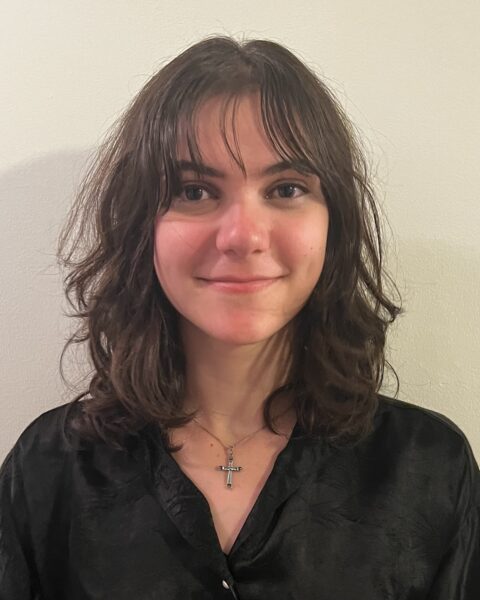 Investigation of the Roles of Oxygen Tension & Adenosinergic Signaling on NK Cell Effector Function
Investigation of the Roles of Oxygen Tension & Adenosinergic Signaling on NK Cell Effector Function
Awardee: Mary Danias Bouvé’26
Mentor: Stephen Hatfield, Bouvé, Pharmaceutical Science
The A2A receptor (A2AR) pathway is governed by oxygen levels and plays a prominent role in antitumor immune cell suppression. This project aims to determine the effects of oxygen tension and A2AR modulation on effector function of Natural Killer (NK) cells, which are currently at the forefront of many developing cancer immunotherapies. This will be done by analyzing NK cell killing ability through live cell imaging and measurement of cytokine production under various conditions related to oxygen tension and A2AR modulation. Findings will improve understanding of cancer immunity and contribute to future publications. Results will be shared at RISE.
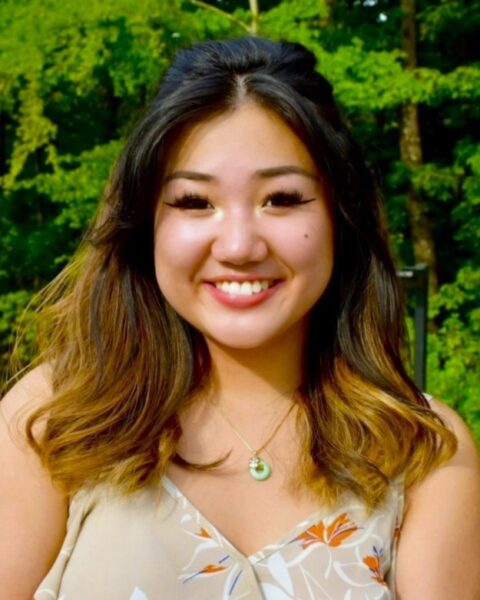 Design and Simulation of Ultrafast Superconducting Logic Gate
Design and Simulation of Ultrafast Superconducting Logic Gate
Awardee: Faith Degawa COE’27
Mentor: Marco Colangelo, COE, Electrical and Computer Engineering
This project aims to advance high-speed, energy-efficient data processing by designing on-chip integrated terahertz (THz) optoelectronic logic gates (TOELGs), which incorporate optical and electronic technologies. By leveraging quantum materials and superconducting transmission lines, these gates will operate in the THz frequency range, achieving low-power, ultrafast computing. This innovation is critical for next-generation technologies like advanced computing, optical networks, and real-time data analysis. Over 10 weeks, I will train on ultrafast lasers, run simulations, and collect experimental data to refine the design. Outcomes include a validated model, a dataset on signal behavior, and dissemination at RISE, Source, and scientific conferences.
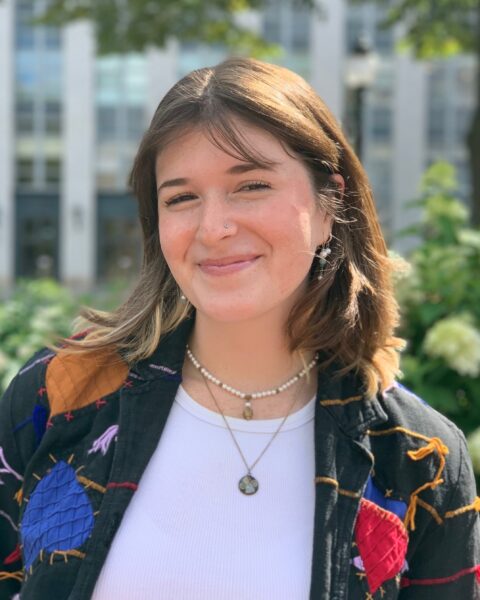 Assessing the Antimicrobial Stewardship Practices of a Leading Tertiary Hospital in Ghana
Assessing the Antimicrobial Stewardship Practices of a Leading Tertiary Hospital in Ghana
Awardee: Ariana Eiseman Bouvé’25
Mentor: Tamara Jimah, Bouvé, Health Sciences
Antimicrobial/antibiotic resistance due to overprescription persists as a major global health issue with drastic clinical and economic consequences especially in low- and middle-income countries. Existing antimicrobial stewardship (AMS) programs protect the efficacy, availability, and access to these infectious disease management medications. Using the CDC assessment tool, we aim to assess strengths and areas for improvement of an AMS program at Komfo Anokye Teaching Hospital in Kumasi, Ghana by conducting surveys and interviews with involved hospital staff. Study results will be shared with Ghanian policymakers and at conferences and seminars.
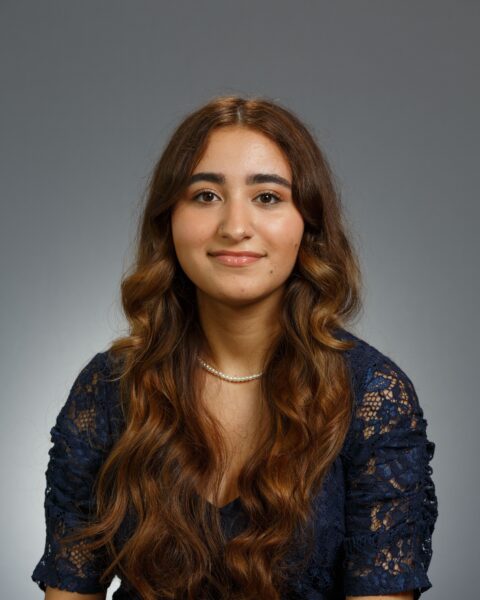 Identifying Positive and Negative Association Terms in Narrative Recalls from Trauma Victims
Identifying Positive and Negative Association Terms in Narrative Recalls from Trauma Victims
Awardee: Jasmine Elsayed COS’25
Mentor: Amantia Ametaj, Bouvé, Health Sciences
Trauma significantly impacts communication, affecting speech coherence and fluency. My research, part of the PATH (Perspectives About Trauma and Health) study, examines how trauma survivors narrate their experiences, focusing on linguistic features such as the use of positive and negative association terms during recall. By analyzing transcribed interviews, I aim to uncover how trauma impacts language, revealing barriers to care and recovery. This work will inform therapeutic practices, like narrative therapy, and support inclusive healthcare policies. Findings will be presented at RISE and potentially published, advancing understanding and support for trauma-affected populations.
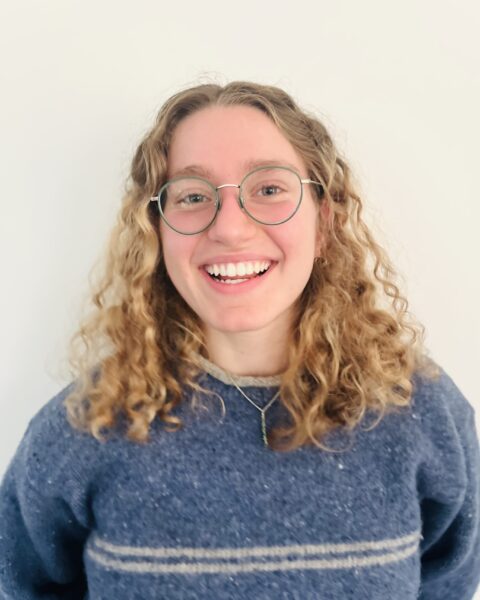 Shape-Morphing Directional Steering Model for Tumbling COBRA Lunar Exploration Robot
Shape-Morphing Directional Steering Model for Tumbling COBRA Lunar Exploration Robot
Awardee: Dorthea Geroulakos COE’26
Mentor: Alireza Ramezani, COE, Electrical and Computer Engineering
The goal of this project is to engineer a bench-top mechanical setup to study the potential of steering snake robot COBRA’s tumbling locomotion through shape transformations. COBRA connects its head and tail to form a wheel-like structure when tumbling down craters to collect data samples. Currently only propelled in the direction of gravity, this project aims to validate simulations on a light-weight model to prove transforming the size and shape of COBRA’s loop from circular to elliptical could allow it to steer itself in the desired direction. I plan to showcase the mechanism’s results in the Spring 2025 RISE showcase.
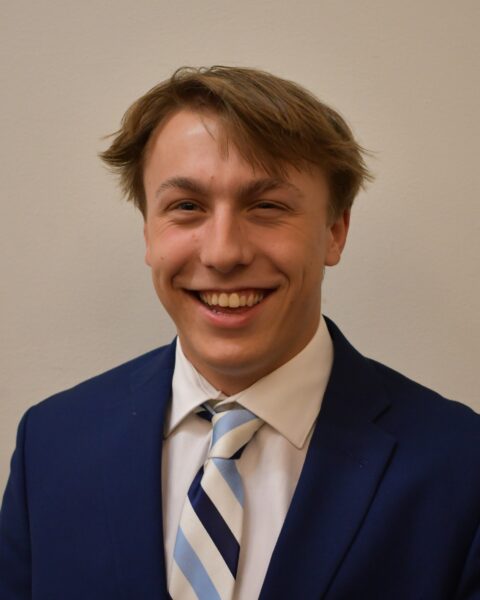 Mechanisms of Bismuth-Free Cuo Electrodes in Zn-Cuo Cells with Differing Depths of Discharge
Mechanisms of Bismuth-Free Cuo Electrodes in Zn-Cuo Cells with Differing Depths of Discharge
Awardee: Kenneth Graham COE’26
Mentor: Yogeshwaran Agilan, COE, Chemical Engineering
This project aims to investigate how bismuth additive affects the cycling process of Zn-CuO alkaline batteries. The Zn-CuO chemistry is a low-cost, high energy density rechargeable solution that will improve the viability of renewable energy sources by allowing better energy storage. To test this plain CuO electrodes will be assembled into cells and cycled to different depths of discharge, after which will be subjected to testing including operando EIS and Raman spectroscopy, XRD, SEM, and EDS. These results will be compared against existing data for CuO electrodes containing the bismuth additive and will be presented at RISE.
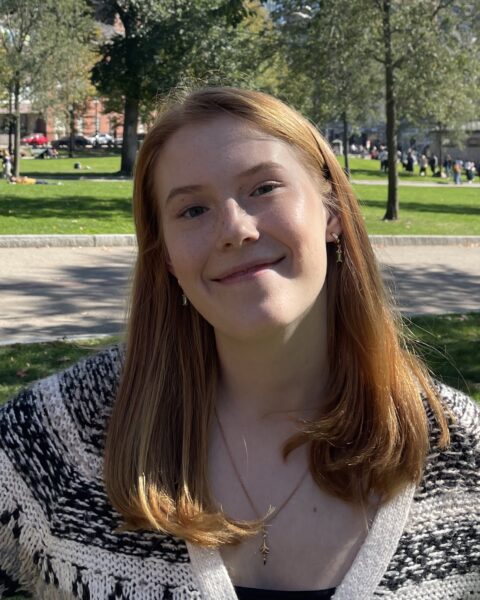 Biomechanics of Bovine Scleral Collagen Fibrils under Different Conditions
Biomechanics of Bovine Scleral Collagen Fibrils under Different Conditions
Awardee: Anna Grankin COE’26
Mentor: Jeffrey Ruberti, COE, Bioengineering
Myopia is an eye condition that stretches the sclera, the white, collagen-rich tissue surrounding the eye. As these fibrils weaken, the tissue no longer supports the optic nerve and becomes more susceptible to damage. I am proposing a project to mechanically test these fibrils to gain insight into their biomechanics. I hypothesize that certain treatment conditions will alter their stress-strain curves, and this is an area that is currently lacking in research. Understanding the biomechanics of scleral fibrils will pave the way for effective myopia and glaucoma treatments. I plan to present my findings from this investigation at RISE.
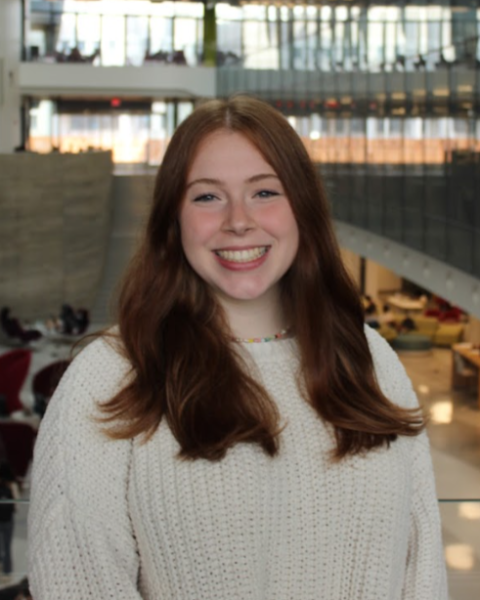 Using Generative AI as a Learning Tool in a Fluid Mechanics Classroom
Using Generative AI as a Learning Tool in a Fluid Mechanics Classroom
Awardee: Katherine Growney COE’26
Mentor: Marguerite Matherne, COE, Mechanical & Industrial Engineering
This project examines the behavior of a custom GPT trained on ChatGPT and fluid mechanics concepts in the context of a large-enrollment undergraduate fluid mechanics class. The goal of the project is to have a conversational language model that can be used as a learning tool for both students and instructors. Ultimately, this project hopes to reduce the uncertainties and fear around using generative AI in the classroom, thus enabling educators to introduce a new resource to their students.
 Developing a Hydrologic Model for Major Maine Rivers Incorporating Reservoir Routing
Developing a Hydrologic Model for Major Maine Rivers Incorporating Reservoir Routing
Awardee: Caleb Hagner COE’27
Mentor: James Dennedy-Frank, COS, Marine & Environmental Sciences
In light of recent record streamflows and major flooding in Maine, building a robust hydrologic and hydraulic model with the resolution and fidelity to predict how streamflow will vary in a future climate and depending on management decisions will be critical to help water resource managers plan for the future. This project will develop a software skeleton based on the Variable Infiltration Capacity (VIC) and Routing Application for Parallel computatIon of Discharge (RAPID) models to explore the effect of dams on Maine flooding that has the capacity to later be updated with higher-resolution inputs. Results will be presented at RISE.
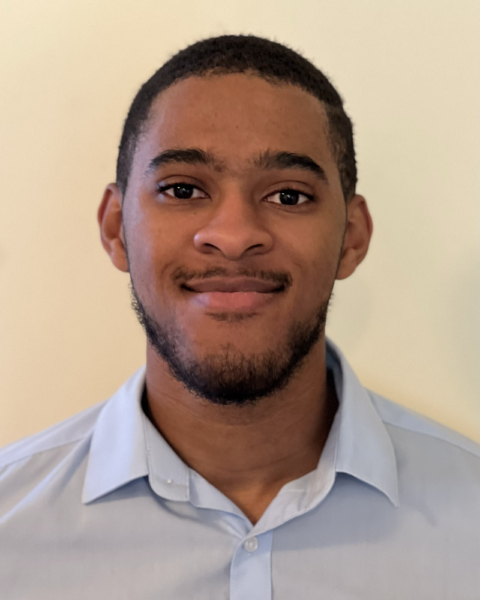 Control of Bacterial Surface Pili in Acinetobacter baumannii
Control of Bacterial Surface Pili in Acinetobacter baumannii
Awardee: Everett Hay COS’25
Mentor: Edward Geisinger, COS, Biology
Acinetobacter baumannii is a multidrug-resistant bacterial pathogen. Bacteria have pili, hairlike appendages, which are used to move, uptake or transfer DNA, and adhere to surfaces, contributing to evolution of resistance and disease. How A. baumannii controls pili formation is not understood. Our goal is to understand how A. baumannii uses BfmRS, a global regulator of antibiotic resistance and disease severity, to control pili production and functions. This research can lead to new inquiries into how to prevent and treat A. baumannii infections. I plan to share my research in BIOL 4900 and at RISE.
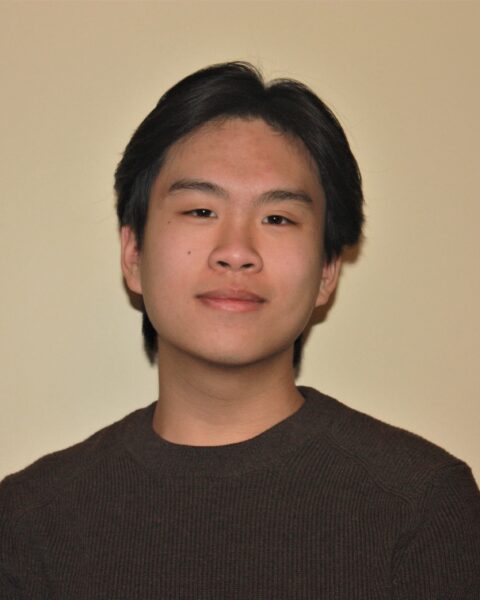 Examining the Effects of Aging on Cerebrovascular Reactivity During Breath Holding Using fNIRS
Examining the Effects of Aging on Cerebrovascular Reactivity During Breath Holding Using fNIRS
Awardee: Keith Huang Bouvé’27
Mentor: Erin Meier, Bouvé, Communication Sciences & Disorders
This project uses functional near-infrared spectroscopy (fNIRS) to examine how cerebrovascular reactivity (CVR) changes along the lifespan. A set of neurologically healthy adults (18-70 y.o.) were asked to hold their breaths while staying still and undergoing an fNIRS scan. Previous literature indicates a negative relationship between age and CVR, and this study expands the age range to see if this relationship holds true across a larger range of the lifespan.
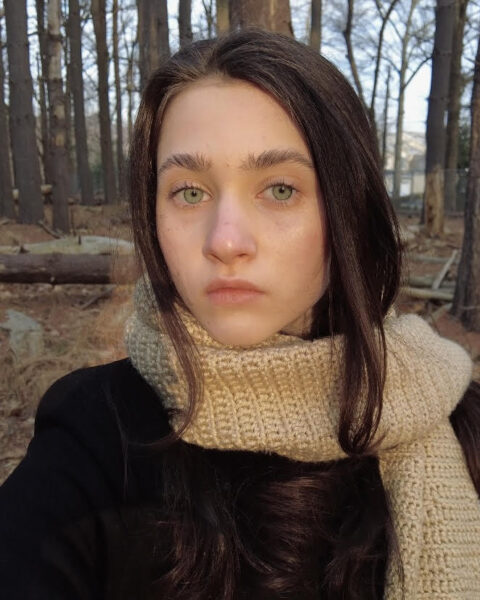 Comparing Surfactant Additives to Reduce Corrosion in Alkaline Zn-Ni Batteries
Comparing Surfactant Additives to Reduce Corrosion in Alkaline Zn-Ni Batteries
Awardee: Grace Jansen COE’27
Mentor: Joshua Gallaway, COE, Chemical Engineering
Alkaline zinc-nickel batteries present a safe, inexpensive alternative to lithium-ion batteries for grid-scale storage of renewable energy. However, alkaline electrolytes cause zinc corrosion, which consumes valuable active material and detracts from a cell’s capacity. Introduction of organic surfactants, including SDBS and PEG, have shown promise in reducing corrosion rates. Baseline, SDBS-, and PEG-modified electrodes will be fabricated, assembled into pouch cells, and cycled, enabling their electrochemical performances to be compared. Changes in surface morphology for each cell type after zero (pristine), ten, and fifty cycles will be observed using scanning electron microscopy. Data will be presented at Northeastern’s RISE Expo.
 Effects of Aging and Cognition from Dual Discourse Tasks on Language Production
Effects of Aging and Cognition from Dual Discourse Tasks on Language Production
Awardee: Shriya Karthikvatsan Bouvé’25
Mentor: Erin Meier, Bouvé, Communication Sciences & Disorders
This study aims to investigate age-related dual-task costs on language production, focusing on content, fluency, and grammaticality. Using CHAT/CLAN software, I will analyze language samples from 32 participants (aged 18-70) who completed a Dual Discourse task, either standing or walking. Measures of content (type/token ratio, lexical diversity), fluency (words per minute, fillers), and grammaticality (mean length of utterance, clauses per utterance) will be coded and analyzed. The study will compare language output differences between younger and older adults, exploring the impact of aging and dual-task demands on speech. I will present my research at the annual RISE conference.
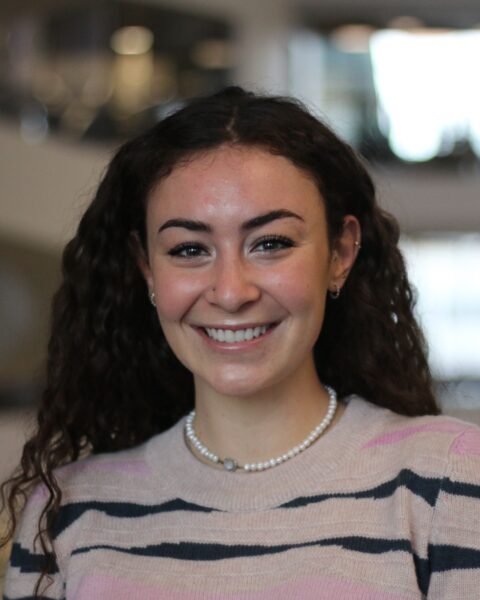 Anxiety and Social Rejection in Adolescents
Anxiety and Social Rejection in Adolescents
Awardee: Eliana Katzin COS’25
Mentor: Alexandra Rodman, COS, Psychology
The liking gap can be described as a social phenomenon where one expects their positive views of an individual to contradict perceived negative views that said peer holds about them. My project focuses on the relationship between the liking gap (also known as the mismatch bias) and severity of anxiety symptoms in an adolescent population of females versus males. I will use archival data from Rodman et al., (2017) where 99 participants indicated how much they liked a peer based on an image and how much they believed the “peer” would like them in return.
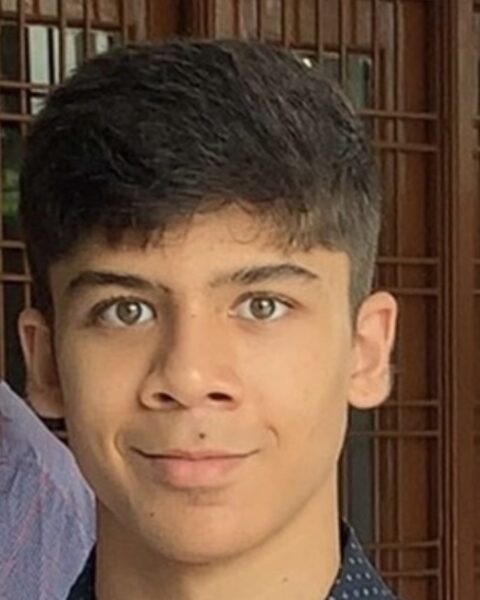 Refining 3D Brain Models with AtlasViewer for Enhanced fNIRS Analysis of Post-Stroke Aphasia
Refining 3D Brain Models with AtlasViewer for Enhanced fNIRS Analysis of Post-Stroke Aphasia
Awardee: Pratham Khare COS’27
Mentor: Erin Meier, Bouvé, Communication Sciences & Disorders
My project aims to enhance brain mapping to understand neural mechanisms in people with post-stroke aphasia difficulty in speaking or language comprehension after a stroke. By integrating digitizer data 3D spatial coordinates of the head and head measurements with AtlasViewer software, which visualizes brain anatomy, I will create accurate participant-specific models. These models will improve the interpretation of fNIRS results, which measures brain activity. This is crucial for identifying neural mechanisms and activation patterns in post-stroke aphasia patients. I plan to share my findings through presentations, making them accessible to a larger audience and advancing stroke recovery research.
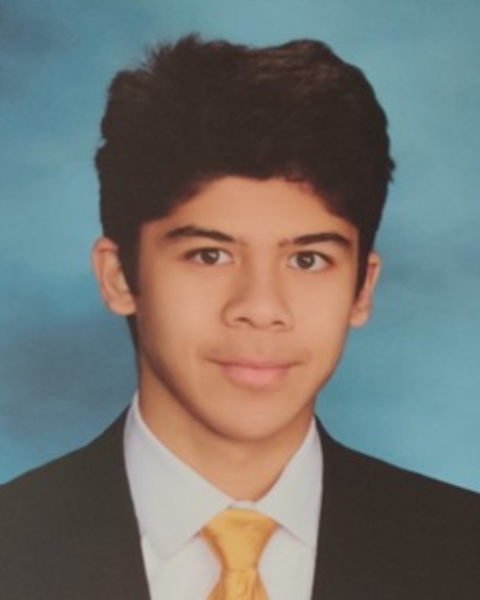 Finding Lasting Shifts in Functional Near-Infrared Spectroscopy Language Mapping in Stroke Survivors
Finding Lasting Shifts in Functional Near-Infrared Spectroscopy Language Mapping in Stroke Survivors
Awardee: Priyansh Khare COS’27
Mentor: Erin Meier, Bouvé, Communication Sciences & Disorders
The project eventually aims to evaluate the test-retest reliability of fNIRS tasks and measurements of aphasic individuals. By analyzing data changes in language skills and brain activity of individuals performing semantic matching tasks over two time points, the study seeks to determine if language ability changes truly map to expected brain activity patterns. Data processing will be the emphasis since this is a big task. This is vital for studying early stroke recovery because in such patients, we expect changes in such metrics. We must be certain that the tasks being used reflect actual recovery and not just inconsistent measurements.
 Data Enhancement of Sustainable Polymeric Foams for Machine Learning Optimization
Data Enhancement of Sustainable Polymeric Foams for Machine Learning Optimization
Awardee: Ashli Lao COS’27
Mentor: Diego Alzate-Sanchez, COS, Chemistry & Chemical Biology
In everyday life, polymeric foams are used for a variety of applications. Frontal ring opening metathesis polymerization (FROMP) is an energy-efficient alternative to traditional techniques that create these foams. By providing a diverse synthetic dataset, a machine learning model can help to determine the most important factors in this process. Based on these results, polymeric foams may be designed and manufactured in a more detailed and sustainable fashion. High predictive accuracy in determining whether a reaction will undergo FROMP to form a foam can indicate success. These research findings will be shared at Northeastern’s RISE expo.
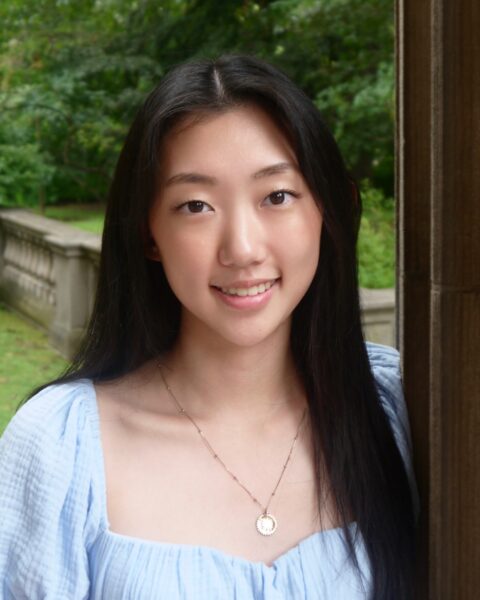 Exploring the Mechanistic Basis of Color Sequestration in Cephalopod Chromatophores
Exploring the Mechanistic Basis of Color Sequestration in Cephalopod Chromatophores
Awardee: Joy Lee COS’28
Mentor: Leila Deravi, COS, Chemistry & Chemical Biology
This project relates the squid chromatophores’ molecular composition and the cells responsible for their ability to change color. Our objective is to delve into the lipid and metabolite composition within different pigment granules of these cells, and how these factors affect color sequestration. By studying the biochemical properties of these granules, we hope to learn how they control color changes in cephalopods. The advanced technology in lipidomic and metabolomics that we use can contribute to the ongoing questions surrounding cell signaling, pigment regulation, and chromatophore function. The results will be shared at the Northeastern RISE event.
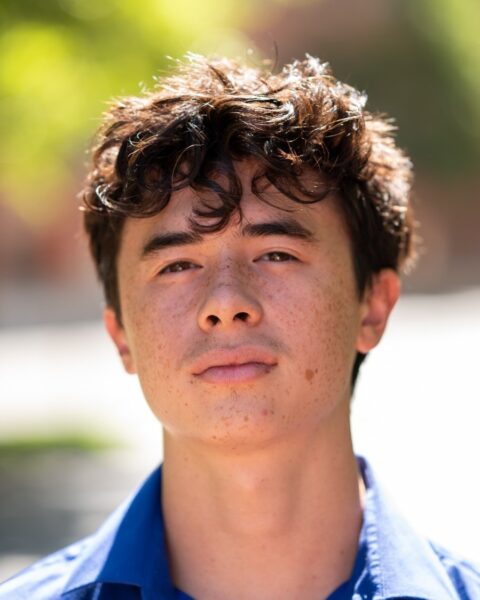 Soft Grippers in Aerial Robotics
Soft Grippers in Aerial Robotics
Awardee: Timothy Lee COE’27
Mentor: Thomas Consi, COE, Electrical and Computer Engineering
This project designs and fabricates custom modular inflatable grippers on drones to improve their ability to manipulate objects of varying shapes, weights, and fragility. The inflatable silicone grippers and modular frames aim to optimize power efficiency, payload capacity, and adaptability. Using iterative design, 3D printing, silicone casting, and performance testing, the project must overcome challenges like durability and reliability. The results will advance the potential of aerial robotics, with applications in delivery and construction. The results will also be presented at the Northeastern RISE showcase.
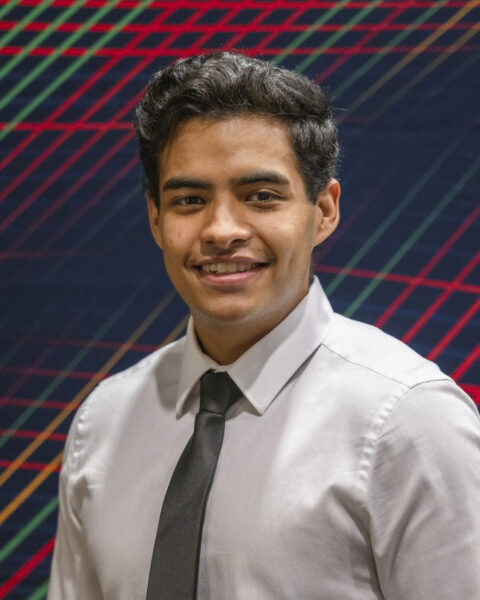 Adaptive Drone Landing Gear: Designing Adaptable Solutions for Versatile Operations
Adaptive Drone Landing Gear: Designing Adaptable Solutions for Versatile Operations
Awardee: Ziven Lopez COE’27
Mentor: Thomas Consi, COE, Electrical and Computer Engineering
This project aims to develop an adaptive modular landing gear system for drones, designed to improve versatility and functionality across diverse applications. The research will focus on creating a universal coupler mechanism and interchangeable landing gear types, including rigid, flexible, heavy-duty, floating, and actuating designs. Employing advanced prototyping techniques and rigorous testing, the project seeks to ensure durability, reliability, and adaptability. The anticipated outcomes include a fully functional modular system, comprehensive design documentation, and dissemination of findings through presentations at RISE and potential external conferences, contributing to the advancement of drone technology and modular engineering design.
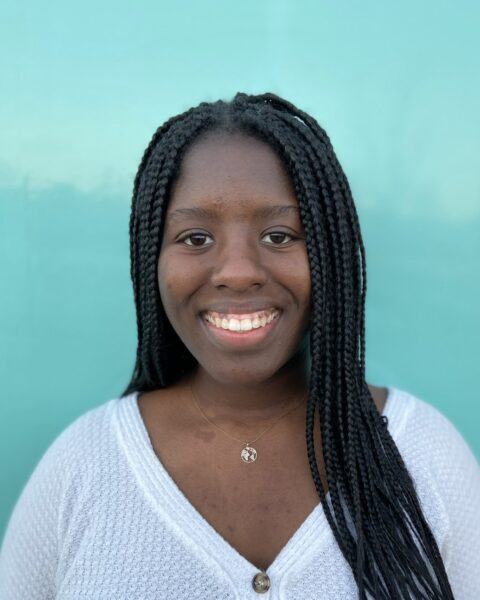 Fear in Motion: Mapping the Influence of Paw Positioning on Conditioned Responses During Electric Shock
Fear in Motion: Mapping the Influence of Paw Positioning on Conditioned Responses During Electric Shock
Awardee: Siima Machayo COS’26
Mentor: Rebecca Shansky, COS, Psychology
I aim to continue to explore how the positioning of rats’ paws during electric shocks affects their fear responses. This research will continue contributing to the Shansky Lab’s focus on neuroanatomy and behavior. It will continue to enhance our understanding of fear conditioning mechanisms and offer valuable insights into anxiety disorders in humans.
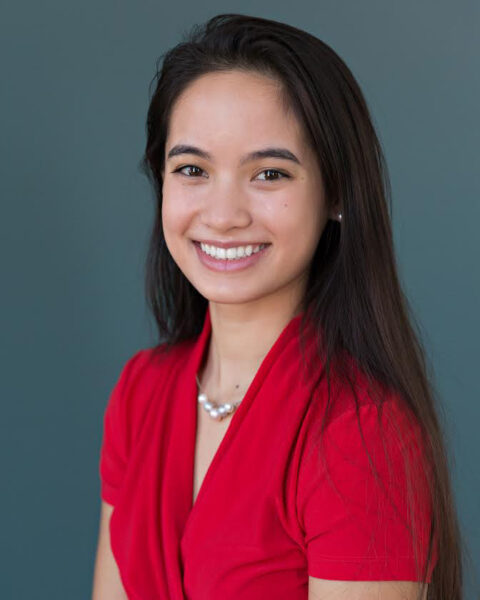 Towards Molecular-Targeted, Spatially-Selective Depletion of Tumor Associated Macrophages
Towards Molecular-Targeted, Spatially-Selective Depletion of Tumor Associated Macrophages
Awardee: Maria Mataac COS’25
Mentor: Bryan Spring, COS, Physics
Tumor-associated macrophages (TAMs) can have either tumor-inhibiting (M1 TAMs) or tumor-promoting (M2 TAMs) properties, making them a crucial component of the tumor microenvironment (TME). This project aims to use ovarian cancer cell co-cultures to more accurately model the TME and identify a molecular target for M2 TAMs that will facilitate spatially-selective depletion of this immune cell subtype while preserving M1 TAMs. This envisioned therapy will utilize molecular targeting and light activation. It uniquely overcomes on-target, off-tumor damage to the immune system and immune-related adverse events that presently limit other targeted approaches. This work will be shared at Northeastern’s RISE 2025.
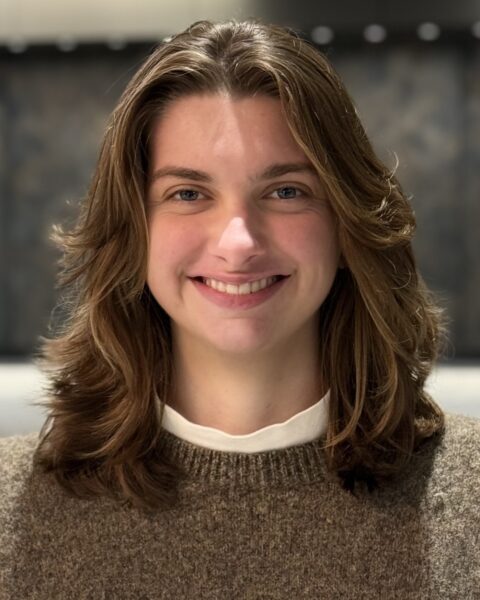 Small Molecule Inhibitors for Human African Trypanosomiasis
Small Molecule Inhibitors for Human African Trypanosomiasis
Awardee: Jordan Miller COS’25
Mentor: Lori Ferrins, Bouvé, Pharmaceutical Science
This project involves the development and synthesis of small molecule inhibitors for Human African Trypanosomiasis, or HAT. HAT is a neglected tropical disease caused by Trypanosoma Brucei , the protozoan parasite targeted by these compounds. HAT is a threat to 70 million people and is considered 100% fatal without treatment, yet treatments have significant issues with toxicity, efficacy, and convenience of dosing. Small molecules require at least a 2-step synthesis consisting of a nucleophilic aromatic substitution followed by a Suzuki reaction. Purification and validation of the compound is required before testing in biological assays to determine efficacy.
 Neurobiological Effect of Polysubstance Abuse in Mice
Neurobiological Effect of Polysubstance Abuse in Mice
Awardee: Trisha Nelson COS’26
Mentor: Craig Ferris, COS, Psychology
This project aims to evaluate the long-term effects of chronic adolescent exposure to both tetrahydrocannabinol (THC) and alcohol on behavioral, structural, and functional brain health in a preclinical mouse model. Existing publications examining the implications of polysubstance abuse are extremely limited in the field right now, especially studies that track brain changes through developmental stages. Using a combination of behavioral assays and advanced neuroimaging techniques, we hope to discover that exposure to these psychoactive substances dramatically alters brain structure, which subsequently alters behavior and cognition. We hope these findings will be published and presented at the RISE conference this spring.
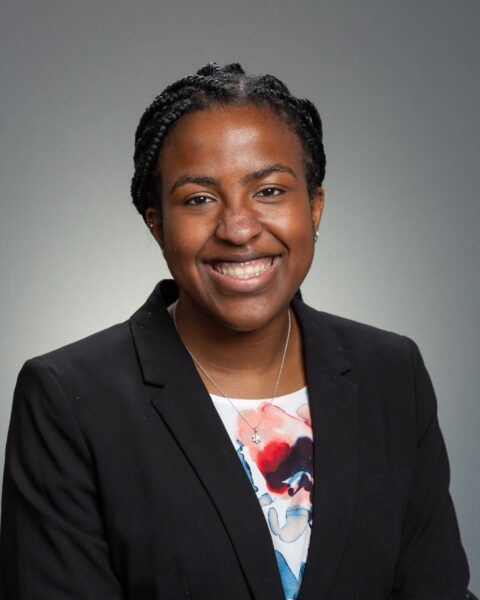 The Role of Pre-sentencing Investigation Reports in Judicial Sentencing Decisions
The Role of Pre-sentencing Investigation Reports in Judicial Sentencing Decisions
Awardee: Keneya Onuaguluchi CSSH’25
Mentor: Patrice Collins, CSSH, Criminology & Criminal Justice
This research explores the influence of Pre-sentencing Investigation (PSI) reports on judicial sentencing decisions, focusing on how the information and recommendations in PSI reports impact the sentencing process. The project aims to identify potential biases within these reports and assess their role in shaping judicial outcomes. The findings will contribute to a broader understanding of fairness, judicial discretion, and potential biases in the criminal justice system. Results will be shared through a comprehensive literature review, an analytical essay, and a presentation at the RISE conference.
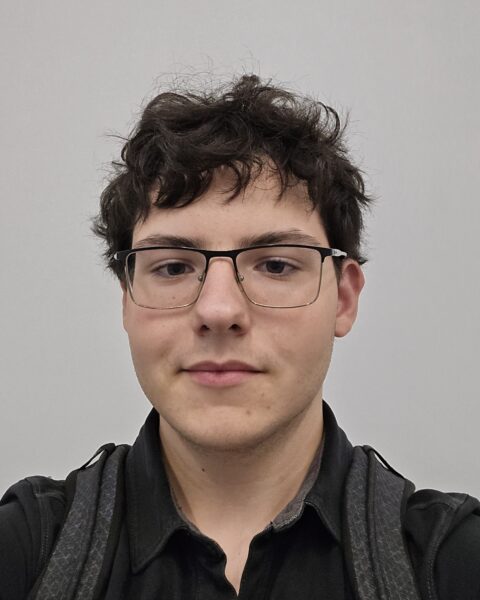 Terahertz Time-Domain Spectroscopy
Terahertz Time-Domain Spectroscopy
Awardee: Andrei Oprea COS’28
Mentor: Alberto De la Torre, COS, Physics
This project uses the technique of terahertz time-domain spectroscopy (TDS) to study the properties of material samples, which include HfO2 and HZO. The experiment consists of splitting a high frequency laser pulse into two idential beams, passing one through the sample, and then comparing them. The resultant data depends on the delay added to one of the beams and provides information about the properties of the material such as dielectric constant. This could have applications in high frequency communications and novel electronics/computing applications that utilize these materials.
 Engineering Probiotic Bacteria to Maximize Ammonium Nitrogen Sequestration to Reverse Hyperammonemia
Engineering Probiotic Bacteria to Maximize Ammonium Nitrogen Sequestration to Reverse Hyperammonemia
Awardee: Katerina Pashiardis COE’25
Mentor: Neel Joshi, COS, Chemistry & Chemical Biology
Hepatic encephalopathy (HE) is a brain disorder caused by ammonia buildup, due to liver detox failure. Hyperammonemia triggers inflammation and disrupts neurotransmission, breeding cognitive and functional impairments in HE patients. Gut bacteria facilitate ammonia’s entry into the bloodstream through converting urea to ammonium. This project aims to engineer probiotic gut bacteria to maximize ammonium nitrogen sequestration, reducing its diffusion into the bloodstream. Our approach targets amino acid transporters to shunt nitrogen utilization toward ammonium and induce nitrogen-rich protein production to boost biomass nitrogen. We hypothesize that enhancing ammonium uptake will reverse hyperammonemia, alleviate HE symptoms, and offer a novel therapeutic.
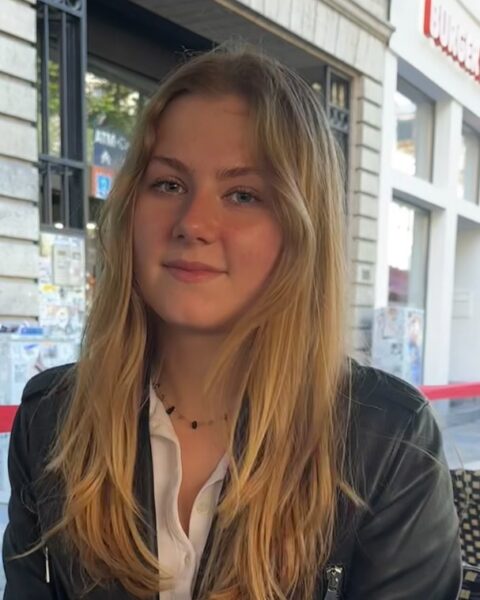 Peer, Instructor, and AI Feedback in the L2 Writing Process
Peer, Instructor, and AI Feedback in the L2 Writing Process
Awardee: Francesca Pendus Khoury’27
Mentor: Christina Agostinelli-Fucile, CSSH, World Languages Center
AI is increasing steadily in many aspects of daily life, including education. This project examines the kinds and quality of feedback generative AI can provide for students learning to write in a second language, as compared to instructor and peer feedback, and how students will evaluate and respond to these types of feedback. Participants received feedback on their Spanish essay from the instructor, peers, and ChatGPT. They completed a pre and post-survey reflection on these types of feedback after using ChatGPT. The project is expected to demonstrate that generative AI provides useful feedback but does not replace human-to-human feedback.
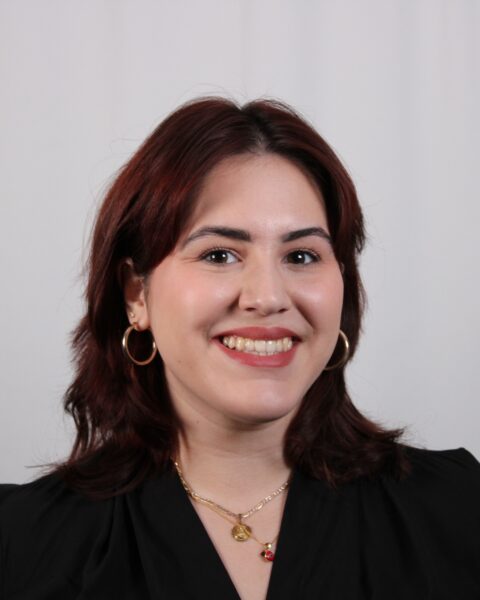 Assessing GENtoniK Components for Acceleration of Neuronal Maturation in a 3-D Culture
Assessing GENtoniK Components for Acceleration of Neuronal Maturation in a 3-D Culture
Awardee: Nicole Rodriguez COS’25
Mentor: Guohao Dai, COE, Bioengineering
To develop an Alzheimer’s Disease model using a microfluidic device (MFD), this project aims to accelerate neuronal maturation within a neurovascular niche (NVN). GENtoniK’s small molecule components will be tested in a 3D cell culture to achieve this. The Dai Lab’s published NVN model, featuring vasculature and neurons, will be used. Previously, this work focused on 2D cultures and organoids. By using 3D culture in an MFD, along with imaging and immunocytochemistry, the project will evaluate how GENtoniK influences neuronal maturation in the NVN model to perfect a new Alzheimer’s model.
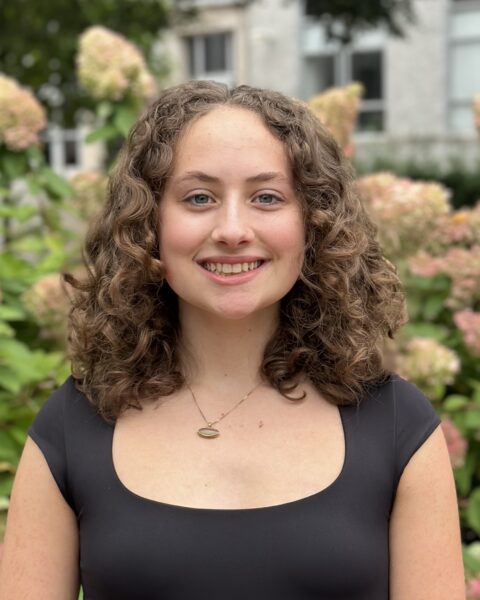
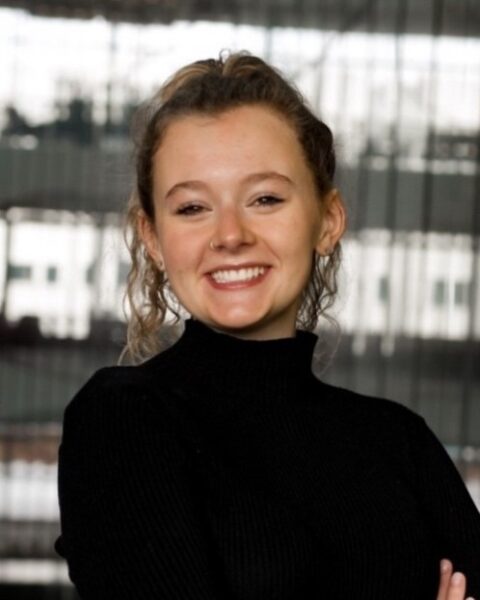 Northeastern Linguistic Landscape Lab: Are We on a Multilingual Campus?
Northeastern Linguistic Landscape Lab: Are We on a Multilingual Campus?
Awardees: Julia Roeschenthaler CSSH’26, Chloe Chick CSSH’25
Mentor: Gorka Basterretxea Santiso, CSSH, World Languages Center
By investigating the visual linguistic landscape of Northeastern’s Boston Campus and students’ attitudes towards it, we hope to understand the perceived importance of language(s) in Northeastern’s definition of “global.” Our methodology includes collecting visual data by photographing signage on major campus buildings as well as interviewing students orally regarding their view of the linguistic landscape of their present location. We anticipate learning how Northeastern students perceive the role of language on a “global” campus.
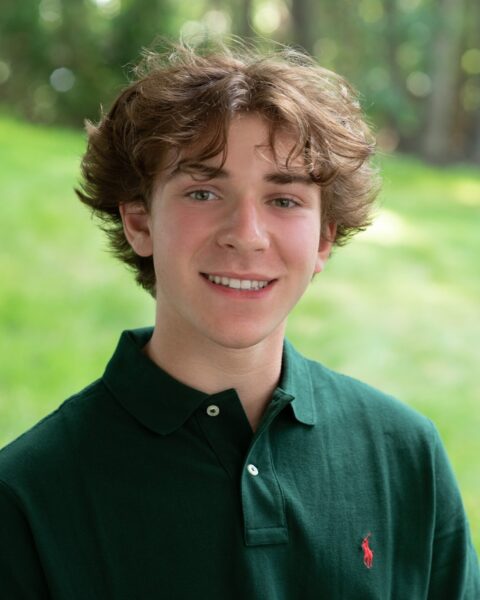 Characterizing the Major and Minor Elements in Mining Waste Using Microwave-Assisted Digestion
Characterizing the Major and Minor Elements in Mining Waste Using Microwave-Assisted Digestion
Awardee: Nicholas Root COE’27
Mentor: Damilola Daramola, COE, Chemical Engineering
This project seeks to enhance the extraction of rare earth elements (REE) found in solid coal mining tailings by understating REE extraction at a bench-scale, while additionally correlating the amount of major element and REE available through extraction. REE has unique properties making them essential for advancements in high-tech industries. However, extraction is done inefficiently in large scale operations, creating millions of tons of wastewater each year. Samples will undergo specific analytical techniques to characterize the impact of acid and base treatment on elemental extraction and quantify this correlation between elements which will be presented at the Northeastern Rise Conference.
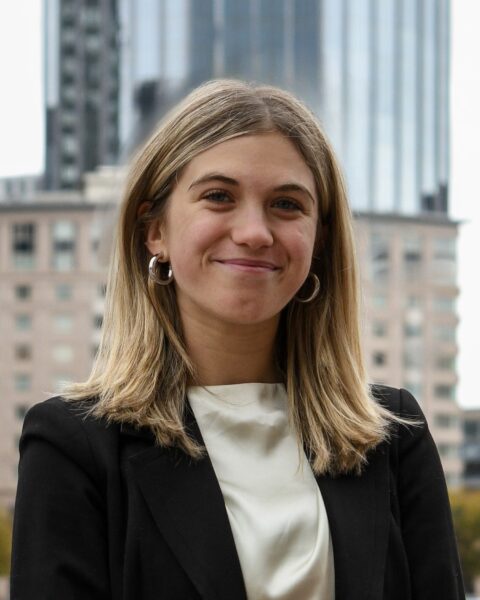 Evaluation of Boston’s Summer Youth Employment Program
Evaluation of Boston’s Summer Youth Employment Program
Awardee: Sophie Sawyers CSSH’25
Mentor: Alicia Modestino, CSSH, Economics
Using pre- and post-survey data from Boston’s Summer Youth Employment Program (SYEP), this project aims to rectify areas of program improvement identified through data analysis and visualization to strengthen future SYEP offerings. Through the use of various programming softwares and tools, including Stata, Python, Excel, and ArcGIS, this project will precisely pinpoint the program’s most pressing issues and those impacted to formulate actionable recommendations for presentation to the Northeastern community and the City of Boston. These data-driven policies will maximize the long-term effectiveness of the SYEP and build a more equitable workforce for Boston’s youth.
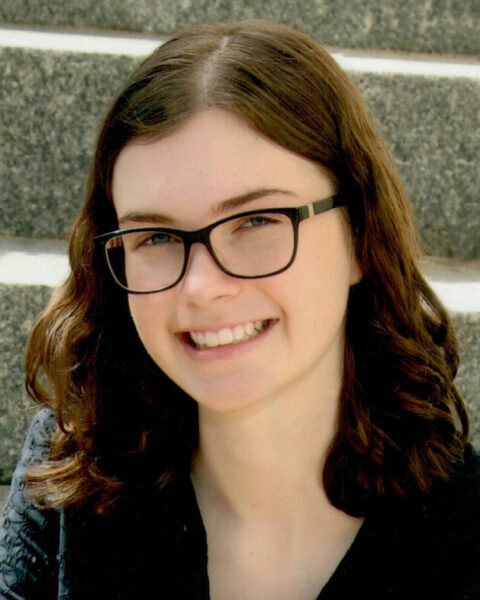 Designing for Mobility: Single-Handed Interface Interaction in Augmented Reality
Designing for Mobility: Single-Handed Interface Interaction in Augmented Reality
Awardee: Meredith Scott Khoury’26
Mentor: Wallace Lages, CAMD, Art and Design
This project explores the potential of single-handed gesture controls to enhance mobility and immersion in augmented reality (AR) interfaces. By focusing on intuitive, ergonomic gestures suited for mobile and wearable AR applications, we aim to develop design principles for scenarios requiring frequent movement or limited mobility. Using Unity 3D and the Microsoft HoloLens 2, we will conduct user interviews and prototype testing to evaluate gesture accuracy, comfort, and task efficiency. Findings will contribute to human-computer interaction research and guide future AR interface development. Results will be shared through RISE 2025.
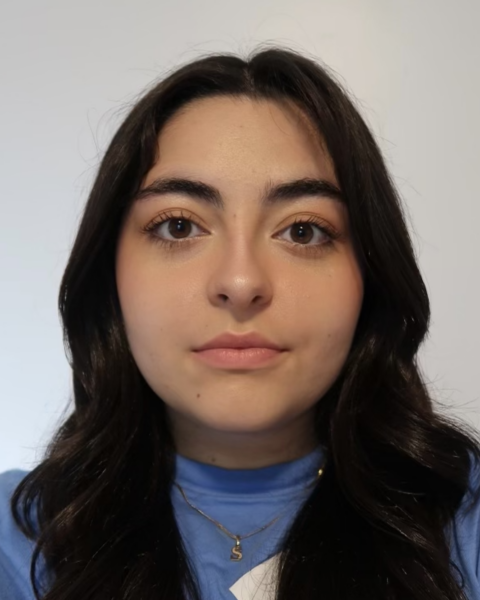 Testing effect of Extracellular Matrix Stiffness and TMZ on Vasculature Formation
Testing effect of Extracellular Matrix Stiffness and TMZ on Vasculature Formation
Awardee: Samantha Serna Pemberthy COE’27
Mentor: Cynthia Hajal, COE, Mechanical & Industrial Engineering
I will investigate how extracellular matrix stiffness and temozolomide (TMZ) influence blood-brain barrier (BBB) vasculature formation and function within a microfluidic glioblastoma (GBM) model. By replicating the tumor’s stiff microenvironment, I will determine the maximum stiffness at which perfusable vessels can form using fibrin-thrombin gels of varying concentrations. I will also examine the BBB’s resilience to clinical TMZ doses, assessing vessel properties and tight-junction integrity. Finally, I’ll evaluate the effects of cyclical TMZ treatment on BBB structure and protein expression. Findings will improve our understanding of GBM resistance mechanisms and inform therapeutic strategies.
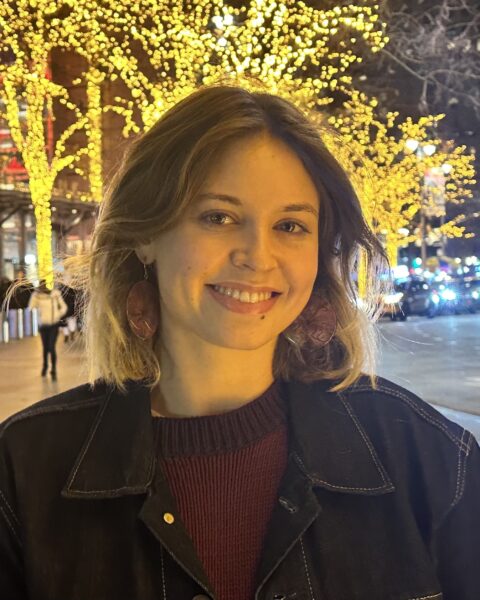 Investigating the Efficacy of Alkalinity Addition in Mitigating the Effects of Ocean Acidification
Investigating the Efficacy of Alkalinity Addition in Mitigating the Effects of Ocean Acidification
Awardee: Alana Shapiro COS’26
Mentor: Justin Ries, COS, Marine & Environmental Sciences
This project will assess whether different types of alkalinity can mitigate ocean acidification’s impact on shellfish. Ocean acidification poses a significant threat to marine calcifiers and could greatly impact aquaculture businesses. Specimens of shellfish will be grown under present-day and future pCO2 conditions with and without different types of alkalinity. Calcification rates, shell composition, and physiological conditions will be evaluated. The goal is to increase knowledge of ocean acidification solutions and provide a deeper understanding of how marine calcifiers will respond to these solutions. Findings will be published in peer-reviewed journals in addition to being presented at RISE.
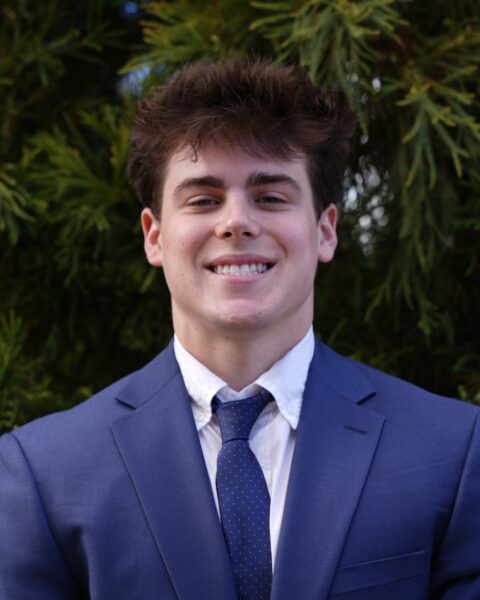 Understanding the Biomedical Research Landscape: Analyzing NIH RePORTER Data with Knowledge Graphs
Understanding the Biomedical Research Landscape: Analyzing NIH RePORTER Data with Knowledge Graphs
Awardee: Owen Sharpe Khoury’27
Mentor: Benjamin Gyori, Khoury, Bioengineering
My project seeks to create a knowledge graph, integrating data from the NIH RePORTER database with patents, clinical trials, and publications to provide an exhaustive view of biomedical research. Using natural language processing, machine learning, and bio-ontology mapping, I will identify funding gaps, emerging research trends, and relationships between various biomedical genres. The graph, built with Python and Neo4j, will help researchers make decisions about future funding. I will share the results through a detailed report, hoping to inform the public of my findings. This project addresses the challenge of fragmented biomedical data to advance research efficiency and impact.
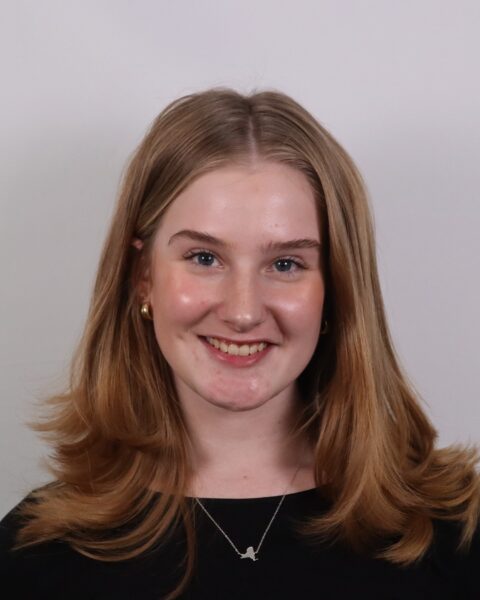 Investigating How Acinetobacter Baumannii Responds to Antimicrobial Oxidative Stresses
Investigating How Acinetobacter Baumannii Responds to Antimicrobial Oxidative Stresses
Awardee: Megan Sitzmann COS’27
Mentor: Edward Geisinger, COS, Biology
The bacterium Acinetobacter baumannii causes drug-resistant diseases including pneumonia by using a control system called BfmRS. How BfmRS enables A. baumannii to respond to threats during infection such as oxidative stress are unclear. This project will analyze how BfmRS responds to and defends against two oxidative stressors (copper and hydrogen peroxide) that the bacteria may encounter during infection, using mutated strains, fluorescent reporters, and bacterial survival tests. The outcomes are expected to show a possible regulation mechanism that A. baumannii uses to resist antimicrobial agents. The results will be presented at RISE.
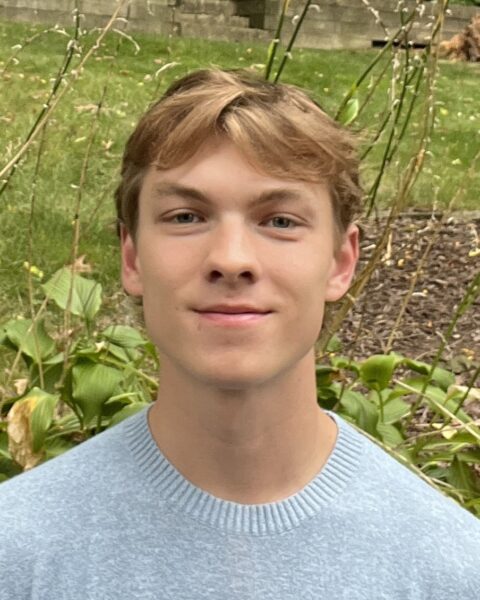 Human Motor Control and Learning in Complex Whip Manipulation
Human Motor Control and Learning in Complex Whip Manipulation
Awardee: Drew Skotarczak Khoury’25
Mentor: Dagmar Sternad, COS, Biology
My project explores how humans learn to manipulate complex objects, focusing on the bullwhip as a case study. By analyzing motion capture data of subjects practicing over 20 days, I aim to uncover how humans develop simplified internal models of dynamic systems. I will investigate how cognitive understanding of whip mechanics, prior sports experience, and overall fitness shape these models. Using a simplified projectile model of the whip, I will test whether whip manipulation mirrors throwing actions. This research advances our understanding of human interaction with complex objects, with implications for neuroscience, robotics, and real-world motor tasks.
 The Role of Polar Reagents in FROMP for Machine Learning Optimization
The Role of Polar Reagents in FROMP for Machine Learning Optimization
Awardee: Bryanna Thomas Bouvé’25
Mentor: Deigo Alzate-Sanchez, COS, Chemistry & Chemical Biology
This research explores an energy-efficient method called Frontal Ring Opening Metathesis Polymerization (FROMP) to create customizable polymeric foams for applications like tissue engineering. By incorporating polar monomers, blowing agents, and comonomers many of which have not been synthesized in this context before I aim to diversify data used in a machine learning model, improving its ability to predict foam formation and properties. This approach reduces resource usage compared to traditional methods and enables the development of specialized foams. Results will enhance understanding of foam creation, with findings presented at RISE Spring 2025, showcasing the potential for sustainable and tailored materials.
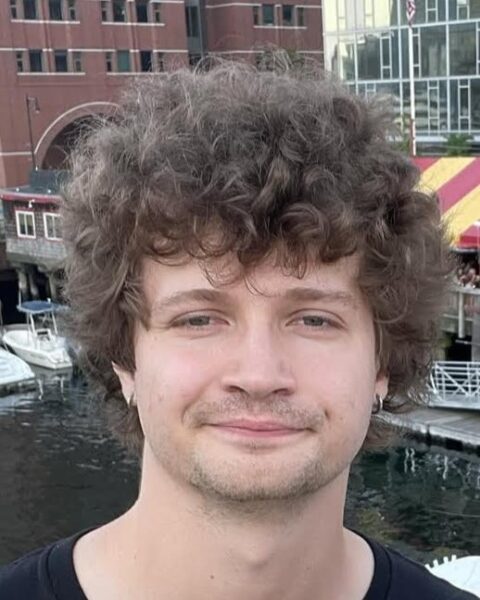 Investigating Visual and Haptic Incongruencies in VR
Investigating Visual and Haptic Incongruencies in VR
Awardee: Ashton Triffitt CAMD’25
Mentor: Wallace Lages, CAMD, Art and Design
We aim to find how incongruent visual and haptic feedback affects a virtual reality experience, and find how incongruent this feedback can be before the experience is negatively impacted, both as individual modalities, and together. We do this by having the user rate their experiences in environments where we modify three parameters; offset of virtual hands from real hands, offset of the virtual wall from the physical wall, the distance of the wall from the participant, and then ask them to modify an environment to match their previous ratings. We hope our findings enable more realistic and comfortable VR experiences.
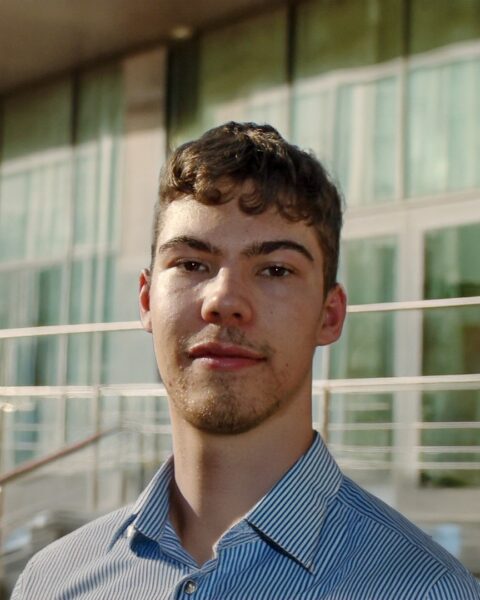 Quantifying Corporate Storytelling: The Role of Narrative in Predicting Financial Performance
Quantifying Corporate Storytelling: The Role of Narrative in Predicting Financial Performance
Awardee: Mikko Tripakis Khoury’25
Mentor: Yakov Bart, DMSB, Marketing
This project explores how tone and emotion in corporate communications, such as earnings calls and investor presentations, affect a company’s financial performance. By analyzing transcripts of corporate communications using natural language processing, I aim to uncover patterns that link narrative features to market outcomes and company success.
 E-Commerce AI Review Summaries: Impacts on Representativeness, Polarization, and Consumer Behavior
E-Commerce AI Review Summaries: Impacts on Representativeness, Polarization, and Consumer Behavior
Awardee: Ben Tunney Khoury’25
Mentor: Yakov Bart, DMSB, Marketing
I will investigate Amazon’s new AI-generated customer review highlights feature, examining whether it accurately reflects user reviews, contributes to review polarization, and influences consumer perception of helpfulness. Using collected review data and corresponding AI summaries, I will apply text processing, sentiment analysis, and text similarity methods to address these questions. This research explores the growing dependency on AI technology and its implications for consumer experience. Findings will provide insights into the representativeness and impact of AI in e-commerce and will be shared through a published paper to inform technology companies and consumers alike.
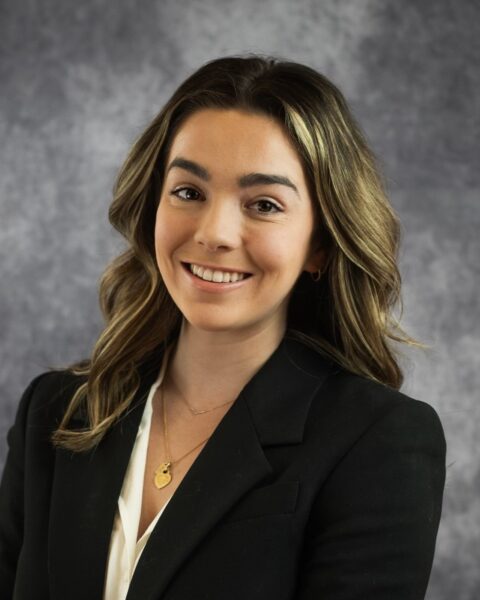 Unequal Justice: Systemic Inequities and Public Health Impacts of Drug-Induced Homicide (DIH) Laws
Unequal Justice: Systemic Inequities and Public Health Impacts of Drug-Induced Homicide (DIH) Laws
Awardee: Alexis Weldner CSSH’25
Mentor: Leo Beletsky, Bouvé, Health Sciences
Drug-Induced Homicide (DIH) laws charge individuals with drug distribution resulting in death but fail to deter illegal drug sales. These laws perpetuate racial, socioeconomic, and geographic inequities, discourage emergency overdose help, and divert resources from harm reduction. This research investigates systemic disparities, public health impacts, and state-level legal variations in DIH prosecutions. Using media mentions, court records, and public health data, the project will create a comprehensive dataset, identify key trends, and propose reforms to improve equity and public health outcomes. Results will be shared through policy briefs and visual materials to inform policymakers and public health professionals.
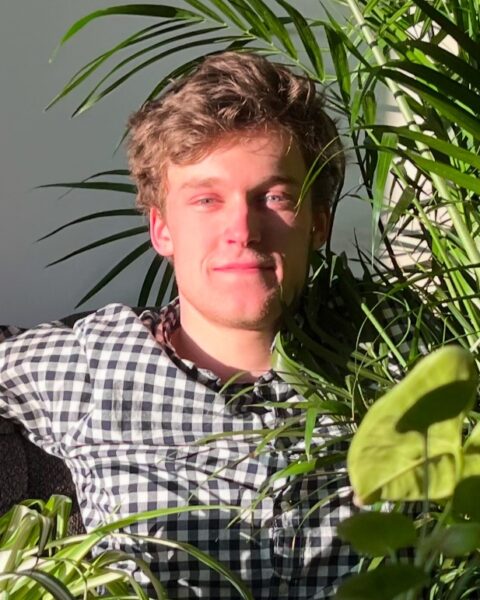 Mural Painting Robot
Mural Painting Robot
Awardee: Oscar Wilmerding COE’25
Mentor: Jahir Pabon, COE, Mechanical & Industrial Engineering
I am exploring the intersection of robotics and art through a mural-painting robot capable of producing large-scale artwork on outdoor walls. I’ve built a prototype that uses a marker on smaller walls, this project scales up the concept by using spray paint. It combines engineering and artistic expression, showing how robotics can address precise movement over a large workspace. More broadly, it aims to make murals more accessible, offering an affordable alternative for communities with limited resources. In the long term, I plan to make this project fully open-source, encouraging others to build and utilize similar robots.
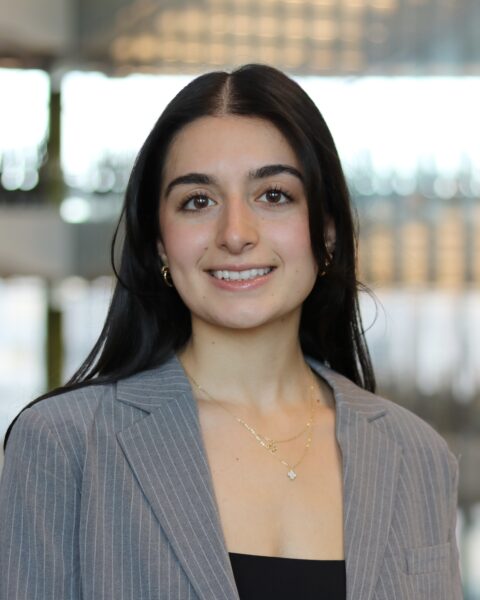 Assessment of International Students Access to Care in Higher Education
Assessment of International Students Access to Care in Higher Education
Awardee: Dina Yacoub Bouvé’26
Mentor: Catrina Jaime, Bouvé, Health Sciences
This project examines how international students at Northeastern University access on-campus healthcare and identifies barriers such as monetary, informational, and cultural challenges. Research reveals that many international students avoid or delay seeking care due to barriers, leading to poor health outcomes. Using a survey distributed across Northeastern’s bi-coastal campuses, this study explores students’ experiences, attitudes, and perceptions regarding healthcare access. Findings will provide insights to advocate for programs that improve international students’ well-being. This project addresses a significant gap in understanding the healthcare needs of international students and proposes actionable solutions to improve access and engagement with on-campus services.
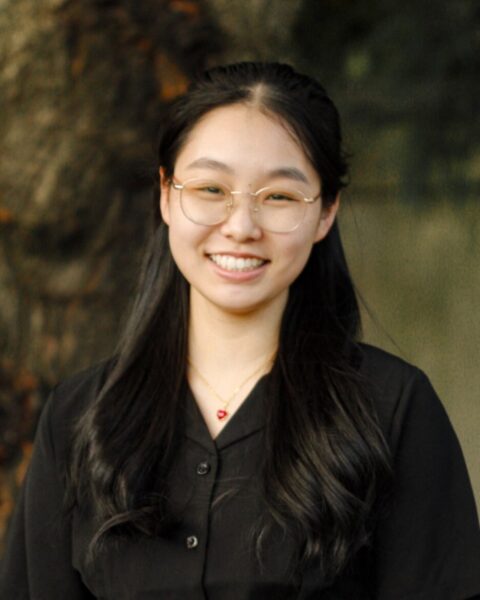 The Study of Male and Female Schwann Cell Migration on Varying Peptide Surface Modifications
The Study of Male and Female Schwann Cell Migration on Varying Peptide Surface Modifications
Awardee: Zoe Yu COE’27
Mentor: Rebecca Willits, COE, Chemical Engineering
Approximately 20 million people in the United States require peripheral nerve repair surgery annually. Schwann cells (SCs), supportive glial cells, play a key role in neuroregeneration after peripheral nerve injury. The microenvironment of SCs can influence their adhesion, proliferation, and alignment, which determines how well the nerve regenerates. In past literature, peptides have been found to promote neuroregeneration. We are interested in investigating the effect of the IKVAV peptide and varying hypoxia conditions on SC migration on 2D surfaces. We expect that SCs will display enhanced migration and proliferation on IKVAV surfaces, and results will be compared with similar literature.
SUMMIT AWARDS
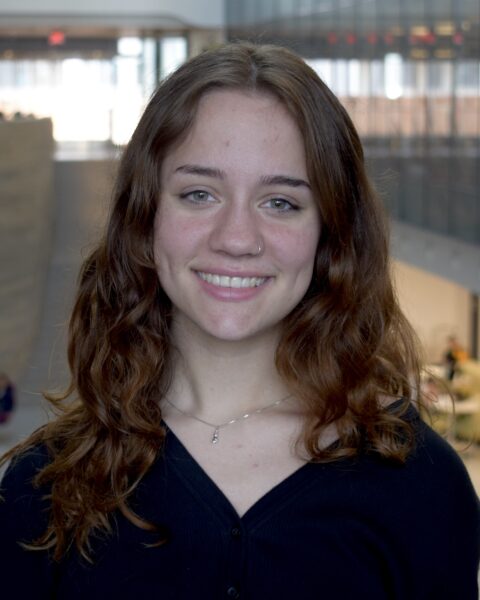 How Pore Size Distribution of Activated Carbon Cathodes Effects Electrochemical Contaminant Removal
How Pore Size Distribution of Activated Carbon Cathodes Effects Electrochemical Contaminant Removal
Awardee: Alena Alexander COE’26
Mentor: Muhammad Fahad Ehsan, COE, Civil & Environmental Engineering
My project investigates how the pore size distribution of activated carbon cathodes influences the electrochemical removal of contaminants in water. The goal is to optimize the design of these cathodes as a stepping stone toward an efficient water purification system, particularly to address water contamination in Puerto Rico which has lead to adverse health effects and preterm births. By understanding the relationship between pore structure and contaminant removal efficiency, the project aims to improve water quality and contribute to sustainable solutions.
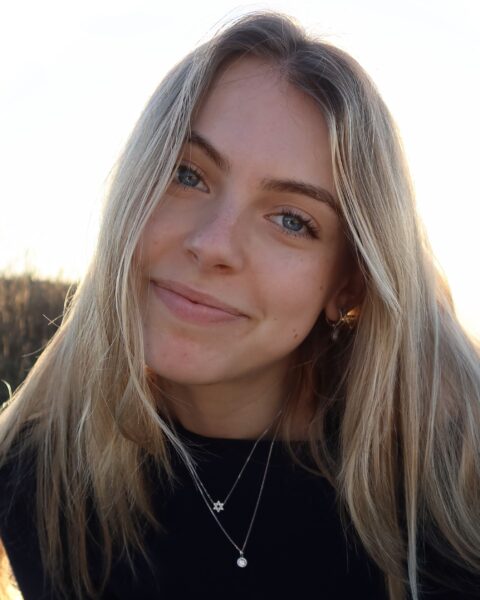 Weak Lensing Analysis with SuperBIT Data
Weak Lensing Analysis with SuperBIT Data
Awardee: Maya Amit COS’25
Mentor: Jacqueline McCleary, COS, Physics
This project aims to analyze galaxy cluster observations taken with NASA’s SuperBIT Telescope, which flew last year and observed over 35 galaxy clusters. Specifically, this work involves developing an image analysis pipeline to process these observations, analyzing weak gravitational lensing effects to study dark matter. This pipeline produces a catalog of galaxies that will be used to illustrate the distribution of matter (including dark matter) in and around these clusters. These catalogs will underpin the science objectives of multiple publications in various high-impact astronomy journals and will support other SuperBIT collaborators at Northeastern, JPL, University of Toronto, and Durham University.
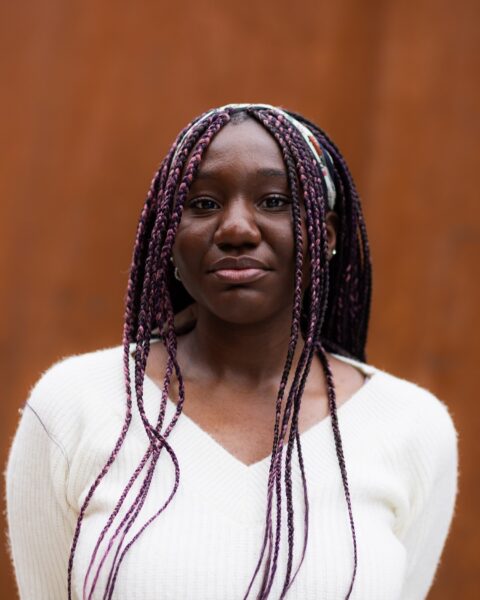 Synthesis of Antimalarial 1,2,3,4-Tetrahydrocridin-9(10H)-one (THA) Featuring a 1H-Tetrazole
Synthesis of Antimalarial 1,2,3,4-Tetrahydrocridin-9(10H)-one (THA) Featuring a 1H-Tetrazole
Awardee: Portia Aning Bouvé’25
Mentor: Roman Manetsch, Bouvé, Pharmaceutical Science
Malaria is a mosquito-borne parasitic disease that has serious and fatal affects to young children, pregnant women, travelers, and people with HIV or AIDS. The disease is caused by the genus Plasmodium with P. falciparum and P. vivax being the two prevalent and lethal species known to infect humans. This project aims to synthesize orally bioavailable 1,2,3,4-tetrahydrocridin-9(10 H )-one (THA) analogs with antimalarial activity against erythrocytic and exoerythrocytic stages are undergoing. The integration of the 1 H -tetrazole is hypothesized to enhance the metabolic stability of the compound due to tetrazoles being resistant to biological metabolic degradation pathways, improving their efficacy and bioavailability.
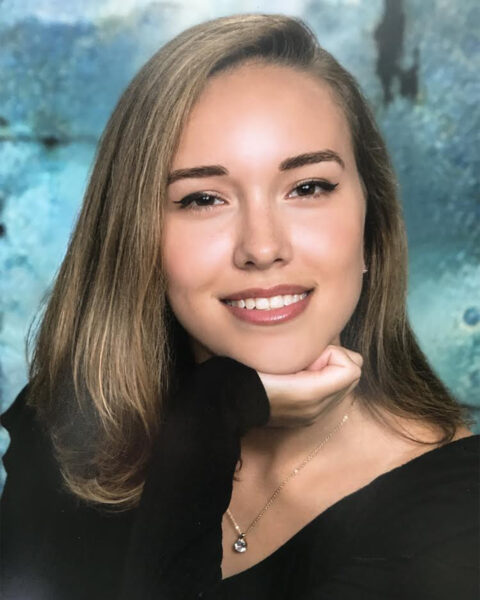 Characterization of Oxygen Consumption Rate in Organ-chips by Integrated Fluorescence Sensors
Characterization of Oxygen Consumption Rate in Organ-chips by Integrated Fluorescence Sensors
Awardee: Christina Aniolek COE’25
Mentor: Ryan Koppes, COE, Chemical Engineering
My project aims to develop and characterize an optical based oxygen sensor that is embedded into an organ-on-chip to track the concentration of dissolved oxygen in cell culture media over time. The oxygen consumption rate of C2C12 cells will be measured to represent the relative cellular metabolic activity of both healthy and stressed cells. Findings from this project may allow for more accurate assessments of culture conditions for cells on-chip, especially through the acquisition of real-time data.
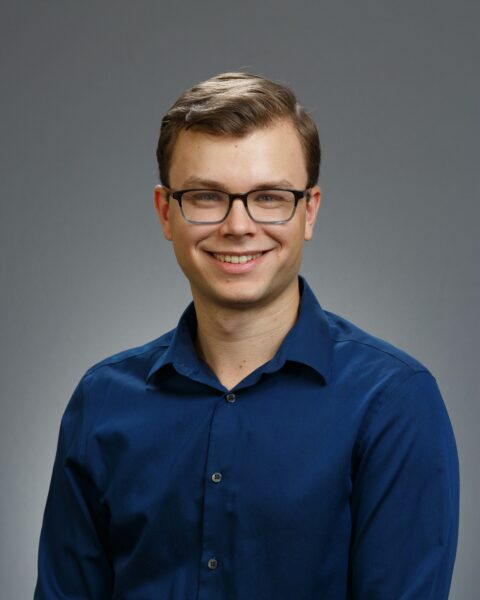 Effects of Nitrogen Enrichment on Salt Marsh Soil Dissolved Organic Carbon
Effects of Nitrogen Enrichment on Salt Marsh Soil Dissolved Organic Carbon
Awardee: Luke Bagdonas COS’25
Mentor: Aron Stubbins, COS, Chemistry & Chemical Biology
Salt marshes are important coastal wetland ecosystems that store large amounts of carbon in their soil, but increased nitrogen loading from anthropogenic sources may put their carbon storage capacity at risk. Using high-resolution LC-MS I will analyze the dissolved organic carbon of salt marsh soil subjected to nitrate and ammonium fertilization. I expect that oxidized and reduced forms of nitrogen will differentially alter the soil’s molecular composition compared to unfertilized controls. Results will be shared at RISE 2025 and published in a peer-reviewed journal.
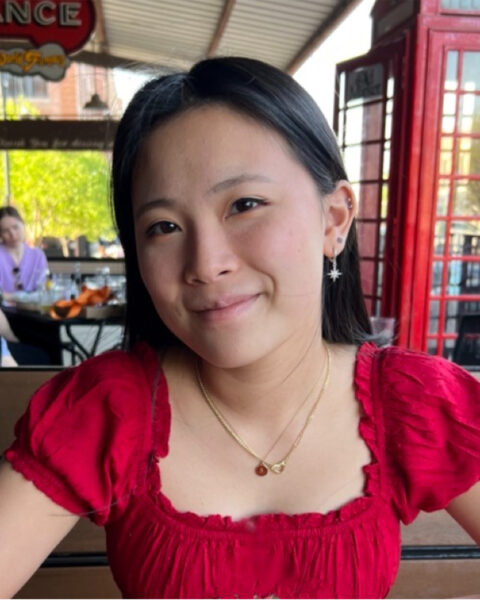 Genetic Investigation of Teichoic Acid Production in Bacillus Subtilis Colonization of Plant Roots
Genetic Investigation of Teichoic Acid Production in Bacillus Subtilis Colonization of Plant Roots
Awardee: Samantha Balaban COS’26
Mentor: Yunrong Chai, COS, Biology
The plant-growth-promoting bacteria (PGPB) Bacillus subtilis is a common soil bacterium found associated with plant roots. Wall teichoic acids (WTAs) in the B. subtilis cell wall have been shown to facilitate root colonization, an important function to their growth-promoting effects on plants. This is important because PGPB could offer an effective alternative to harmful agricultural practices. In this project, I will investigate the genetic regulation of the production of WTA in response to the presence of cucumber roots, quantifying production using techniques such as qPCR and fluorescent microscopy.

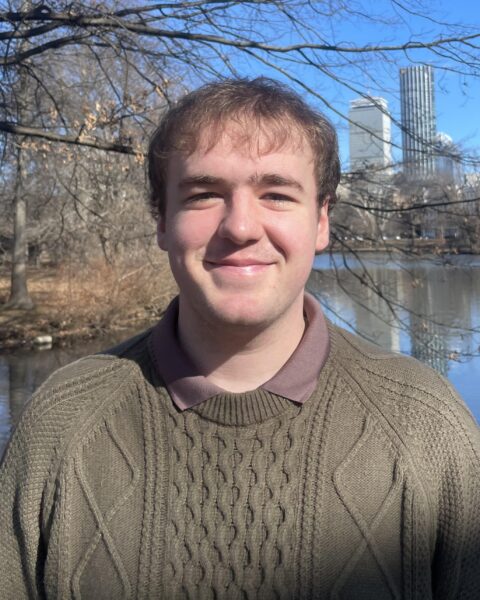 Development of a Machine-Learning Assisted Integrated Non-linear Optical Spectrometer
Development of a Machine-Learning Assisted Integrated Non-linear Optical Spectrometer
Awardees: Brennan Bezdek COE’26, Aaron Picard COE’26
Mentor: Alberto De la Torre Duran, COS, Physics
A compact, machine-learning-integrated spectrometer is proposed to advance Second Harmonic Generation (SHG) imaging by incorporating electric quadrupole contributions and multi-wavelength capabilities. This tool enables high-resolution, sensitive imaging of biological tissues and quantum materials, addressing current limitations in non-linear optical spectroscopy and opening new avenues for disease diagnostics and material discovery.
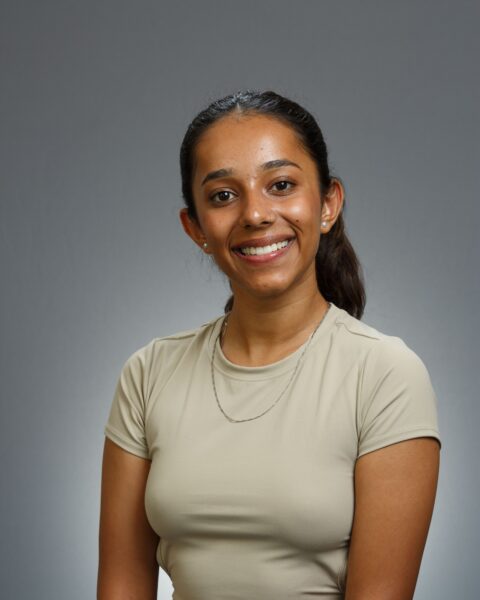 Investigating Fe-Ni Catalyst Plating Mechanism via In-Situ UV Vis Spectroscopy for CO2 Reduction
Investigating Fe-Ni Catalyst Plating Mechanism via In-Situ UV Vis Spectroscopy for CO2 Reduction
Awardee: Dhwani Bhatt COE’27
Mentor: Magda Barecka, COE, Chemical Engineering
This research focuses on improving electrochemical CO2 reduction by developing a cost-effective catalyst composed of iron and nickel to enhance the anodic oxygen evolution reaction (OER) which currently accounts for majority of energy losses in electrochemical cells. Using in-situ UV-Vis spectroscopy, I will monitor the plating process of these metals on nickel foam to better understand their deposition dynamics and optimize the catalyst’s performance. By tracking changes in metal concentrations in real-time, we aim to improve the catalyst’s efficiency, making it more scalable and sustainable for large-scale CO? reduction. The findings will contribute to advancing eco-friendly technologies for CO2 conversion.
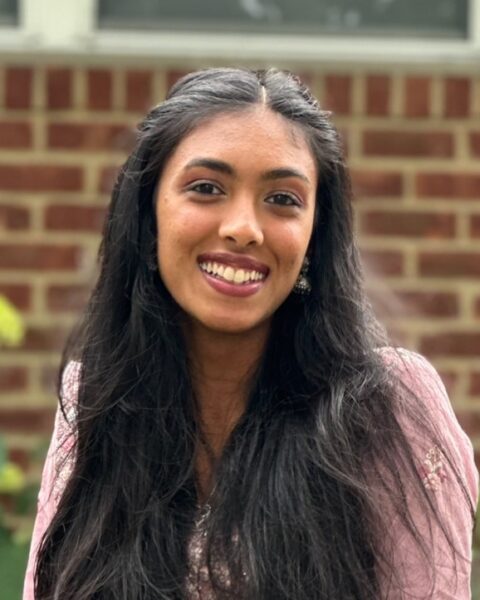 The Impact of Chirality in Liquid Crystal Elastomers
The Impact of Chirality in Liquid Crystal Elastomers
Awardee: Umme Hani Bootwala COE’27
Mentor: Ruobing Bai, COE, Mechanical & Industrial Engineering
This project investigates the color change observed under UV light in liquid crystal elastomer samples containing embedded azobenzene. Preliminary tests and literature suggest this change results from the presence of enantiomers, molecules that are non-superimposable mirror images of each other, which influence the material’s properties. While azobenzene typically induces mechanical deformation via cis-to-trans transformation in such elastomers, the observed color change points to an enantiomeric flip potentially altering material characteristics. This research aims to uncover the mechanisms behind this phenomenon, offering insights into advanced material design and further the possible applications for liquid crystal elastomers.
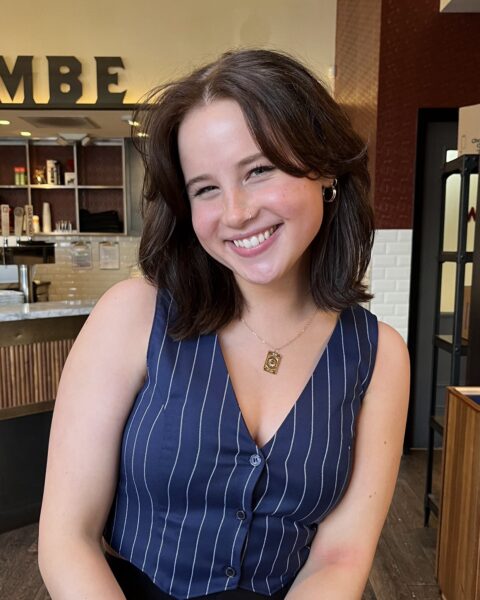
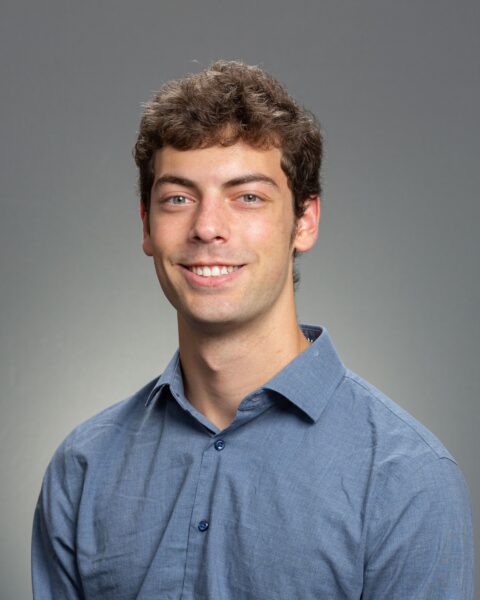
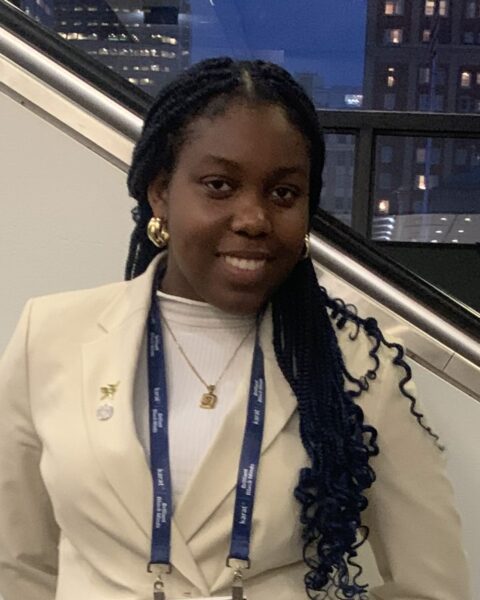 Newborn Sickle Cell Disease Electrophoresis Diagnostic Device for Rural Ghana
Newborn Sickle Cell Disease Electrophoresis Diagnostic Device for Rural Ghana
Awardees: Hannah Carter COE’25, Joshua Piatok COE’25, Sheila Sossavi COE’25
Mentor: Lee Makowski, COE, Bioengineering
Our project aims to develop a rapid, cost-effective diagnostic device to detect sickle cell anemia in newborns using electrophoresis on cellulose acetate strips. This device separates and analyzes hemoglobin variants (HbF, HbS, HbA) to identify disease-specific profiles. By utilizing synthetic hemoglobin controls, we ensure accurate and replicatable testing without using human samples. This innovation addresses a critical need for early detection, particularly in underserved communities, potentially reducing mortality and improving outcomes. Results will be shared through collaboration with Northeastern’s Innovators for Global Health, potential academic publications, and the Bioengineering capstone poster session and presentation.
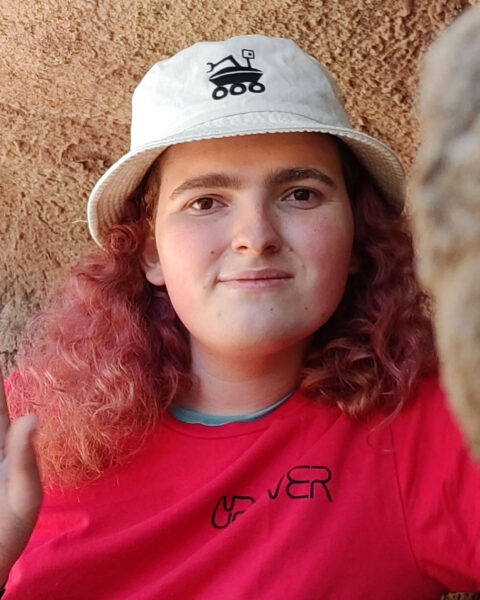 Communication Systems for Robotic Teleoperation
Communication Systems for Robotic Teleoperation
Awardee: Brooke Chalmers Khoury’25
Mentor: Peter Whitney, COE, Mechanical & Industrial Engineering
This research explores communication systems for teleoperated robots, particularly in long-range and non-line-of-sight conditions. Reliable links are crucial for effective teleoperation, yet existing solutions struggle in challenging environments. The project involves building and testing prototype communication systems covering amateur radio bands and unlicensed microwave bands and explores novel configurations such as deployable communications repeaters. Outcomes include identifying effective systems for high data rates, low latency, and robust connections. Results will be shared through collaborations with Northeastern’s robotics teams, enabling practical tests with real rovers. This work advances the field of robotics communication, addressing a critical gap in current technology.
 Comparing Injury Patterns and Healthcare Utilization among Transgender and Cisgender IPV Survivors
Comparing Injury Patterns and Healthcare Utilization among Transgender and Cisgender IPV Survivors
Awardee: Rohan Chopra Khoury’26
Mentor: Winston Kennedy, Bouvé, Physical Therapy, Movement, and Rehabilitation Sciences
Transgender individuals face disproportionately high rates of intimate partner violence (IPV), yet their unique health needs often go unaddressed. Building on prior research that identified revealed striking disparities in injury rates between transgender and cisgender women, this study focuses exclusively on transgender patients who have disclosed IPV. Using electronic health records and advanced data analytics, we will examine injury patterns, severity, and healthcare utilization. By uncovering critical insights into injury synchronicity, care access, and systemic barriers, our research aims to generate actionable data to create an equitable, safe, and supportive healthcare environment for transgender IPV survivors.
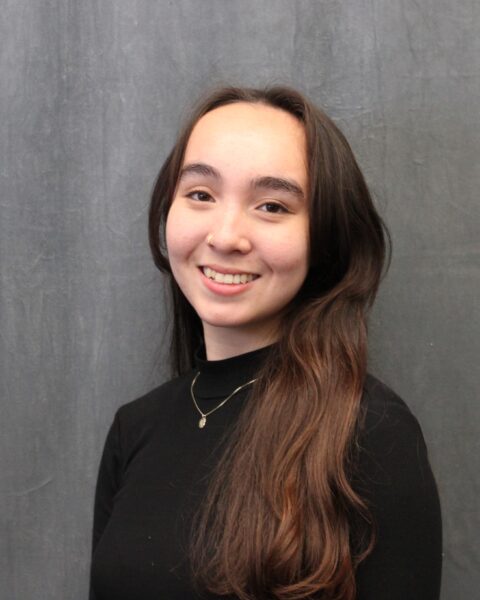 The Impact of Third Spaces on Multiple Heritage Pride and Mental Health
The Impact of Third Spaces on Multiple Heritage Pride and Mental Health
Awardee: Ava Clifford COS’25
Mentor: Analía Albuja, COS, Psychology
The multiple heritage population, which includes multiracial and multicultural people, is one of the fastest growing U.S. populations, but a minority in most regions. They face unique stressors, like identity denial and rejection from monoracial groups, which leads to worse mental health outcomes in comparison to monoracial individuals. One way to improve these mental health disparities is to create third spaces, which are spaces where multiple heritage individuals can affirm their identity with people of the same identity. The purpose of this study is to examine whether third spaces can improve racial pride and mental health outcomes for multiracial/multicultural students.
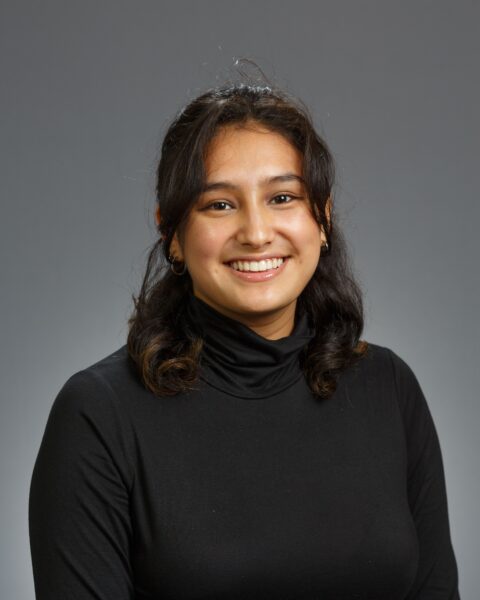 Functional Connectivity between Theory of Mind and Memory Regions in the mPFC during Word Learning
Functional Connectivity between Theory of Mind and Memory Regions in the mPFC during Word Learning
Awardee: Emily Cohen COS’25
Mentor: Zhenghan Qi, Bouvé, Communication Sciences & Disorders
About 60% of autistic children have language impairments that often persist into adulthood, contributing to 40% of autistic adults facing unemployment and poor quality of life. Language skills are crucial for long-term vocational, educational, and social success, with vocabulary learning being one of the few areas that can improve over time. This project investigates the functional connectivity between theory of mind and memory regions in the mPFC during language acquisition in autistic individuals. By uncovering cognitive pathways that affect word learning and retention, this research aims to inform more effective interventions to address vocabulary deficits and improve outcomes.
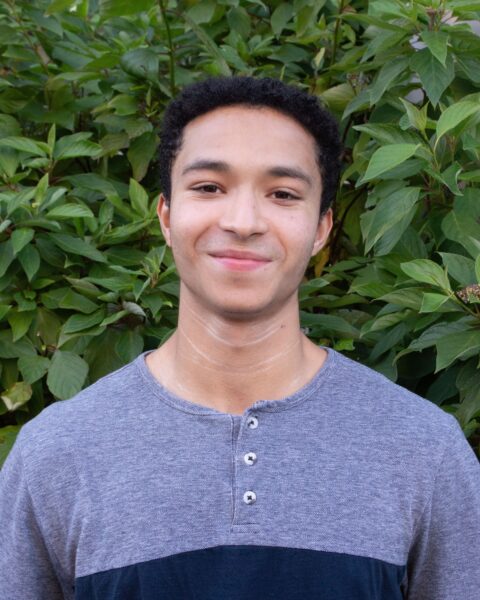 Manuscript on Sex-Dependent Neural Predictors of Internalizing and Externalizing in Children
Manuscript on Sex-Dependent Neural Predictors of Internalizing and Externalizing in Children
Awardee: Skyler Cohen COS’25
Mentor: Susan Whitfield-Gabrieli, COS, Psychology
My project explores sex differences in brain biomarkers which predict precursors to psychiatric disorders called internalizing and externalizing behaviors in children. Using functional magnetic resonance imaging (fMRI) and caregiver-reported assessments from a longitudinal pediatric sample, we identified sex-specific brain biomarkers in different motor regions which predicted worsening internalizing/externalizing behavior four years later. Here, we demonstrate that these traditional motor regions play a more diverse functional role than previously thought, particularly for the development of emotional processing and emerging psychopathology. Results will be written and disseminated through a journal publication and a presentation at the Cognitive Neuroscience Society conference.
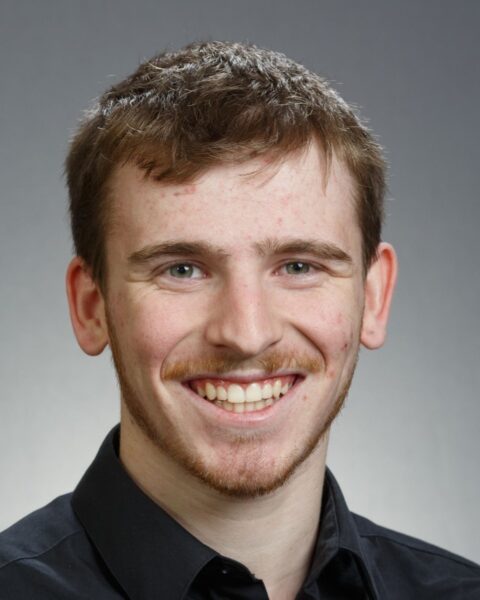 Probing Amyloidogenic Immunoglobulin Dynamics with HDX MS in Complex Matrices
Probing Amyloidogenic Immunoglobulin Dynamics with HDX MS in Complex Matrices
Awardee: Zachary Cohen COS’26
Mentor: Thomas Wales, COS, Chemistry & Chemical Biology
Immunoglobulin (IgG) light chain (LC) amyloidosis (AL) is an incurable, debilitating, and deadly disease affecting more than 1 in 100,000 people per year. In AL, IgG LCs and/or fragments thereof aggregate to form insoluble amyloid fibrils, which accumulate in vital organs causing the disease. The reasons that some LCs become amyloidogenic while others do not is unclear. We will perform comparative hydrogen deuterium exchange mass spectrometry of patient derived IgG and LC proteins in a complex biological matrix to determine how the proteins’ conformation and dynamics vary in native-like environments.
 Modeling Microtubule Dynamics in Neuronal Dendrites
Modeling Microtubule Dynamics in Neuronal Dendrites
Awardee: Sean Coursey COS’25
Mentor: Maijia Liao, COS, Physics
The Liao Lab explores the dynamics of microtubules, critical cellular structures within neurons that regulate transport and signaling, with implications for understanding neurodegenerative diseases. Using information from the Liao Lab’s advanced genetic tools, imaging techniques, and machine learning, I will help create a physical model of microtubule behavior in live neurons. If achieved, it will be the first model that bridges the microscopic dynamic microtubule regulation with overall macroscopic neuronal morphologies in living organisms. Anticipated outcomes include new insights into disease pathology and innovative therapeutic strategies, with findings shared through software, academic publications, and presentations to the scientific community.
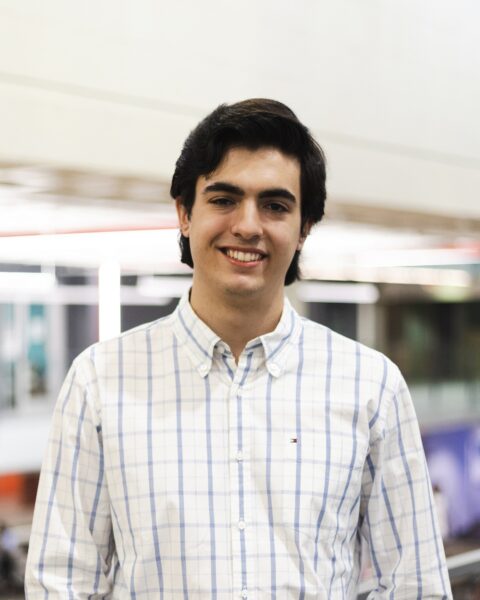 Harnessing Extremophile Pigments: UV Protection from the Atacama Desert
Harnessing Extremophile Pigments: UV Protection from the Atacama Desert
Awardee: Matteo Couto Frignani COE’25
Mentor: Yunrong Chai, COS, Biology
This project aims to uncover and characterize UV-protective pigments from extremophiles in the Atacama Desert, using synthetic biology to reconstruct their biosynthetic gene clusters in Bacillus subtilis. By confirming the chemical identity of these pigments and understanding their role in UV resistance, the research will shed light on novel adaptations in extreme environments. Results will be shared through presentations at conferences, promoting the broader impacts of synthetic biology and extremophile research.
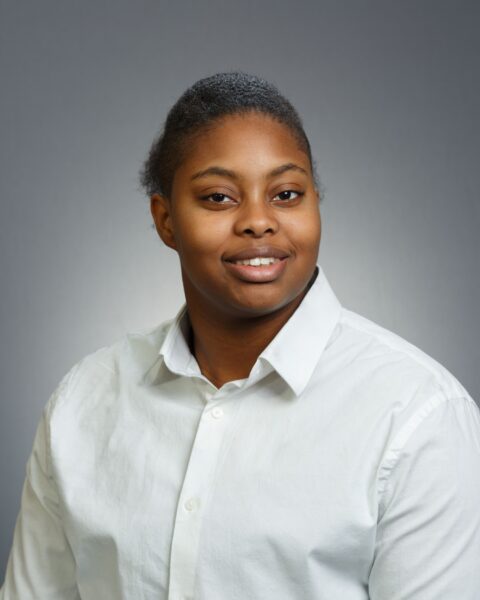 Chromosomal Inversion Breakpoint Evolution in Atlantic Cod (Gadus morhua)
Chromosomal Inversion Breakpoint Evolution in Atlantic Cod (Gadus morhua)
Awardee: Leila Curtis COS’26
Mentor: Katie Lotterhos, COS, Marine & Environmental Sciences
Limited knowledge exists about how inversions evolve and their importance in ecotype differentiation, such as that between migratory and coastal ecotypes in Atlantic Cod (Gadus morhua). Current theory states that larger inversions can facilitate the establishment of additional inversions, and theoretical work in the Lotterhos Lab found that newly established small inversions may often overlap in similar genomic locations as large inversions already present in other individuals in a population. This study aims to expand on this work by using whole-genome sequencing data from cod populations in the Gulf of Maine and Iceland to rigorously test these two theories.
 Pulcherrimin is a Gene Regulatory Signal in Bacillus subtilis Biofilms
Pulcherrimin is a Gene Regulatory Signal in Bacillus subtilis Biofilms
Awardee: Migue Van Louis Darcera COS’25
Mentor: Yunrong Chai, COS, Biology
Biofilms are widespread in nature and a leading cause of hospital-associated infections, consisting of bacterial communities that communicate to form protective structures. Bacillus subtilis is a model organism for biofilm studies due to its ability to form robust biofilms. This project aims to investigate the role of pulcherrimin, a pigment produced by B. subtilis biofilms, as a potential signal for gene regulation within these communities. Using molecular biology techniques, this research will explore how pulcherrimin contributes to bacterial communication, expanding its function beyond a pigment. Results will provide insights into biofilm biology and potential new strategies for treating biofilm-related infections.
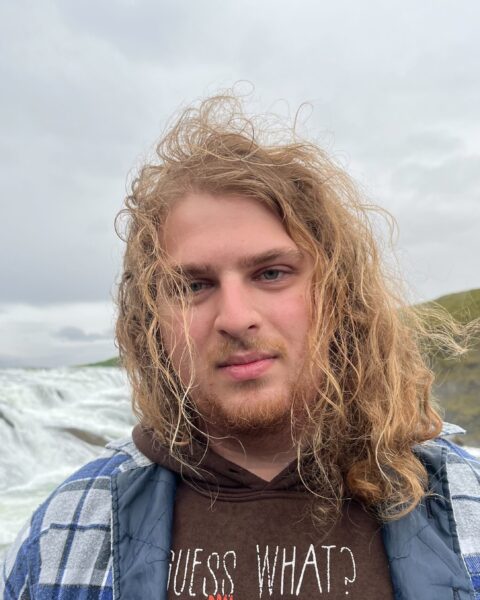 FASTER-PT: A Code Refactor and Optimization Project for Cosmology Analysis.
FASTER-PT: A Code Refactor and Optimization Project for Cosmology Analysis.
Awardee: David DeRienzo COS’25
Mentor: Jonathan Blazek, COS, Physics
FAST-PT (perturbation theory) is a numerical algorithm to calculate 1-loop contributions to the matter power spectrum and other similar integrals. The software is currently in use and will be further developed for cosmological analyses of galaxy clustering and weak lensing by the Rubin Observatory Dark Energy Science Collaboration (DESC). FASTER-PT is a continuation of Professor Jonathan Blazek’s work to refactor the pre-existing Python library in order to increase efficiency and offer the user a more streamlined API. This will be achieved by researching software development techniques such as memoization, caching, lazy initialization, and combing through currently used modules.
 Securing the Foundations of the Swift Programming Language
Securing the Foundations of the Swift Programming Language
Awardee: Zachary Eisbach Khoury’26
Mentor: Amal Ahmed, Khoury, Computer Science
Swift is a well-known, general-purpose, memory-safe programming language. Despite its popularity, many of Swift’s unique features—especially those pertaining to memory safety—are often overlooked by theorists. Our project aims to combat this by formalizing a relevant and modern subset of Swift. Using this formalization, we will develop a novel proof of memory safety by constructing a semantic model using higher-order separation logic. Findings will be presented to experts at a respected programming languages workshop, like TyDe, or conference, like PLDI.

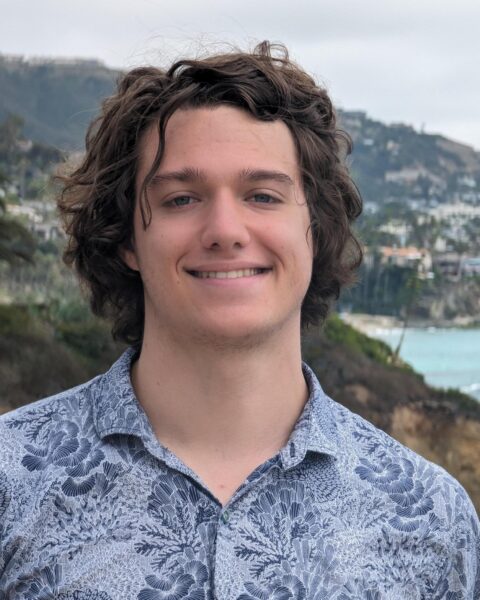 Comprehensive Metabolism Analytical Mars Rover Life Detection Module
Comprehensive Metabolism Analytical Mars Rover Life Detection Module
Awardees: JiaJia Fu COE’26, Nicholas Rising Khoury’26
Mentor: John “Peter” Whitney, COE, Mechanical & Industrial Engineering
The Northeastern University Mars Rover Team (NURover) competes in the annual University Rover Challenge (URC) hosted by the Mars Desert Research Society in Hanksville, Utah. The Life Detection subteam is building an integrated subsystem which takes soil samples, conducts a series of biochemical assays and live data analysis to determine potential for hosting life to mimic Mars rover science missions. We are desiging a comprehensive UV-Visible spectroscopy based system focused on detecting organic carbon, secondary life confimration through glucose, protein, DNA, chlorophyll-a, 3D printing and assembling a new carosel system and implementing a machine vision model for soil identification.
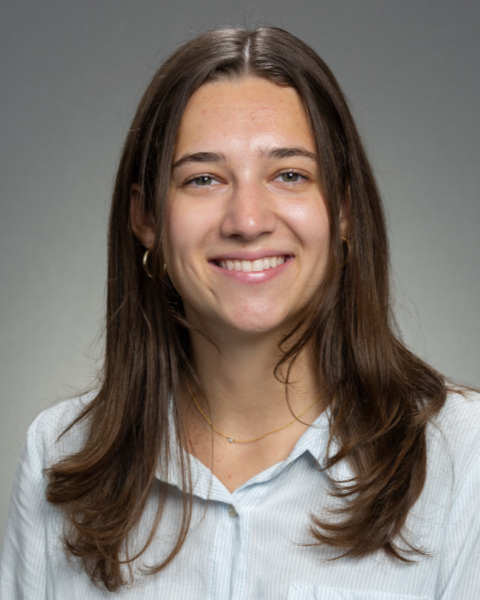 Investigating Epithelial & Mesenchymal Polarization of Macrophages in Immunotherapy
Investigating Epithelial & Mesenchymal Polarization of Macrophages in Immunotherapy
Awardee: Willow Furrer COS’25
Mentor: Stephen Hatfield, Bouvé, Pharmaceutical Science
A challenge in immunotherapy a treatment that uses the patient’s own immune cells to combat cancerous cells within the body is immune suppression from tumors as well as metastasis (the spread of tumors). This study seeks to evaluate how cancer metastasis influences key immune cells and renders them less effective. By culturing cancer cells with immune cells, the resulting changes to immunity can be assessed. The results of this study will provide insight on the influences of metastasis and will be shared at the RISE symposium.
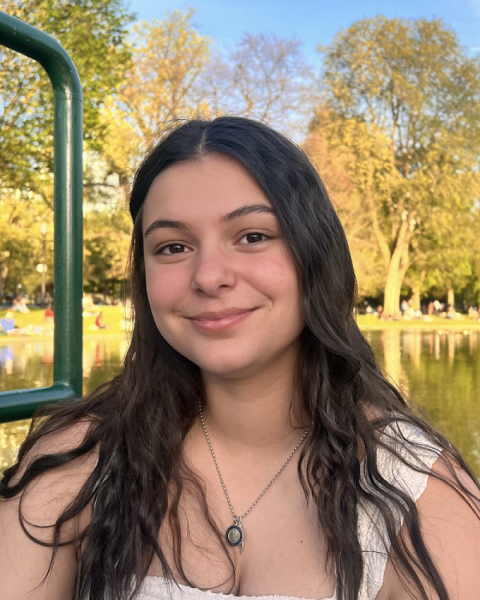 Multi-Stage Addiction Assessment Protocol
Multi-Stage Addiction Assessment Protocol
Awardee: Nina Garbarino COS’27
Mentor: Camron Bryant, Bouvé, Pharmaceutical Science
This research investigates how genetic differences influence addiction-related behaviors, such as reward, anxiety, and pain sensitivity, using 29 mouse strains being treated with oxycodone or saline. By conducting secondary data analysis on behavioral assays such as Conditioned Place Preference, Hot Plate, and Elevated Plus Maze with tools like AnyMaze, GraphPad Prism, and R, I hope to uncover strain-specific responses to opioids. This work could inform personalized approaches to pain management and addiction treatment. This project will be shared at RISE and has a goal of being summited for publication in a scientific journal.
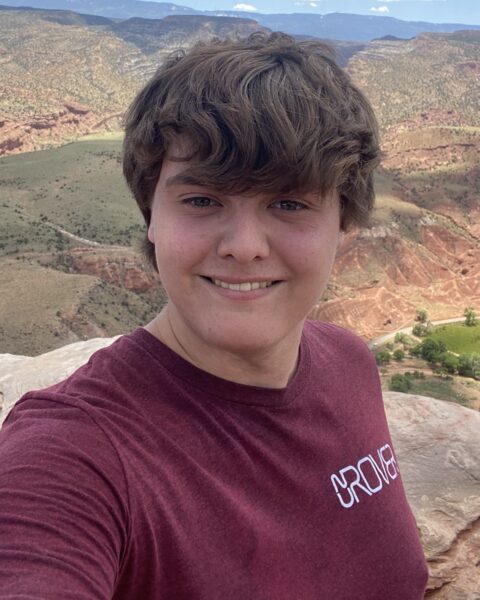 Competition Lunar Construction Robot
Competition Lunar Construction Robot
Awardee: Matthew Geisel COE’26
Mentor: Taskin Padir, COE, Electrical and Computer Engineering
The purpose of this project is to construct a robot that will compete in first an Iowa State University and then a NASA competition aimed to generate ideas for the Artemis project. When a rocket takes off on the moon, high velocity moon dust flies everywhere and can damage equipment and people. This robot will build a berm, or ridge of moon dust to prevent this. It will do it by autonomously navigating, trilateraring its position, and detecting obstacles to get to an excavation site. It will then excavate lunar regolith and construct a berm.
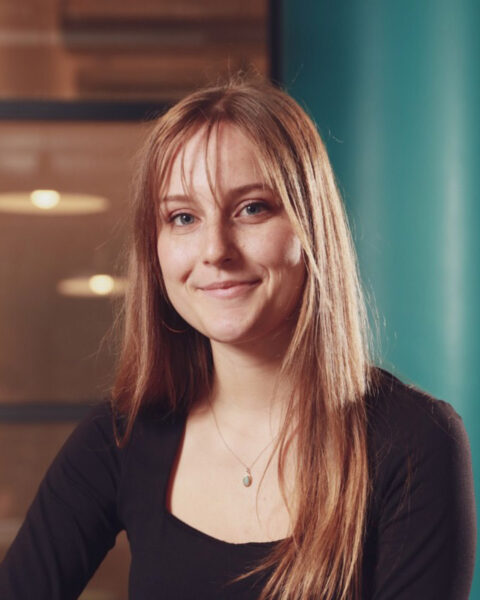
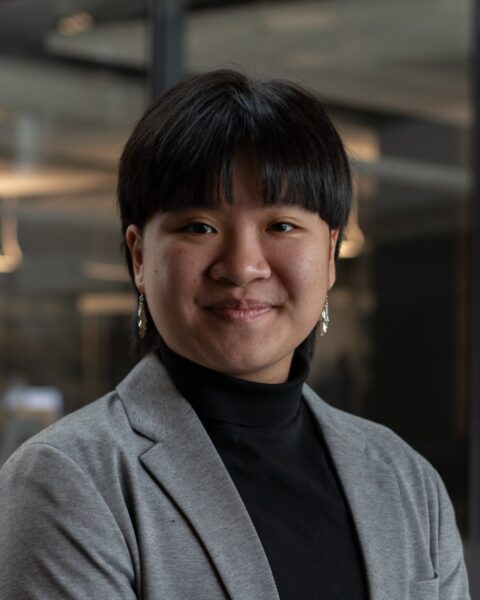 Benthic Storytelling: Biogeochemical Response to Trawling in Jeffreys Ledge and Stellwagen Bank
Benthic Storytelling: Biogeochemical Response to Trawling in Jeffreys Ledge and Stellwagen Bank
Awardees: Kayla Gillen COE’25, Fin Li COS’26
Mentor: Cristina Schultz, COS, Marine & Environmental Sciences
Bottom trawling is a widespread commercial fishing practice with economic and cultural significance. However, there are concerns about its ecological impacts, including its effects on the carbon cycle via the resuspension of sediment carbon to the pelagic layer. This project collects and synthesizes fisheries and oceanographic data to investigate the effects of trawling on sediment carbon content and benthic ecosystems at two sites in the Gulf of Maine, Jeffreys Ledge and Stellwagen Bank National Marine Sanctuary. Results will be shared at RISE and the 2024 ASLO Meeting, with an overarching goal of publication in an ecological journal.
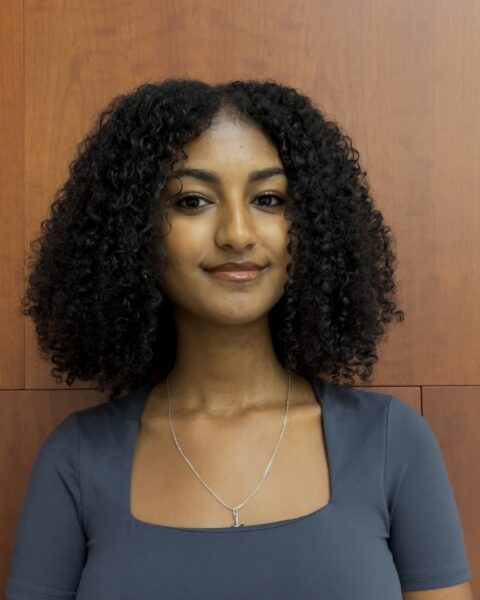 Demographic Influences on Cognitive Task Outcomes: The Roles of Age and Socioeconomic Status
Demographic Influences on Cognitive Task Outcomes: The Roles of Age and Socioeconomic Status
Awardee: Elda Gobena COS’26
Mentor: Susanne Jaeggi, COS, Psychology
My project aims to examine how demographic factors, specifically socioeconomic status(SES) and age, influence performance on cognitive tasks. I will compare 3 age groups: 4th graders, middle schoolers, and undergraduate students. This analysis will provide insight into age-related differences in cognitive development, highlighting the essential role that executive functions play in the developmental process. I will also identify any potential performance differences based on SES. Academic achievement and cognitive abilities have a bidirectional relationship, which may be weaker for children from disadvantaged backgrounds. Recognizing these differences is key for advocating policy change and emphasizing the importance of early childhood development.
 Can LLMs Comprehend Longform Fictional Narratives?
Can LLMs Comprehend Longform Fictional Narratives?
Awardee: Jory Gutman DMSB’27
Mentor: Yakov Bart, DMSB, Marketing
This project seeks to compare the difference between the reading comprehension of humans and Large Language Models(LLMS) when exposed to fictional narratives. We plan to task participants with reading a randomized book from a collection of fictional narratives and present them with a series of questions. LLMs such as ChatGPT and Claude will be presented with the same task and these results will be analyzed to identify variations in their interpretations of the text. We anticipate there may be underlying themes regarding human emotions that will be addressed in the human responses yet missed by the LLMs.
 Harnessing the Biological Potential of Pigmented Extremophile Bacteria
Harnessing the Biological Potential of Pigmented Extremophile Bacteria
Awardee: Austen Herlihy COE’25
Mentor: Veronica Godoy-Carter, COS, Biology
Bacteria that grow in extreme environments often produce pigments to help them survive harsh conditions. This project involves the isolation and characterization of 5 pigments from bacterial strains isolated from remote regions in Chile. The bacteria and their pigments will be tested for antibiotic, antioxidant, cytotoxic (cell-killing), and UV resistant properties in order to determine the possible applications they may have in medicine and biotechnology. Additionally, we attempt to sequence the genomes of and induce mutations in the bacteria that will alter their pigment production. This allows us to determine which bacterial properties are caused by the pigments themselves.
 Respiratory Interoceptive Sensitivity in Different Affective Contexts
Respiratory Interoceptive Sensitivity in Different Affective Contexts
Awardee: Brynn Heslin COS’25
Mentor: Karen Quigley, COS, Psychology
Interoception refers to the process of how the nervous system interprets and integrates signals from within the body at both conscious and unconscious levels. Our ability to consciously process internal sensations is called Interoceptive Sensitivity (IS). Investigation into IS, and it’s relationship to internal and external changes provide key insight into our brains ability to continually map our internal landscape. This project will seek to provide such insight by utilizing a respiratory IS task in conjunction with an affect manipulation, wherein human subjects will complete trials with and without the manipulation to explore the relationship between IS and affective changes.
 Assessing the Impact of Monopsony Power in the Publishing Industry
Assessing the Impact of Monopsony Power in the Publishing Industry
Awardee: Siyu Hou Khoury’25
Mentor: Yakov Bart, DMSB, Marketing
This project explores the impact of monopsony power in the publishing industry, focusing on mergers like Penguin Random House and Simon & Schuster. Building on last semester’s data processing and modeling, this semester’s work emphasizes welfare analysis and report drafting. I will evaluate the economic effects of consolidations on authors, publishers, and consumers, and explore counterfactual scenarios to inform policy discussions. My research will provide actionable insights for maintaining competitive markets and advance my independent research skills in industry economics.
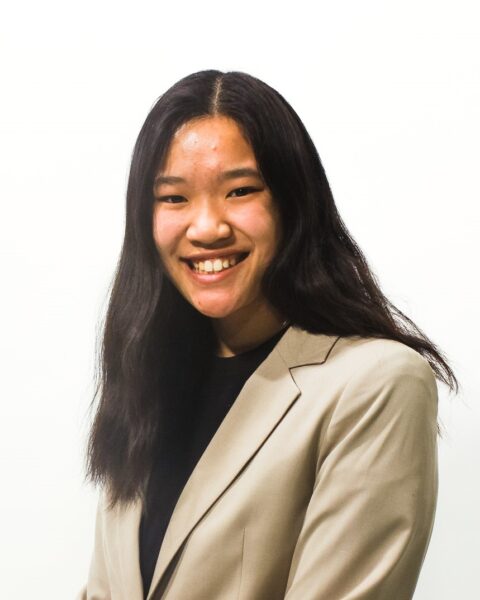 fNIRS-based Adaptive Language Mapping for People with Aphasia and Healthy Controls
fNIRS-based Adaptive Language Mapping for People with Aphasia and Healthy Controls
Awardee: Caela Hung Bouvé’25
Mentor: Erin Meier, Bouvé, Communication Sciences & Disorders
The purpose of my project is to investigate the underlying brain regions associated with language recovery for people with post-stroke aphasia. By analyzing results of functional Near-infrared Spectroscopy (fNIRS) during an adaptive language task (ALM) for people with aphasia (PWA) and healthy controls, I aim to draw conclusions about the neural reorganization of language for PWA; a highly debated topic in the field of cognitive neuroimaging. I plan to share my results at the RISE conference, and work towards writing a paper for publication.
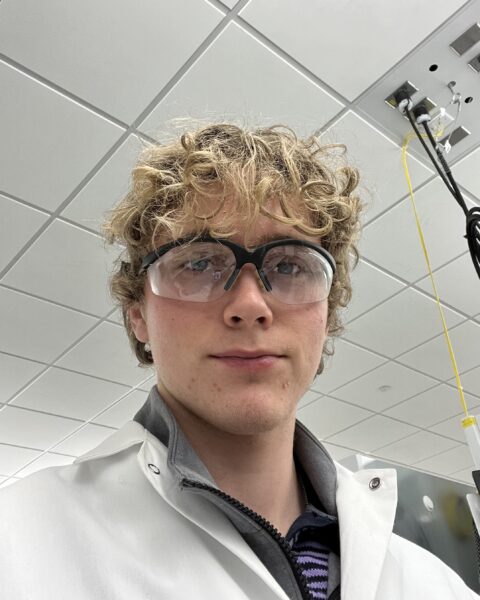 Development and Characterization of a GHB Detoxification B. subtilis Probiotic Strain
Development and Characterization of a GHB Detoxification B. subtilis Probiotic Strain
Awardee: Elliot Ingraham COS’25
Mentor: Yunrong Chai, COS, Biology
For my Honors in the Discipline project, I propose to develop a novel B. subtilis probiotic strain that can break down a common date rape drug, gamma-hydroxybutyrate (GHB) through the secretion of two enzymes, attK and attL. Further, my goal is to develop a modular Golden Gate cloning system in B. subtilis to clone these enzymes into B. subtilis and further characterize the effects of enzyme secretion on GHB detoxification through in vitro testing. Upon development of the GHB detoxification strain, I would develop a strain to break down HSL for interruption of quorum sensing.
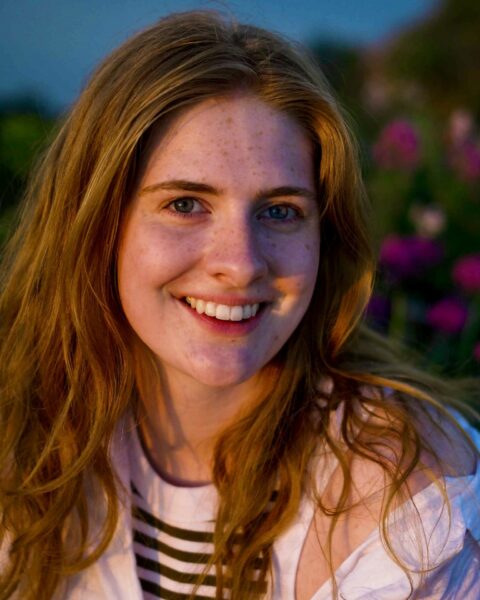 The Psychological Distance of Textile Waste
The Psychological Distance of Textile Waste
Awardee: Leann Jenks COS’26
Mentor: John Coley, COS, Psychology
This project investigates how psychological distance affects clothing consumption and disposal behaviors, with a focus on textile waste. Psychological distance refers to how removed an issue feels in terms of time, geography, social relevance, or likelihood. Through surveys with undergraduate Northeastern students, the study explores whether greater psychological distance leads to unsustainable clothing consumption and improper textile disposal. Anticipated outcomes include insights into how perceptions of textile waste drive consumer behavior and recommendations for interventions to reduce waste. Results will be shared via academic presentations, publications, and outreach initiatives to promote sustainable practices.
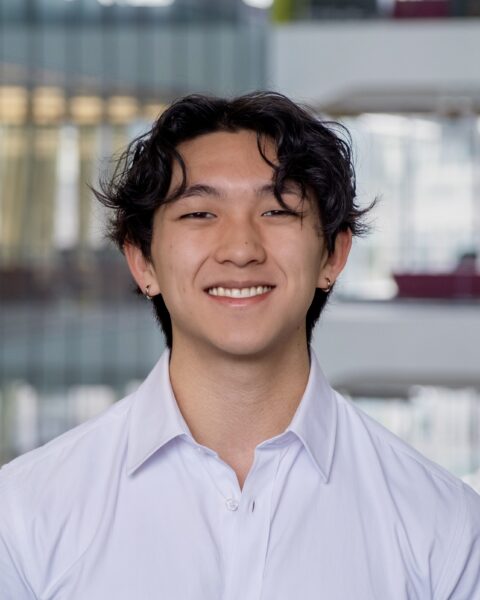 Examining Changes in Parent-Infant Vocal Engagements during First Year of Life in Feeding and Play
Examining Changes in Parent-Infant Vocal Engagements during First Year of Life in Feeding and Play
Awardee: Hayden Kamiya Bouvé’25
Mentor: Emily Zimmerman, Bouvé, Communication Sciences & Disorders
This research aims to investigate how parent-infant vocal interactions during feeding and play evolve over the first year of life. Building on data from the Suck to Early Motor Speech (StEMS) study, this research will quantify and compare the frequency and types of home language interactions in these two caregiving contexts. We hypothesize that play will encourage more turn-taking interactions, while feeding will have more adult vocalizations. This study will inform caregivers of strategies for caregiver-infant communication and language growth in infants. Findings will be shared at Northeastern University’s RISE and Symposium on Research in Child Language Disorders (SRCLD).
 Disrupting Quorum Sensing in A. baumannii: Effects on Bacterial Phenotype and Gene Expression
Disrupting Quorum Sensing in A. baumannii: Effects on Bacterial Phenotype and Gene Expression
Awardee: Pallavi Kamsani COS’25
Mentor: Veronica Godoy-Carter, COS, Biology
This research investigates the role of the quorum-sensing genes abaI and abaR in Acinetobacter baumannii and their effects on biofilm development and antibiotic resistance. Resistance profiles and gene expression will be studied using knockout mutants, and antibiotic resistance in planktonic and biofilm cells will be compared. Synthetic molecules will be used to reestablish quorum sensing in mutants lacking biofilms. This study aims to deepen the understanding of how quorum sensing influences bacterial phenotype and gene expression. I will present the findings at RISE and hope to share them at the Boston Bacterial Meeting (BBM).
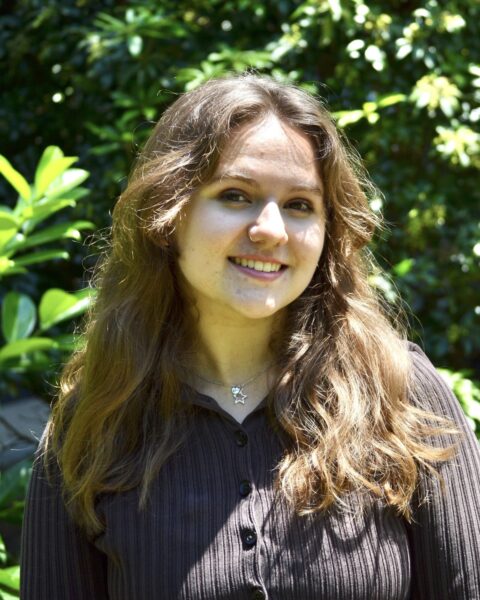 Exploring Nonverbal Communication and Adaptive Behavior in Autism and Neurodevelopmental Disorders
Exploring Nonverbal Communication and Adaptive Behavior in Autism and Neurodevelopmental Disorders
Awardee: Miranda Kannisto COS’26
Mentor: Kristina Johnson, COE, Electrical and Computer Engineering
The researcher investigates existing measures of communication and examines how different communication types vary in individuals with neurodevelopmental disorders. Requests, rejections, social interactions, comments, emotion expressions, and self-directed behavior are reported by parents after collecting a natural language sample of their minimally/non-verbal child. Correlation analysis examines how these functions relate to scores on the Vineland Adaptive Behavior Scale, a standardized assessment of adaptive behavior. Direct relationships are expected between adaptive behavior and social interactions & comments, functions typically underrepresented in non/minimally verbal individuals. The results of this study are to be published in the Journal of Neurodevelopmental Disorders (JNDD).
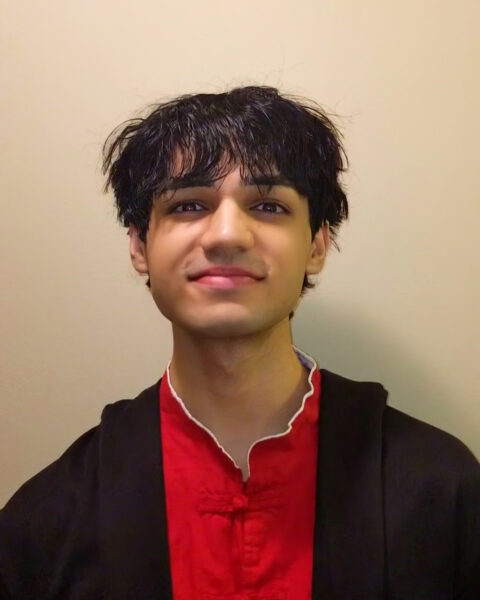 Inventing a Novel Self-care Multitool
Inventing a Novel Self-care Multitool
Awardee: Xeon Khan Khoury’26
Mentor: Jessica Linker, CSSH, History
This project seeks to create a modular, portable self-care device that combines scratching, massage, skincare, and personal grooming into one tool. Inspired by a personal experience in Nepal, it addresses discomfort and enhances convenience in self-care. Using CAD modeling and 3D printing, basic microelectronics, and user feedback from diverse demographics, the project aims to prototype a multi-functional device and validate its effectiveness through empirical testing. Outcomes include refined prototypes, a patent application, and sharing results at expos. This innovative tool aims to revolutionize personal wellness by merging versatility with accessibility, empowering users to redefine their self-care routines.
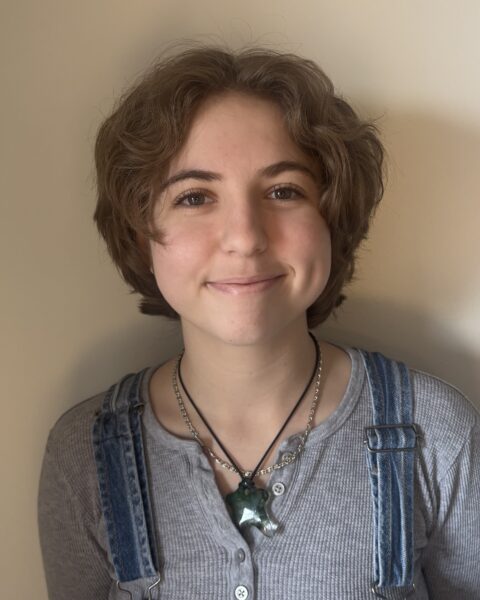 Synthesis of Streptothricin Sugar Core Analogs
Synthesis of Streptothricin Sugar Core Analogs
Awardee: Allyson Kleinmann COS’26
Mentor: Roman Manetsch, COS, Chemistry & Chemical Biology
Antibiotic resistance is a growing global health crisis, demanding innovative solutions. My project focuses on the synthesis of antibiotic candidates inspired by the natural product Streptothricin F, known for its ability to combat drug-resistant bacteria. Using advanced synthetic chemistry techniques, I aim to modify the sugar component of this molecule to improve its potency, reduce toxicity, and target pathogens more effectively. the sugar component will be synthesized, characterized then used to make the completed analog. Results will be shared at RISE 2025
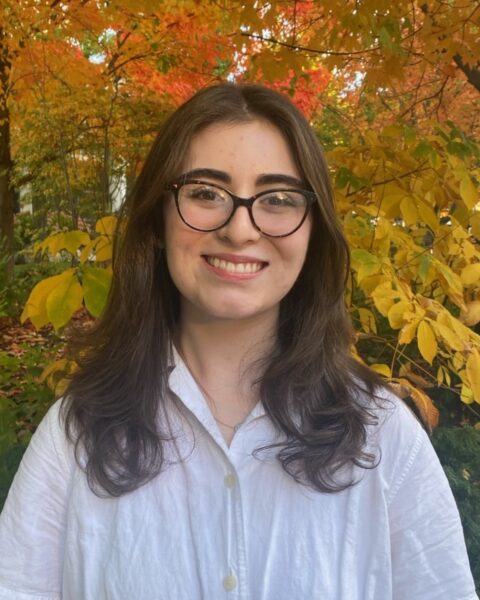 Optimizing Ultraviolet Laser System for Time-Resolved Photoemission Electron Microscopy
Optimizing Ultraviolet Laser System for Time-Resolved Photoemission Electron Microscopy
Awardee: Alexandra Kolefas COS’25
Mentor: Alberto de la Torre, COS, Physics
This project focuses on designing and aligning a laser for time-resolved photoemission electron microscopy (PEEM), a spectroscopy technique that images electron dynamics on ultrafast timescales. For this project, a Fourth Harmonic Generation setup will be implemented to convert an infrared laser into an ultraviolet laser. A new optical path will be developed to guide the laser beam from the DeLTA Lab into the adjacent EQUAL Lab, where the PEEM spectrometer is located. This project aims to advance the understanding of electron behavior in materials, a critical step toward improving the performance of semiconductor devices such as transistors.
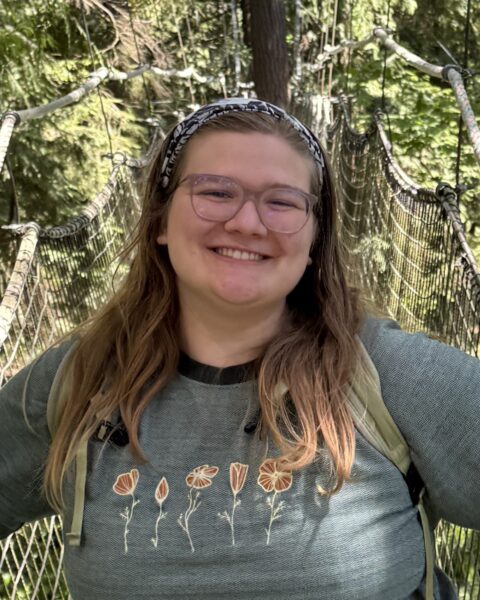 Investigating the Functions of Plausible DNA Polymerases Pol A1 and Pol A2
Investigating the Functions of Plausible DNA Polymerases Pol A1 and Pol A2
Awardee: Ava Kominski Bouvé’26
Mentor: Penny Beuning, Bouvé, Chemistry & Chemical Biology
This project focuses on determining the functions of predicted DNA polymerase proteins Pol A1 and Pol A2. A cell’s DNA is constantly under the threat of damage and there are many different sources of this damage. We hypothesize that Pol A1 and Pol A2 are both proteins involved in the DNA damage response. By expressing variants of these proteins with mutations at catalytically important sites, we can run assays with these proteins in order to determine their functions. The results of this work will be shared at the American Society for Biochemistry and Chemical Biology (ASBMB) conference.
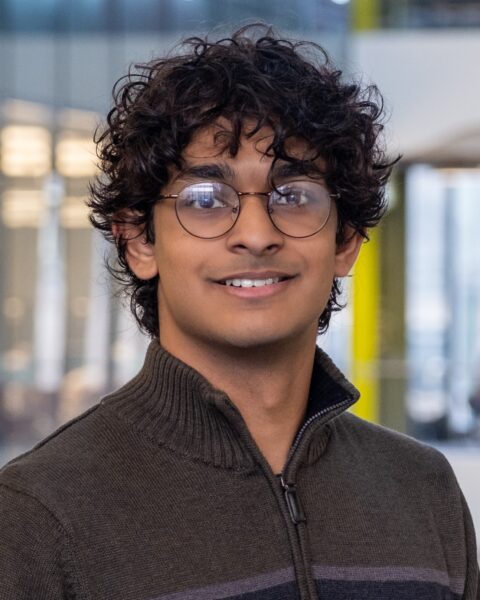 A Novel Profluorophore Investigating Serine Carboxypeptidase-Aided T. Cruzi Benzoxaborole Resistance
A Novel Profluorophore Investigating Serine Carboxypeptidase-Aided T. Cruzi Benzoxaborole Resistance
Awardee: Sriram Kompella COE’27
Mentor: Roman Manetsch, COS, Chemistry & Chemical Biology
Benzoxaborole prodrugs are novel therapeutics shown to be highly effective against Trypanosoma cruzi, the parasite responsible for Chagas disease. However, they are susceptible to resistance via mutations downregulating serine carboxypeptidase (SCP), an enzyme responsible for prodrug to active drug metabolism in T. cruzi. This project will synthesize a profluorophore-tagged prodrug, a non-fluorescent molecule metabolized to the active drug and a fluorescent molecule, to quantify SCP activity via fluorescence microscopy. Investigating a potential mechanism of resistance prior to deployment will give insight into considerations that need to be made for a disease targeting regions with limited access to healthcare resources.
 Drawing-Participation
Drawing-Participation
Awardee: Dezeng Kong Khoury’25
Mentor: Carlos Olascoaga, CAMD, Architecture
Drawing Participation (DP) is an online platform enabling real-time co-design by hundreds of users, including stakeholders, architects, and communities. It integrates machine intelligence to synthesize planning proposals, provide feedback, and mediate between data-driven and user designs. DP supports semantic models, rule-based grammars, generative models, and spatial version control for managing proposals. It fosters collaboration by allowing users to comment, develop common-ground models, and express community needs and perceptions.
 Non-targeted Detection of Chlorinated Disinfection Byproducts
Non-targeted Detection of Chlorinated Disinfection Byproducts
Awardee: Eshna Kulshreshtha COS’26
Mentor: Aron Stubbins, COS, Marine & Environmental Sciences
Safe drinking water is a basic human right and societal need that has been greatly affected by anthropogenic changes to the quality of source water. One threat to safe drinking water access is the formation of chlorinated disinfection byproducts (DBPs), which are an unfortunate tradeoff of the disinfection processes used by water utilities. This projects aims to test a non-targeted method of detecting DBPs in drinking water by the characterization of colored optical and molecular dissolved organic matter, since DOM is a well known precursor to DBPs. This work will support the development of an integrated drinking water monitoring framework.
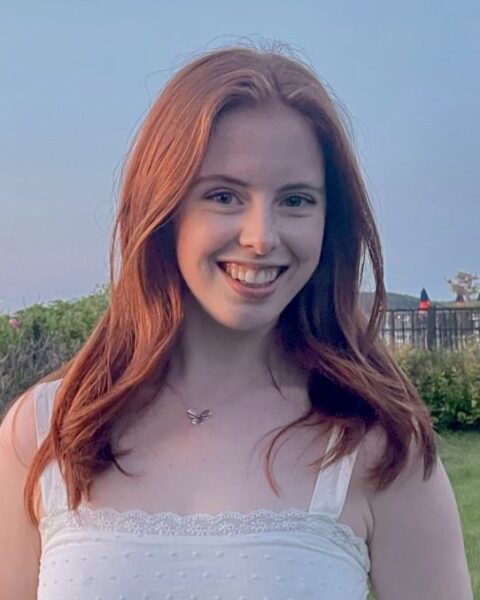 Characterizing the Adenosine Pathway During Peak and Off-Peak HIF1a Expression
Characterizing the Adenosine Pathway During Peak and Off-Peak HIF1a Expression
Awardee: Liliana Lachance Bouvé’25
Mentor: Stephen Hatfield, Bouvé, Pharmaceutical Science
Cancer is a convoluted disease impacted by environmental and genetic factors. While the cause may be idiopathic, the identification of specific pathways provoking cancer metastasis are prime targets for drug development. The adenosine pathway is utilized by tumors to promote their metastasis and survival. Research has demonstrated hypoxia, or low oxygen, can sustain the activity of this pathway. This research seeks to characterize the effect of hypoxia on expression of immune markers and genes involved in the adenosine pathway. I hope to include this research in future publications and present my results at RISE.
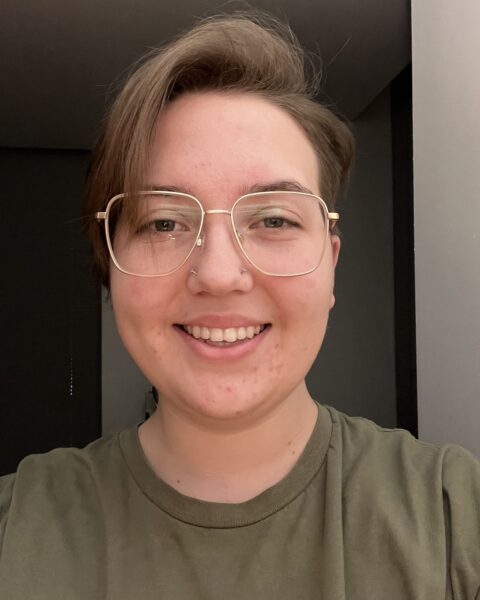 First-Principles Modeling of Single Atom Alloy Catalysts for Hydrogen Fuel Generation
First-Principles Modeling of Single Atom Alloy Catalysts for Hydrogen Fuel Generation
Awardee: Sarah LaCroix COE’27
Mentor: Qing Zhao, COE, Chemical Engineering
As we transition towards a sustainable energy future, hydrogen has emerged as a promising alternative fuel due to its high energy density and zero-carbon emissions upon combustion. Ammonia decomposition provides an environmentally friendly solution for hydrogen fuel storage, transportation, and generation. Although ruthenium can effectively catalyze this reaction, atomically dispersing it into a metal host in a single atom alloy (SAA) catalyst enhances both catalytic performance and economic viability. This study aims to design active and selective ruthenium-doped SAAs for ammonia decomposition using computational modeling. This work will be published in a peer-reviewed journal and presented at national conferences.
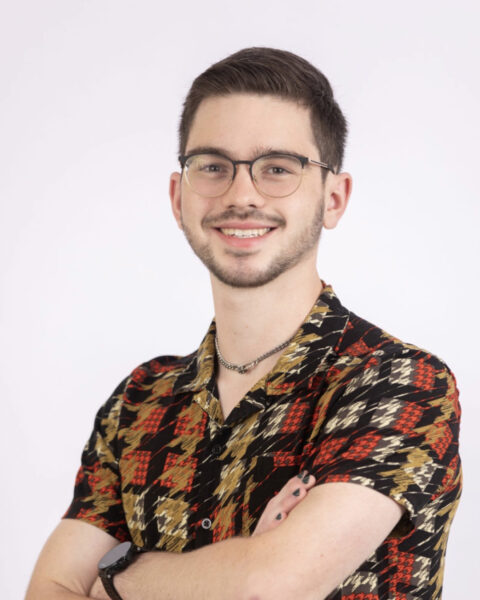 Delivery of DNA to Arabidopsis Thaliana Using Tobacco Mild Green Mosaic Virus
Delivery of DNA to Arabidopsis Thaliana Using Tobacco Mild Green Mosaic Virus
Awardee: Stephen Landry COE’25
Mentor: Adam Caparco, COE, Chemical Engineering
As food security becomes an increasing concern, genes involved in plant immune pathways have become popular gene engineering targets for protection against pathogens, but delivery methods must be further explored. In this project, a virus will be engineered to contain a reporter gene, which can be interchanged with immune genes, before being inoculated into plant cells. The efficiency of delivery, as well as plant health, will be monitored via fluorescence microscopy and compared with a carbon nanotube control. We expect improved internalization of the virus with minimal adverse effects, and results will be disseminated in a poster presentation and publication.
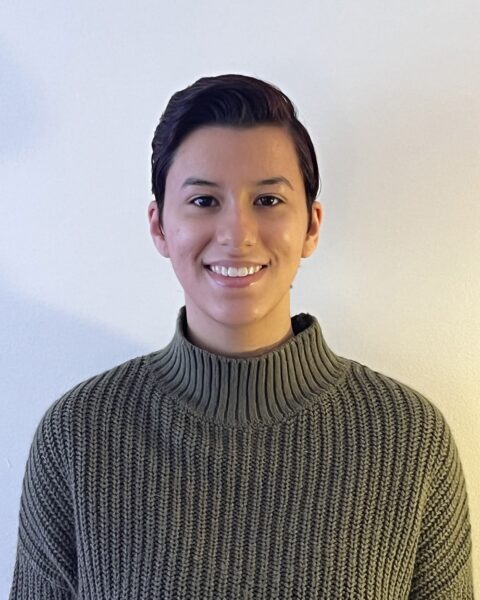
 Developing an Open-Source Forest Monitoring Drone System
Developing an Open-Source Forest Monitoring Drone System
Awardees: Adriana Lanza COE’25, Laura Tomarossi Teixeira COE’27
Mentor: Thomas Consi, COE, Electrical and Computer Engineering
Our team is working on creating a cost-effective, user-friendly, and open-source drone system for forest monitoring. This fixed-wing drone will capture high-resolution images and NDVI data to assess vegetation health and generate 3D models of forest structures. By leveraging advanced technologies like photogrammetry, we aim to provide a valuable tool for forest management and conservation. We believe that by making this technology accessible to a wider audience, we can contribute to sustainable forestry practices and environmental protection. We plan to share our results at MassRobotics and PEAK in the Spring of 2025.
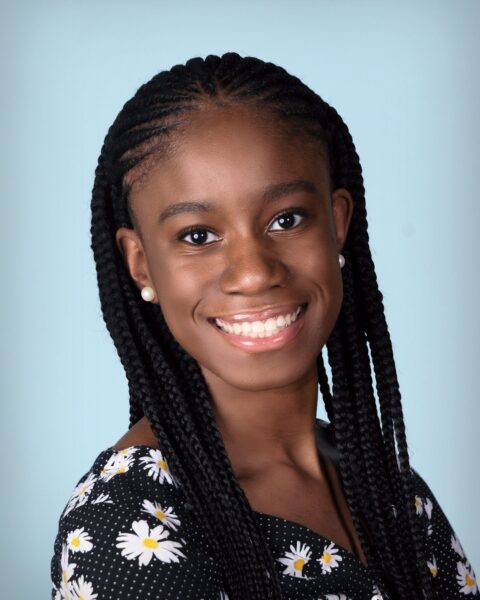 Investigating the Role of Orexin Neurons in Menopause
Investigating the Role of Orexin Neurons in Menopause
Awardee: Alyssa Lee COS’25
Mentor: Lesley Ricci, COS, Psychology
Many women face hot flashes, sleep disruptions, and increased stress responses due to menopause, which can negatively impact everyday life. Some research has shown that orexins may be a suitable therapeutic target for menopause symptoms, but menopause is understudied. Through this project, I will compare behavioral and sleep responses of mice with inhibited orexin neurons versus those with non-inhibited orexin neurons. Additionally, I will look at orexin activation in the brain of these mice. I hope to determine if orexin is a promising therapeutic target for menopause and present this work at the New England Science Symposium.
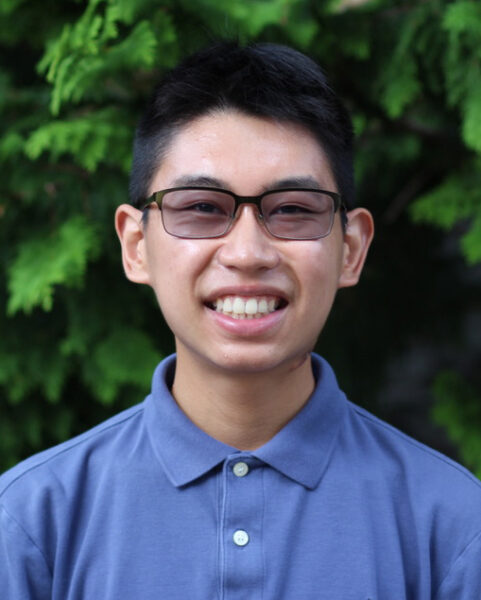 Neural Audio Processing on Mobile Phones
Neural Audio Processing on Mobile Phones
Awardee: Jethro R Lee Khoury’25
Mentor: Victor Zappi, CAMD, Music
This project aims to revolutionize virtual analog modeling of audio effects using deep learning, making high-quality sound effects accessible on mobile phones. By re-implementing and optimizing models for mobile hardware, the research seeks to overcome challenges in running complex, deep learning-based audio effects in real-time on resource-limited devices. The anticipated outcomes include a free, accessible workflow that transforms mobile phones into versatile virtual analog audio effects. The findings will be shared through a workshop at NU Sound, a poster at Northeastern’s RISE 2025, and a publication in the Journal of the Audio Engineering Society.
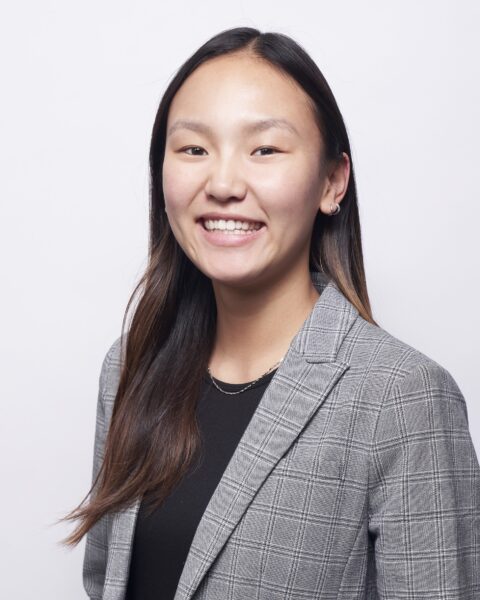 Mental Health Gallery: Raising Awareness of Mental Health Treatment Differences in Taiwan and the US
Mental Health Gallery: Raising Awareness of Mental Health Treatment Differences in Taiwan and the US
Awardee: Julia Lo COE’25
Mentor: Andrew Gillen, COE, Civil & Environmental Engineering
This project is a multimedia creative research project discussing mental health treatment differences in the U.S. and Taiwan. A physical and digital gallery containing a collection of photographs, professional learnings, and personal reflection will be curated to tell a story of what it’s like to deal with mental health struggles in Taiwan. The gallery will raise awareness about the lack of mental health resources in Asian communities, especially regarding the elderly to encourage systematic change to break the stigma surrounding mental health in Asia.
 Synthesis of Novel Antimalarials to Improve Aqueous Solubility
Synthesis of Novel Antimalarials to Improve Aqueous Solubility
Awardee: Caroline Lynch COS’26
Mentor: Roman Manetsch, COS, Chemistry & Chemical Biology
Malaria is an extremely prevalent and life-threatening disease. There is an urgent need for the discovery of novel antimalarials to address treatment gaps and emerging drug resistance. The Manetsch lab has developed a series of compounds that induce malaria parasite death at low concentrations with minimal toxicity. My project aims to improve the aqueous solubility of these compounds while maintaining potency. This will be achieved through the design, synthesis, and characterization of six analogs that incorporate heteroatoms into one of the peripheral rings. The findings of this work and related chemistry will be presented at RISE and other external conferences.
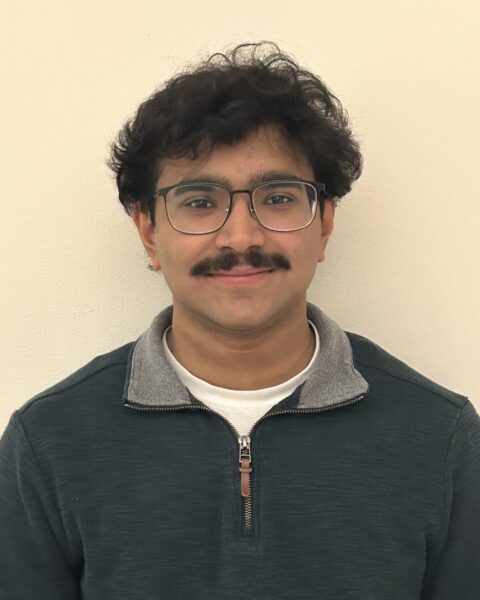 Investigating SUMOylation-Mediated Regulation of Kir2.4 in Pulmonary Arterial Hypertension
Investigating SUMOylation-Mediated Regulation of Kir2.4 in Pulmonary Arterial Hypertension
Awardee: Vishwa Madhusudhanan Bouvé’26
Mentor: Leigh Plant, Bouvé, Pharmaceutical Science
My project investigates how SUMOylation, a post-translational modification, regulates the inward-rectifying potassium channel Kir2.4 in pulmonary arterial smooth muscle cells, which play a critical role in pulmonary arterial hypertension (PAH). PAH is a chronic and progressive condition that leads to elevated blood pressure in the pulmonary arteries, causing significant strain on the heart and limited treatment options. Building on insights from Kir2.1, I aim to determine whether hypoxia-induced SUMOylation inhibits Kir2.4 by disrupting its interaction with PIP2, a crucial activator. Findings may reveal new mechanisms underlying PAH progression and potential therapeutic targets, shared at RISE and within the Plant/Logothetis Lab.
 BGC Awakening in Photorhabdus for Novel Antibiotic Discovery
BGC Awakening in Photorhabdus for Novel Antibiotic Discovery
Awardee: Joshua McDonald Khoury’25
Mentor: Kim Lewis, COS, Biology
As the challenge of antibiotic resistance in pathogenic bacteria grows, it is vital to expand our methods of antibiotic discovery. Due to their symbiotic relationship with nematodes, the Photorhabdus genus of bacteria has been an important source of novel antibiotics. My project seeks to continue my work in expanding our ability to mine these bacteria for antibiotics by awakening silent biosynthetic gene clusters through genetic engineering and observing these changes using transcriptomic analysis. I hope this will reveal new antibiotic candidates and I can share this method with others at the International Conference on Natural Product Discovery.
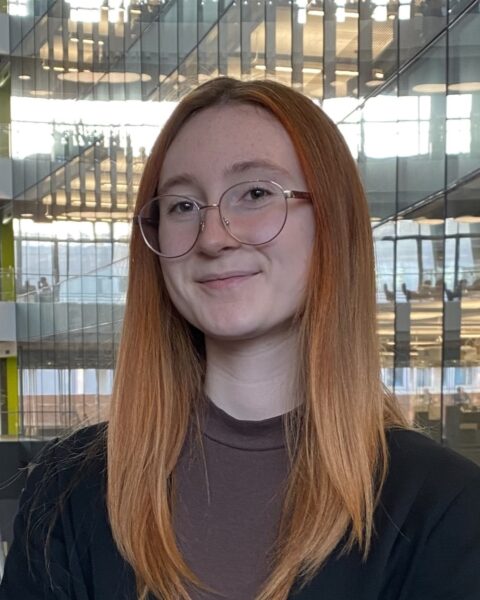
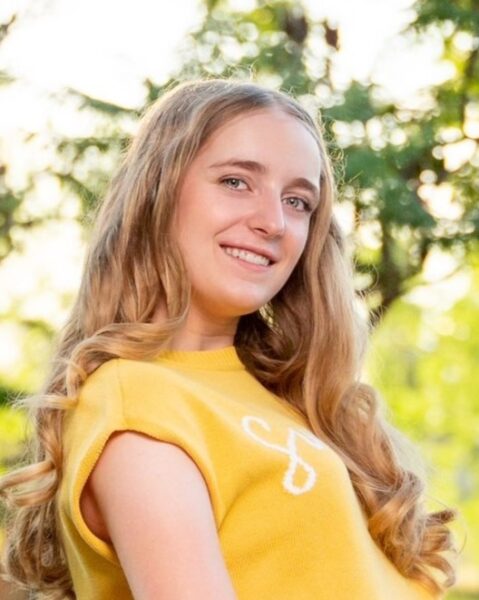 Intuitive Robotic Arm Control using Lie Groups
Intuitive Robotic Arm Control using Lie Groups
Awardees: Dani McLaughlin COE’26, Megan Farrington COE’27
Mentor: Peter Whitney, COE, Mechanical & Industrial Engineering
Existing IK Solver implementations for robotic arms are limited by issues which arise from naive mathematical implementations. A novel approach which avoids these issues uses Lie Groups to represent the position and motion of robotic arms. This project aims to determine the practicality of such an implementation for a 6-DOF robotic arm, as well as quantify the operation benefits. We plan to share this information at RISE, as well as at the University Rover Competition and the Museum of Science Computer Science Education weekend through our rover operation.
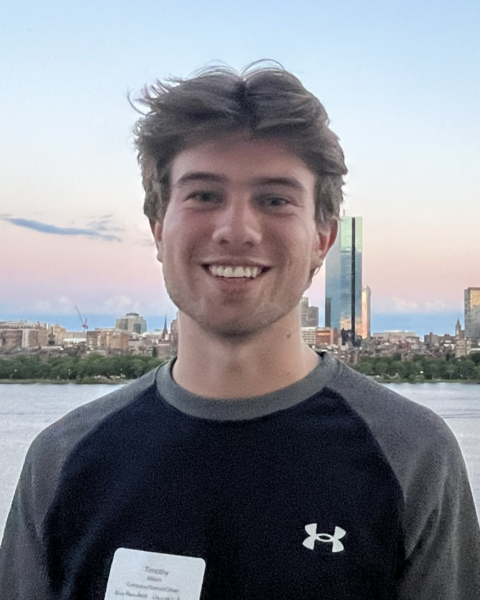 Implementation of a Raman Spectroscopy Platform to Monitor Cell Metabolism on Organ Chips
Implementation of a Raman Spectroscopy Platform to Monitor Cell Metabolism on Organ Chips
Awardee: Timothy Milich COE’26
Mentor: Ryan Koppes, COE, Chemical Engineering
Organ-on-chips are microfluidic devices containing multiple cell types, situated how they would be in the body, allowing physiologically relevant study of cell-cell interactions. Many in vitro data collection techniques are invasive and harmful to the cells, causing difficulty recording data at multiple timepoints. Raman spectroscopy is a non-invasive technique which can identify molecules based on chemical makeup. We aim to improve upon our previously developed Raman spectroscopy platform by increasing resolution and signal-to-noise ratio, allowing low concentration detection. With these enhancements, we plan to publish our methods of incorporating Raman spectroscopy into our organ-on-chip platforms to monitor cell metabolism.
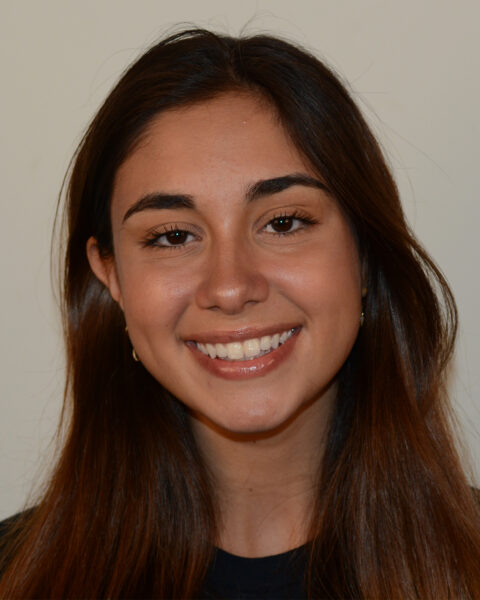 Exploring the Impact of L-Cis-Diltiazem on cGMP-Mediated CREB Signaling in C. Elegans
Exploring the Impact of L-Cis-Diltiazem on cGMP-Mediated CREB Signaling in C. Elegans
Awardee: Emma Nace COS’26
Mentor: Samuel Chung, COE, Bioengineering
I aim to explore how the pharmaceutical agent L-cis-diltiazem influences neuronal regeneration by targeting cyclic nucleotide-gated (CNG) channels. These channels regulate signaling pathways, including cGMP, which affect CREB, a key protein driving neuron repair. Using C. elegans, I will compare the regenerative effects of L-cis-diltiazem to genetic mutations affecting CNG channels. This work aims to uncover novel therapeutic strategies for promoting nervous system repair, with implications for neurodegenerative diseases and injuries. My findings will be shared at Northeastern’s RISE Conference and other regional talks, advancing our understanding of pharmacological modulation in neuronal regeneration and its potential in regenerative medicine.
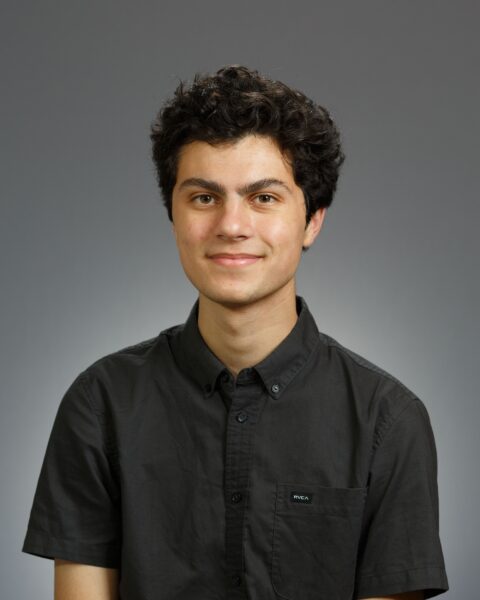 Female Reproductive Health Risks in Long-Duration Spaceflight: AI, IHC, and Western Blot Analysis
Female Reproductive Health Risks in Long-Duration Spaceflight: AI, IHC, and Western Blot Analysis
Awardee: Dillon Nishigaya COS’25
Mentor: Dori Woods, COS, Biology
With the rise of female astronauts’ prevalence in spaceflight, understanding the effects of spaceflight stressors (SS) on female fertility and ovarian function is paramount for long-term Lunar and Martian exploration goals. Spaceflight poses potential hazards to women’s reproductive health. Currently, it is not known how susceptible the female reproductive system is to exposure to SS. My project examines how SS impacts granulosa cell death and incidence of follicle atresia, aspects of ovarian health that are critical for reproductive health. Further, my project uses immunohistochemistry and imaging to train a machine learning model to classify biomarkers in the mammalian ovarian system.
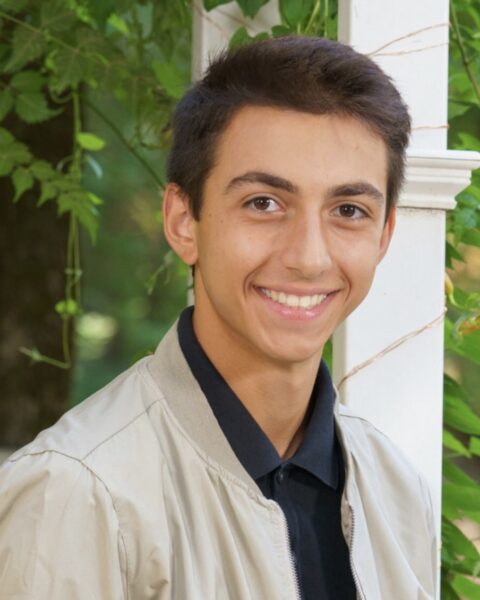 High-Level Path Planning Optimization and Implementation for a Quadrupedal Robot “Husky”
High-Level Path Planning Optimization and Implementation for a Quadrupedal Robot “Husky”
Awardee: Ruben Noroian COE’27
Mentor: Alireza Ramezani, COE, Electrical and Computer Engineering
Autonomous capabilities in robots have become increasingly valuable, offering improved efficiency and safety without human intervention. To facilitate autonomy, robots use algorithms to understand their environment and plan their path. “Husky”, one of a suite of robots in development at Northeastern’s Silicon Synapse Lab, combines legged and aerial capabilities to navigate narrow pathways such as pipes. Referred to as multi-modal locomotion, this combination introduces novel challenges in energy efficient, narrow-path motion planning. This project aims to optimize and test path planning algorithms on Husky for effective, robust terrain traversal. Results will be shared through RISE and external IEEE Robotics conferences.
 Synthesis of Recyclable Self-Healing Thermosets Utilizing Mechanically Reversible Diels–Alder Moiety
Synthesis of Recyclable Self-Healing Thermosets Utilizing Mechanically Reversible Diels–Alder Moiety
Awardee: Anika Parekh COS’25
Mentor: Diego Alzate-Sanchez, COS, Chemistry & Chemical Biology
Each year, 44 million tons of thermoset plastics enter the waste stream, largely due to their strong covalent crosslinks, making them difficult to recycle. This project aims to integrate dynamic, reversible bonds into covalent adaptable networks (CANs) to create recyclable thermosets. By using a Diels-Alder adduct, I will make previously unrecyclable materials recyclable. I will also test mechanical activation as a gentler alternative to heat for reprocessing these dynamic elastomers. The results will be shared through presentations at conferences like RISE and NSCRC, contributing to the development of sustainable materials and innovations in plastic recycling.
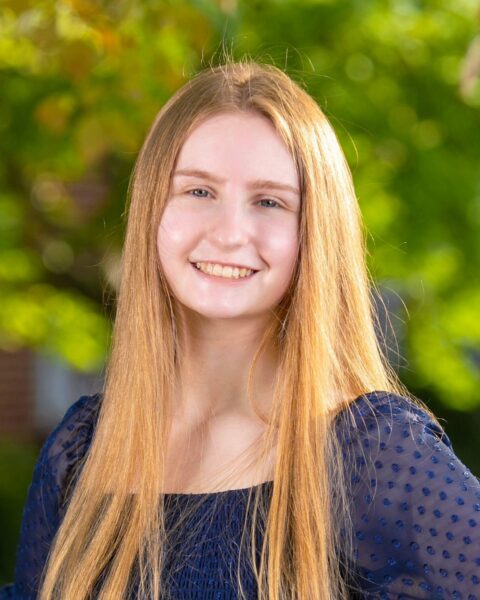 SIRIUS
SIRIUS
Awardee: Page Patterson COE’27
Mentor: Mallesham Dasari, COE, Electrical and Computer Engineering
SIRIUS (Spacesuit Immersive Reality Integrated Utility System) is an extended reality system designed to provide astronauts with a dynamic heads-up display for lunar pressurized rover and extravehicular activity scenarios. It enhances astronaut performance by visualizing scientific data in an artificial reality workbench. Additionally, SIRIUS autonomously navigates the pressurized rover to and from mission sites using advanced perception, planning, and mobile robotics techniques. We plan to test and share our work during the NASA SUITS Challenge in May and further share it during outreach events and on social media under the Northeastern SEDS Instagram.
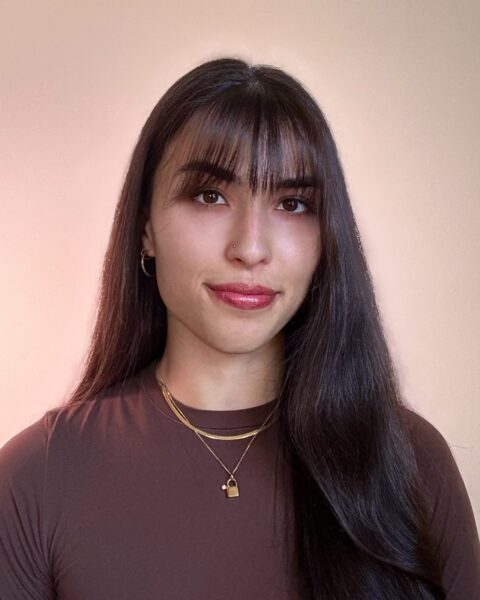 Dose-Dependent Changes in Global Brain Activity and Functional Connectivity With Exposure to Ibogain
Dose-Dependent Changes in Global Brain Activity and Functional Connectivity With Exposure to Ibogain
Awardee: Priya Rai COS’25
Mentor: Craig Ferris, COS, Psychology
Opioid addiction is a critical health crisis, with over 100,000 overdose deaths in the U.S. in 2022. Current treatments have limitations, prompting the exploration of ibogaine, a psychoactive plant-derived compound with unique effects on brain plasticity and neurotransmission. This study aims to evaluate ibogaine’s potential to modulate brain activity and treat oxycodone addiction. Using MRI in awake rats, this study investigates dose-dependent changes in brain connectivity and activity. Additionally, behavioral tests will assess ibogaine’s ability to block drug-seeking behavior. The results will offer insights into innovative, non-opioid approaches to addiction treatment and will be presented at Northeastern’s RISE.
 Characterizing the Functional Role of Mechano-Sensitive Ion Channels in Axolotl Limb Regeneration
Characterizing the Functional Role of Mechano-Sensitive Ion Channels in Axolotl Limb Regeneration
Awardee: Maren Ritterbuck COS’26
Mentor: Sandra Shefelbine, COE, Bioengineering
Bone cells sense mechanical cues through mechanosensitive ion channels. Mechanical feedback via these channels is crucial for proper skeletal development and mechanoadaptation. However, the role of mechanotransduction in bone regeneration remains poorly understood despite offering valuable insight into fracture repair therapies. This project will characterize the role of mechanosensitive ion channels in axolotl limb regeneration at both tissue and cellular levels through treatment with mechanosensitive ion channel antagonists. Expected changes in blastemal growth, cellular proliferation, and chondrogenesis will be analyzed through light sheet microscopy, calcium signaling, and in situ hybridization with findings shared via an external publication and poster presentations.
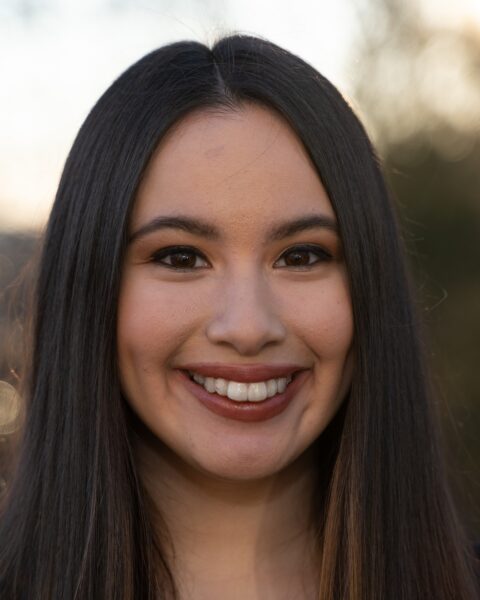 Characterization of Basolateral Amygdala Neuronal Activity Following Early Life Adversity
Characterization of Basolateral Amygdala Neuronal Activity Following Early Life Adversity
Awardee: Isabel Roman Bouvé’25
Mentor: Heather Brenhouse, COS, Psychology
The purpose of my project is to use RNAscope and QuPath to understand the developmental trajectory of changes in neuronal activity in the basolateral amygdala induced by exposure to early life adversity, which contribute to risky behaviors. This is important to understand because increased risk taking is related to substance use disorders (SUDs), which are an emerging public health crisis. The information gained from this project can be used to inform treatments, therapies, and diagnostic criteria for individuals suffering from SUDs. The results will be presented at RISE and submitted as part of a larger publication.
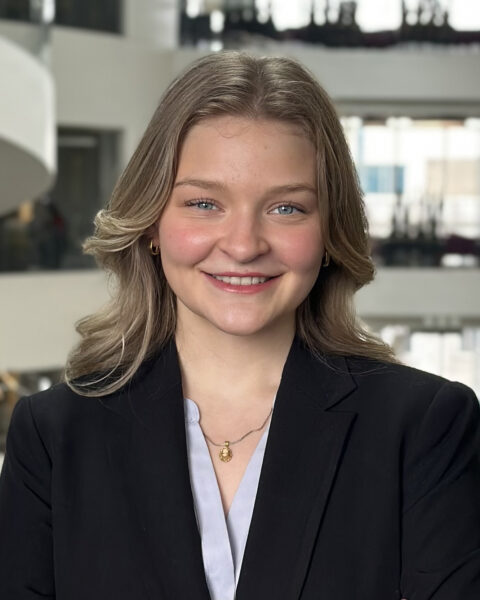 Thermodynamics and Transport of Peptide Drugs and Intestinal Mucin Systems
Thermodynamics and Transport of Peptide Drugs and Intestinal Mucin Systems
Awardee: Maeve Ryan COS’26
Mentor: Steve Lustig, COE, Chemical Engineering
Biologic medications are a class of treatments which hold great promise, however they often require intravenous injection due to their large size. If biologics, including peptides, could be delivered orally, they would become more accessible to patients. The greatest barrier to oral delivery is the mucin layer of the intestine, which blocks drugs from entering the bloodstream. In this project we will analyze the thermodynamics of a developing delivery vector: milk derived exosomes. Using advanced analysis techniques we will compare thermodynamic and molecular interactions of peptide drugs and peptides encased in exosomes to inform the future of peptide drug delivery.
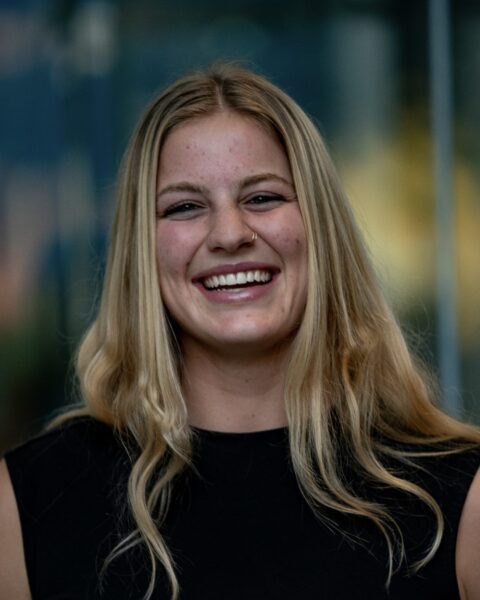 Impacts of Local Adaptation and Genetic Diversity on Eastern Oyster Body Condition
Impacts of Local Adaptation and Genetic Diversity on Eastern Oyster Body Condition
Awardee: Zea Segnitz COS’25
Mentor: Katie Lotterhos, COS, Marine & Environmental Sciences
I seek to investigate how local adaptation and intraspecific genetic diversity impact the body condition of the Eastern oyster in changing environmental conditions. The study involves ten distinct oyster populations in a common garden experiment in the Chesapeake Bay. I will sample and calculate the condition index for 900 oysters over the course of a year. I anticipate that this research will highlight local adaptation as a mechanism impacting the fitness of populations in varying environmental conditions, and underscore the importance of genetic diversity for conservation and restoration. I plan to present my results at the Evolution conference.
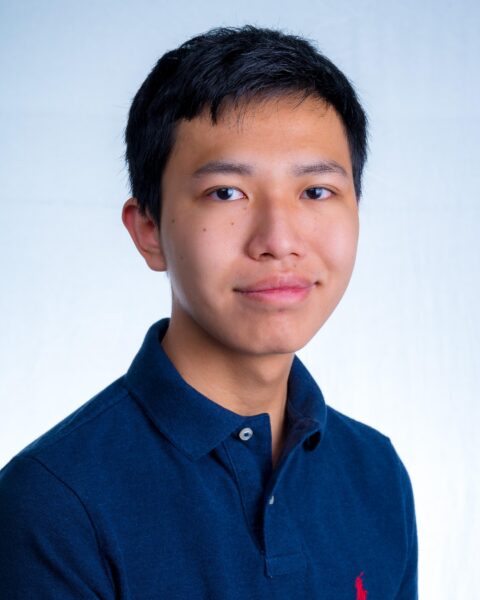 PBPK Modeling to the Human Population for Enhanced Precision of Oral Antipsychotic Drug Development
PBPK Modeling to the Human Population for Enhanced Precision of Oral Antipsychotic Drug Development
Awardee: Daniel Shen Bouvé’28
Mentor: Jie Shen, Bouvé, Pharmaceutical Science
My project focuses on using a computer-generated Physiologically Based Pharmacokinetic (PBPK) model based on the drug quetiapine in rats and increasing its functionality and predictability to be useful in humans. This improved model aims to appropriately scale up the Quetiapine absorption, distribution, metabolization, and excretion to match the human standard. Showing the model’s scalability across species will help minimize the need for animal testing, decrease the time for drugs to enter the market, and further the development of personalized medicine. Findings and the final model will be shared at RISE and the AAPS PharmSci360 conference.
 Revealing the Mechanisms of Bat NLRP3 Mediated Inflammasome Activation
Revealing the Mechanisms of Bat NLRP3 Mediated Inflammasome Activation
Awardee: Christine Shin COS’27
Mentor: Desislava Raytcheva, COS, Biology
My project investigates bats’ unique immune system that makes them excellent carriers of disease. I focus on the NLRP3 inflammasome, a key player in immune response, which has dampened activation in bats compared to humans. Using molecular cloning, protein expression and isolation, and cryo-electron microscopy, I will investigate the structural differences in bat NLRP3 isoforms that reduce immune responses. Results will be shared through the RISE event and a collaborative publication with my mentor. Understanding bat immune system mechanisms can enhance our ability to predict and prevent viral outbreaks while also giving insights for therapeutic options of inflammatory diseases.
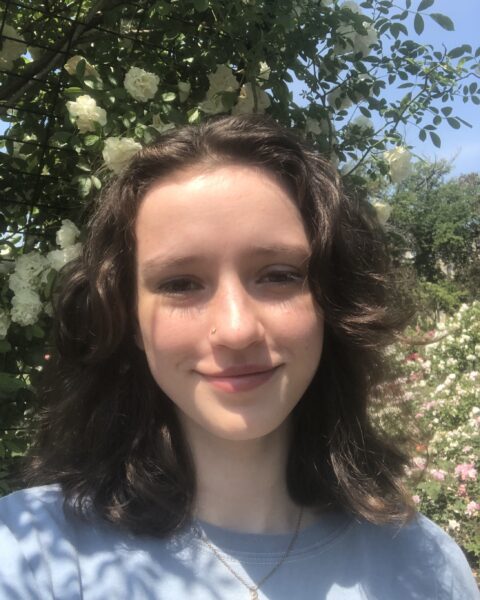 RIZE MA Harm Reduction Training (HaRT) Program Evaluation
RIZE MA Harm Reduction Training (HaRT) Program Evaluation
Awardee: Ellie Steele COS’25
Mentor: Lori Gardinier, CSSH, Human Services
This project evaluates RIZE Massachusetts’ HaRT program, which is designed to educate Masters of Social Work students in harm reduction and increase the number of BIPOC social workers in the field of substance use. Through qualitative data collection, this project will determine whether the HaRT program meets its original goals, suggest potential improvements, and determine if there is a viable path for replication of the program on a larger scale. The project also includes the creation of a harm reduction workbook for students. This semester will include a multi-year comparison and creation of an alumni interview protocol.
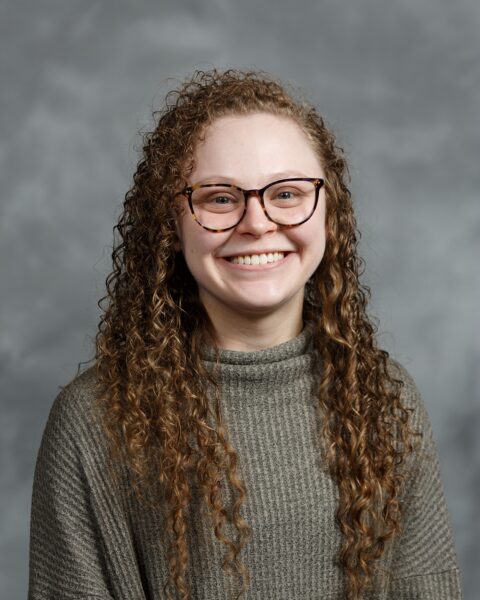 Vascularized Microfluidic Model of Stromal TNBC-Lung Metastasis to Assess Treatment Responsiveness
Vascularized Microfluidic Model of Stromal TNBC-Lung Metastasis to Assess Treatment Responsiveness
Awardee: Madeline Szoo COE’25
Mentor: Cynthia Hajal, COE, Mechanical & Industrial Engineering
This work will build on existing research to develop predictive vascularized tumor models for preclinical assays. Specifically, this project aims to develop a microfluidic triple-negative breast cancer metastatic lung model, characterize changes to the extracellular matrix and blood vessel permeability in the tumor microenvironment associated with stromal composition, and assess immune response following treatment. Ultimately, this work has far-reaching clinical implications and will elucidate factors that contribute to chemoresistance and cancer progression. I will disseminate this work through presentations at the American Society for Biomechanics (ASB) Annual Meeting and the Northeastern University RISE Expo, as well as in peer-reviewed publications.
 Plant UDP-glycosyltransferase in Cardiotonic Steroid biosynthesis
Plant UDP-glycosyltransferase in Cardiotonic Steroid biosynthesis
Awardee: Mark Teh COS’27
Mentor: Jing-Ke Weng, COS, Chemistry & Chemical Biology
Cardiotonic steroids are a class of steroidal lactones widely found in plants. One lead example is digoxin, a US FDA-approved drug, isolated from foxglove (Digitalis lanata), for treating various heart conditions by inhibiting Na + /K + ATPases. Despite their evident utility, the biosynthetic pathway of cardiotonic steroids remains elusive. Here, this proposed study seeks to characterize the glycosylation of the cardiotonic steroid scaffold – the last of 3 key tailoring modifications in accessing favorable pharmacokinetics to be detailed. Successful elucidation will in part confer a more tunable and engineerable production pipeline for digoxin and its cardiotonic steroid counterparts.
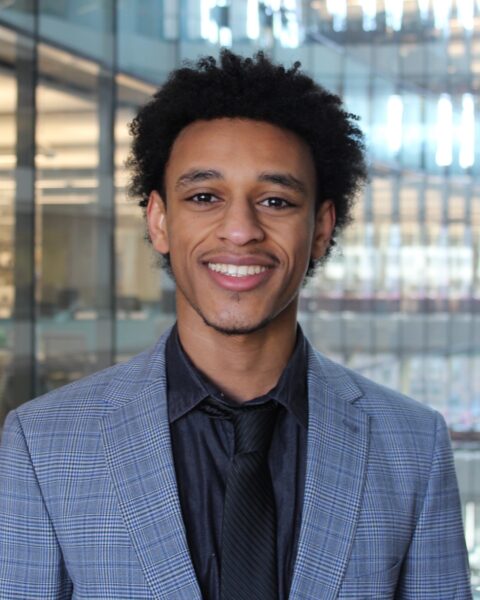 Characterizing Extracellular Polymers of Bacillus sp. Biofilm from the Atacama Desert
Characterizing Extracellular Polymers of Bacillus sp. Biofilm from the Atacama Desert
Awardee: Nathan Thewedros COS’25
Mentor: Yunrong Chai, COS, Biology
Environmental bacteria commonly live in multicellular communities or biofilms. Biofilm is composed of sugars, structural proteins, and hydrophobins which play a role in preventing plant pathogenesis. Differences in this composition may contribute to functional variances that we commonly observe between environmental isolates and our lab-grown strain. As the driest desert in the world, the Atacama is a promising site for unique biofilm characteristics that have greater resistance to degradation and therefore have positive environmental implications. I plan to investigate this by quantifying the sugar-to-protein ratio of the biofilms. I will share my findings at RISE and Boston Bacterial Meeting (BBM).
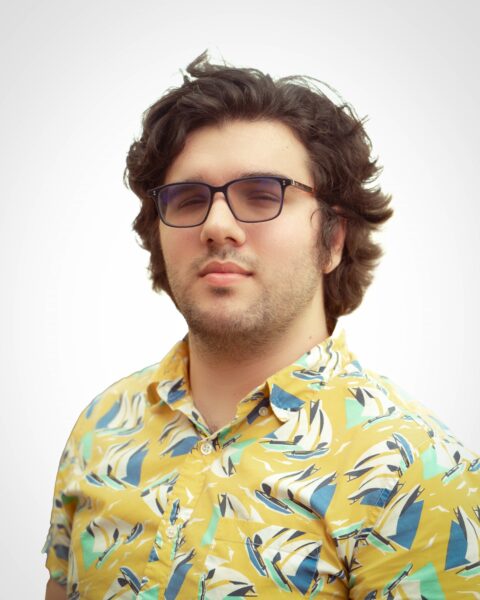 Random Circuit Perturbation (RACIPE) for Chemical Reaction Networks
Random Circuit Perturbation (RACIPE) for Chemical Reaction Networks
Awardee: Aidan Tillman COE’25
Mentor: Mingyang Lu, COE, Bioengineering
Ordinary Differential Equation (ODE) models in systems biology are often simple to derive, but difficult to utilize due to the presence of a high quantity of kinetic parameters which are usually either very difficult or impossible to elucidate from experimental data. In the study of gene regulatory circuits, the Random Circuit Perturbation (RACIPE) algorithm was created to solve this problem by creating an ensemble of models via random sampling of parameters. My goal is to develop an R package that extends RACIPE to chemical reaction networks with mass-action kinetics and publish it to the Bioconductor repository.
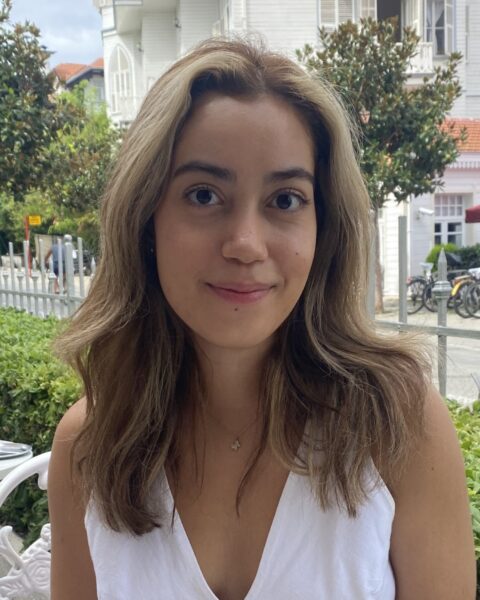 Age-Specific Curfew Effects on COVID Mortality: Evidence from Turkey
Age-Specific Curfew Effects on COVID Mortality: Evidence from Turkey
Awardee: Ayse Tumturk Khoury’25
Mentor: Bilge Erten, CSSH, Economics
Many countries have implemented lockdown and curfew measures during the COVID-19 pandemic. While research on lockdowns reported benefits such as better air quality and reduction in infections, concerns such as financial burdens and worsening mental health were also detailed. Turkey followed an unorthodox restriction policy that only targeted adults age 65 and older. Utilizing this setup, we design a regression discontinuity design comparing the number of deaths between cohorts born before 1956 and those born during and after 1956. We anticipate to present the results at RISE and write a research paper for publication.
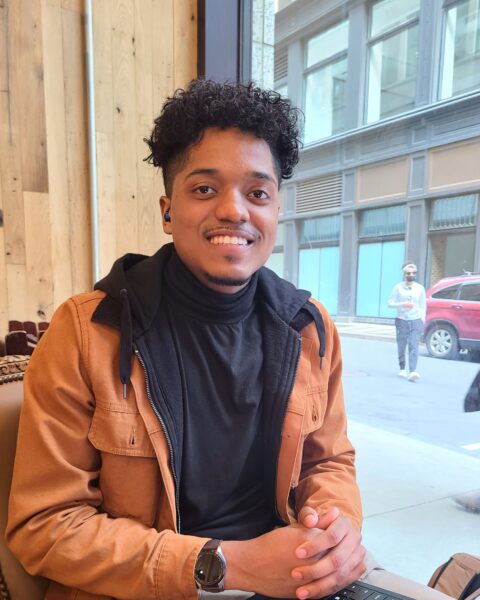 Biological Shield: Investigating UV Resistance in Extremophilic Bacteria
Biological Shield: Investigating UV Resistance in Extremophilic Bacteria
Awardee: Chello Twahirwa COS’25
Mentor: Yunrong Chai, COS, Biology
This project investigates the role of bacterial pigments in providing UV resistance to extremophilic microbes from the Atacama Desert, one of the harshest environments on Earth. By integrating UV exposure experiments, genomic analysis, and pigment purification and stability tests, the research seeks to uncover how these pigments mitigate oxidative stress and contribute to microbial survival. The study will reveal fundamental insights into microbial adaptation, while exploring applications like UV-resistant coatings and bioactive compounds. Results will be presented at the RISE Expo, microbiology conferences, and through peer-reviewed publications, contributing to advancements in microbiology and biotechnology.
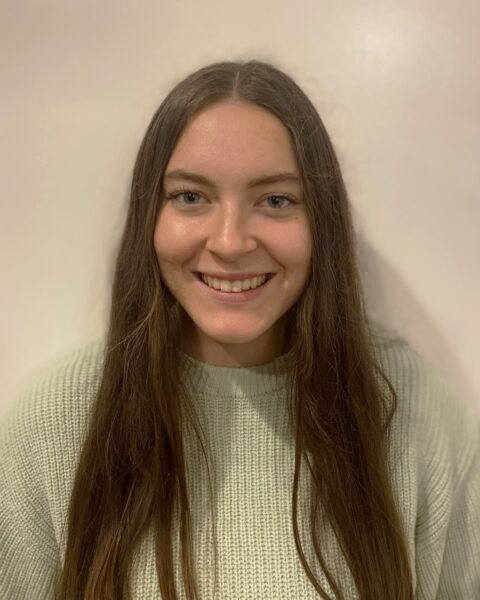 Non-Faradaic Modification of Catalyst Activity for Alkyne Isomerization to Allenes and Dienes
Non-Faradaic Modification of Catalyst Activity for Alkyne Isomerization to Allenes and Dienes
Awardee: Tansey Vordonis COS’25
Mentor: Eugene Smotkin, COS, Chemistry & Chemical Biology
This investigation’s significance is conducting organic chemical transformations in a sustainable, and scalable manner for petrochemical and pharmacutical applications. This study utilizes an electrochemical flow reactor with a polymer exchange membrane (PEM) to leverage the non-faradaic modification of catalyst activity for product distribution tuning. By applying electrical potential to the cathode, a protonic current flows through the PEM, influencing cathodic acidity, and catalyzing the isomerization of 1-pentyne. Product distributions are quantified by an in-line gas-chromatograph and mass-spectrometer. This study will use palladium, platinum, and ruthenium as catalysts and include an in-situ IR mechanistic analysis with an operando reactor.
 Club Angel
Club Angel
Awardee: Sarah Waggoner CAMD’25
Mentor: Antonio Ocampo-Guzman, CAMD, Theatre
Club Angel is a multimedia exploration of queer art’s legacy within community spaces, inspired by Club Kids. Club Kids were queer innovators, exploring taboo aesthetics with eccentric looks. How did queer youth of the 1990s use cultural practices to create utopian spaces of belonging? How is this legacy present in today’s queer youth and future? Through a photo and video exhibition, Club Kids aesthetics will be placed in modern queer spaces, experimenting with space, movement, and intimacy. The exhibition combines prints, projections, and textiles, reflecting on where this art originated and building upon it with visions of a queer future.
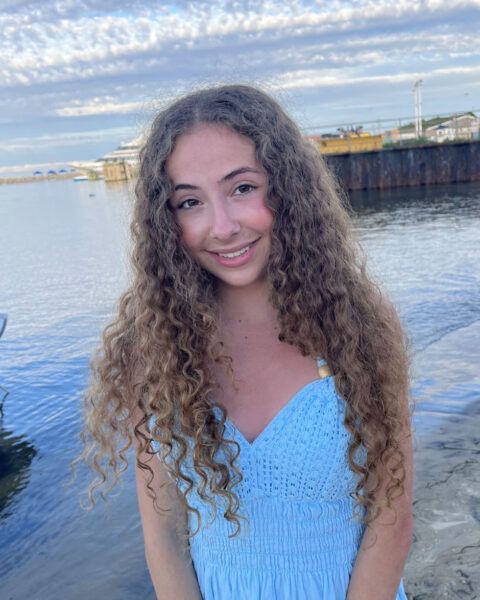 The Optimization of Zein Nanoparticles as Biologically Friendly Structural Colorants
The Optimization of Zein Nanoparticles as Biologically Friendly Structural Colorants
Awardee: Mia Wasilewski COS’25
Mentor: Leila Deravi, COS, Chemistry & Chemical Biology
An array of unique color-based phenomena in nature occur due to the sophisticated assembly of colloidal nanoparticles. The interferences of these nanostructures with visible light can produce vibrant colors or iridescence and is referred to as structural color. Zein is an protein from corn endosperm that is capable of forming colloidal nanoparticles when it is placed into water due to its ampiphillic nature. Zein nanoparticles will be optimized to assess their ability to serve as structural colorants that would span across the visible light spectrum, and serve as an environmentally friendly alternative to toxic and carcinogenic food and textile dyes.
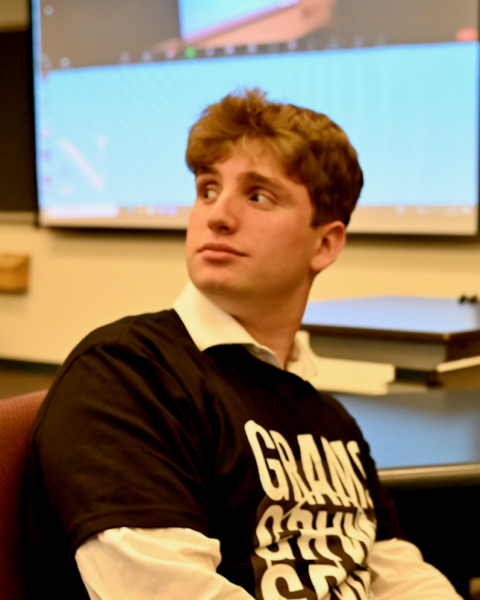 Developing Models of Non-Thermal Gamma Ray Emission from Blazars
Developing Models of Non-Thermal Gamma Ray Emission from Blazars
Awardee: Timothy Wessling-Resnick COS’26
Mentor: Tsuguo Aramaki, COS, Physics
Blazars are a subset of the luminous center of a highly active galactic nuclei constaining a supermassive black hole surrounded by an accretion disk. Additionally, jets emerge from the poles of the supermassive black hole accelerating particles to relativstic energies. Inverse compton scattering is the primary emission mechanism for photons in the gamma ray regime, and many sources possess a spectral peak in the MeV regime. This project will develop a model for the emission using a package called Naima, which can be further used to study other astrophysical properties. Results will be published in The Astrophysics journal.
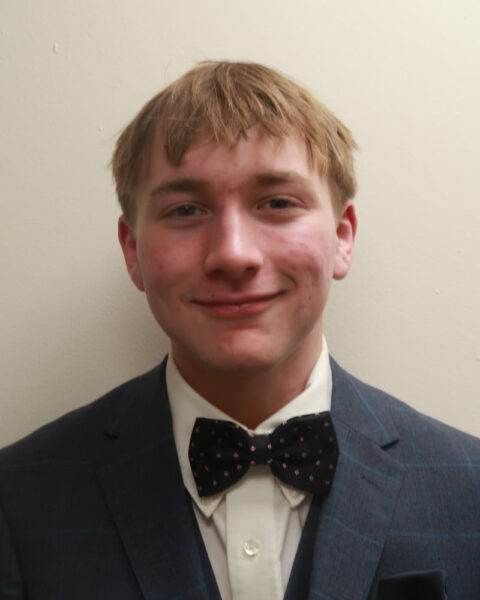 Characterizing the Impact of Diffuse Ions on Ribosomal Dynamics
Characterizing the Impact of Diffuse Ions on Ribosomal Dynamics
Awardee: Stephen Whitcomb COS’26
Mentor: Paul Whitford, COS, Physics
Ribosomes are complex biomolecular machines that are essential for all living organisms. Using recent developments in the field of biological physics, specifically models developed in the Whitford group, we may now simulate the ribosome with ions and study millisecond timescale dynamics. These simulations allow us to examine how specific ribosomal features drive large-scale conformational changes involved in key biological processes such as protein synthesis. My work will investigate how ions transiently associate and control the dynamics of the ribosome during P/E hybrid formation, a large-scale conformational rearrangement that is crucial to protein synthesis.
 Single-Cell Genome Sequencing of Somatic Mutations of Synuclein Pathological Human Neurons in Parkin
Single-Cell Genome Sequencing of Somatic Mutations of Synuclein Pathological Human Neurons in Parkin
Awardee: Samadhi Wijethunga COS’25
Mentor: Dami Ko, Bouvé, Nursing
My project investigates the genomic differences between neurons affected by alpha-synuclein aggregation, a hallmark of neurodegenerative diseases like Parkinson’s Disease, and healthy neurons. Using laboratory techniques, I plan to isolate diseased cells and amplify their DNA at the single-cell level, utilizing a newly optimized protocol for downstream mutational signature and burden analyses. By analyzing these somatic mutations, my research aims to uncover mechanisms driving neurodegeneration and inform future therapies. Results will be shared at RISE and Brigham and Women’s Hospital Neuroscience Day, bridging the gap between laboratory discoveries and improved patient care for those living with synuclein-related neurodegenerative disorders.
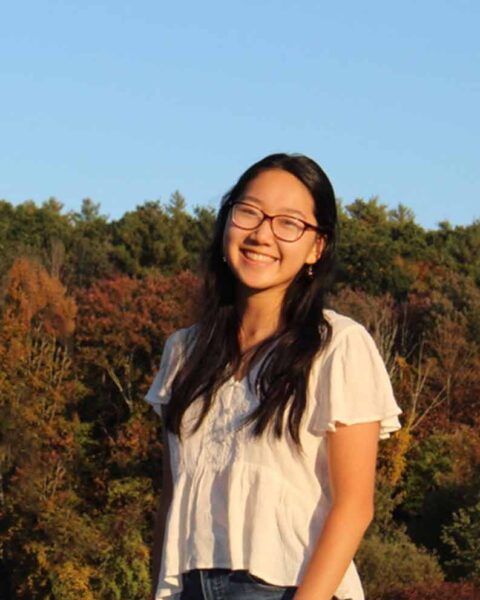 Fostering Community-Engagement in Operationalizing Climate Gentrification
Fostering Community-Engagement in Operationalizing Climate Gentrification
Awardee: Emily Wu Bouvé’25
Mentor: Patrice C. Williams, CSSH, Public Policy and Urban Affairs
Climate gentrification occurs when climate change effects, such as rising temperatures and sea levels, result in the increased property value in specific areas, driving the displacement of lower income and marginalized populations. This project seeks to leverage a community-based approach to addressing displacement risks by empowering urban residents in identifying risk factors, strengthening community identities, and enhancing adaptive capacity through collaborative data analysis and educational workshops. This project is part of a larger, comparative study in collaboration with a team in Barcelona, Spain. Project findings are expected to be presented at RISE 2025 and submitted to a peer-reviewed publication.
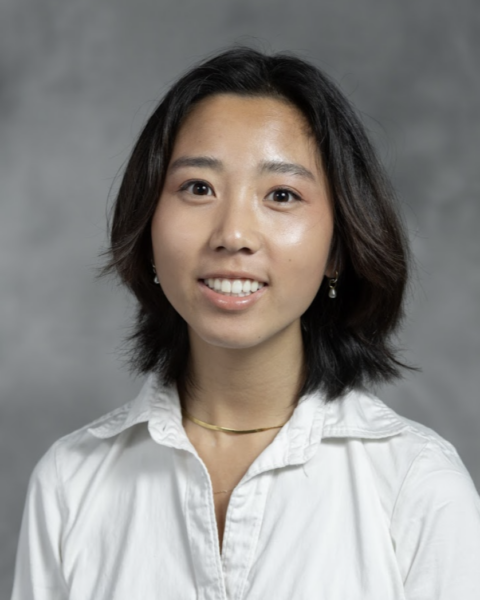 Critter Catcher
Critter Catcher
Awardee: Linda Yan COE’25
Mentor: Marguerite Matherne, COE, Mechanical & Industrial Engineering
The Critter Catcher intends to be a device that is designed for the humane capture and release of insects. Originally conceived as a Mechanical Engineering Capstone project, this endeavor aspires to become a transformative tool for advancing humane entomology research and can be used in practical applications for entomology researchers studying insect behavior, pollinator health, and general insect wellbeing. The goal of this project is also to fill the gap in humane insect capture research, hopefully leading to a research paper published in an open-access journal.
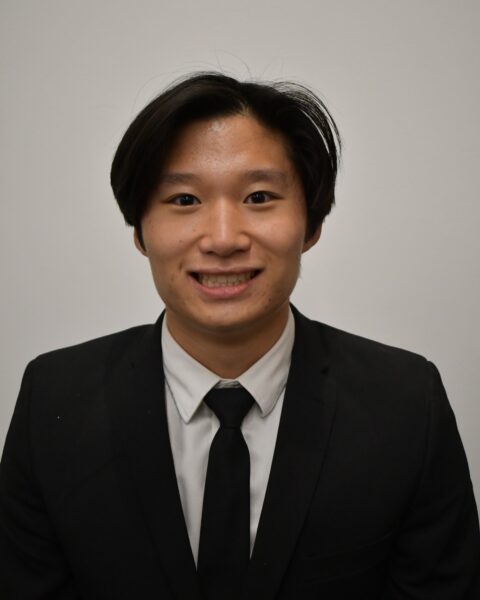
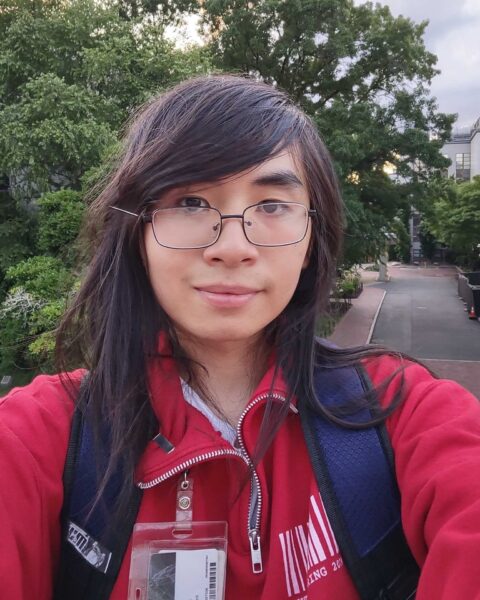 An Innovative Illumination Method – Coupling Widefield Microscopy with Darkfield Illumination
An Innovative Illumination Method – Coupling Widefield Microscopy with Darkfield Illumination
Awardees: Evan Yee COE’26, Kevin Mai COE’26
Mentor: Mohammad Abbas Yaseen, COE, Bioengineering
Neurodegenerative diseases like Alzheimer’s Disease, stroke, and Parkinson’s disease severely disrupt neuronal activity and cerebral hemodynamics. Studying these pathophysiologies is crucial to preventing these diseases in the future. Widefield Optical Intrinsic Signal Imaging (OISI) is a powerful field of microscopy used for simultaneously imaging different regions of rodent brains. The current method of delivering light from the LEDs is limited by the unwieldy and inefficient nature of a liquid light guide. The goal of this project is to replace the liquid light guide with an innovative method of illumination: using darkfield illumination with axicons and a specialized reflector.
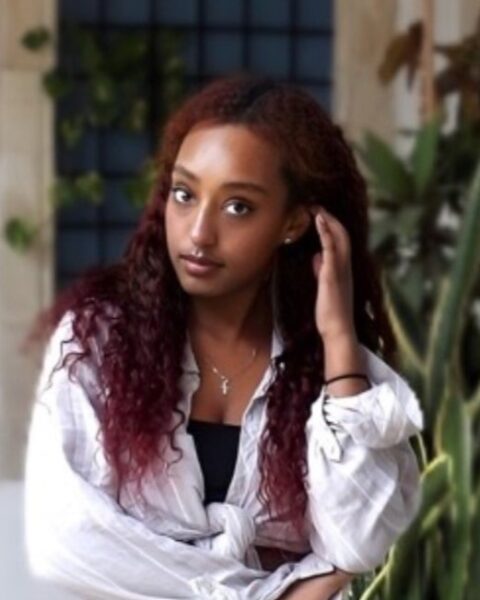 Elucidating the Role of Fatty Acid Saturations in Megakaryocyte Incorporation and their Effect in Membranes
Elucidating the Role of Fatty Acid Saturations in Megakaryocyte Incorporation and their Effect in Membranes
Awardee: Blen Yohannes Bouvé’26
Mentor: Mark Grabiner, COS, Biology
Platelets are essential for blood clotting, and low platelet counts (thrombocytopenia) can be life-threatening; Current treatments are limited, expensive, and often ineffective. This project investigates how fatty acids (FAs) influence platelet production by studying their impact on the membranes of megakaryocytes (MKs), the precursor cell to platelets. Using advanced techniques like Click-iT chemistry and FRAP, I aim to determine MK preferences for specific FAs (saturated vs. unsaturated) and how they impact membrane flexibility. Understanding these mechanisms may uncover new pathways to enhance platelet production and will be shared via presentations and publications.
